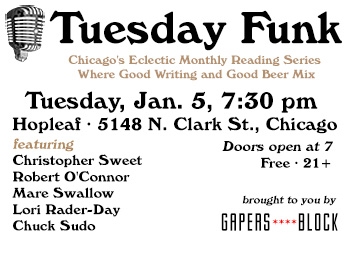
Branden Johnson's Heaven's Forgotten begins with the story of Moira, a young single mother, and her daughter, Penelope running from the fallen angel who is the girl's father. As the novel progresses, it becomes clear that Penelope is more than she seems and her father is not the only fallen angel looking for them.
The plot is structured much like an action movie complete with cross country road trips (I counted two per character), casually graphic murder, and amateurs picking up firearms. The bright side of the action movie structure is that the pacing keeps the story moving along. The main conflict represented by the fallen angel, Michael, resolves itself one third of the way through the book with minimal fanfare, leading the larger conspiracy to take the stage. The last two thirds of the book feel like an entire season of "Supernatural" minus Jensen Ackles and Jared Padalecki eye candy.
Continue reading this entry »
— Brianna Kratz
Books Tue Dec 15 2015
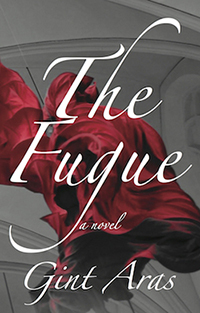 There is a long list of amazing local authors writing about Chicago and its nearby neighborhoods, but few of them do it with such poise as Gint Aras. His writing balances bold flourishes with a plainspoken beauty, which was in full display in his novel, Finding the Moon in Sugar. In that book Aras completely embodies his pot-laced Andy Nowak in the first person narrative, right down to the slang written words and diction. It was a deep character study that asked you to see the world through his eyes and ears. Aras' second novel, The Fugue, released by Chicago Center for Literature and Photography, is an entirely different beast. It is a disorienting and multi-layered tale that interlinks refugee families, communities, and art over multiple generations. There aren't books immediately deserve a second reading, but The Fugue is one of them.
There is a long list of amazing local authors writing about Chicago and its nearby neighborhoods, but few of them do it with such poise as Gint Aras. His writing balances bold flourishes with a plainspoken beauty, which was in full display in his novel, Finding the Moon in Sugar. In that book Aras completely embodies his pot-laced Andy Nowak in the first person narrative, right down to the slang written words and diction. It was a deep character study that asked you to see the world through his eyes and ears. Aras' second novel, The Fugue, released by Chicago Center for Literature and Photography, is an entirely different beast. It is a disorienting and multi-layered tale that interlinks refugee families, communities, and art over multiple generations. There aren't books immediately deserve a second reading, but The Fugue is one of them.
Continue reading this entry »
— Julian Ramirez
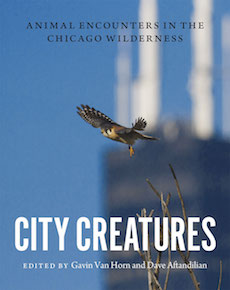 This month, University of Chicago Press published City Creatures: Animal Encounters in the Chicago Wilderness, a book of essays, poetry and art collected by Gavin Van Horn and David Aftandilian springing from the Center for Humans and Nature's City Creatures Blog. Book and blog work in tandem to advocate for the appreciation of nature within the city, conservation of threatened habitats and species, and ecology education for all. In his essay "A Tale of Two Squirrels and One City," Joel S. Brown writes that his students "...could see the concepts of ecology in action; they could see the relevance of the formerly abstract discussion of adaptations in the very characteristics and behaviors of the squirrels around them." City Creatures calls attention to the animals we share Chicago with and solidifies abstract concepts surrounding ecology and conservation.
This month, University of Chicago Press published City Creatures: Animal Encounters in the Chicago Wilderness, a book of essays, poetry and art collected by Gavin Van Horn and David Aftandilian springing from the Center for Humans and Nature's City Creatures Blog. Book and blog work in tandem to advocate for the appreciation of nature within the city, conservation of threatened habitats and species, and ecology education for all. In his essay "A Tale of Two Squirrels and One City," Joel S. Brown writes that his students "...could see the concepts of ecology in action; they could see the relevance of the formerly abstract discussion of adaptations in the very characteristics and behaviors of the squirrels around them." City Creatures calls attention to the animals we share Chicago with and solidifies abstract concepts surrounding ecology and conservation.
Continue reading this entry »
— Brianna Kratz
Books Tue Nov 10 2015
 If you love fiction and Chicago authors then you probably already know Dave Reidy. His first book, Captive Audience, is a collection of short stories with a Chicago take on music, comedy, sports, and family. His writing has humor and drama, and it explores human nature in a way that only a Chicagoan who has experienced and loved these topics only can. In his first novel, The Voiceover Artist, released by Curbside Splendor this week, he tackles similar ground: entertainment, family and relationships, and how they all intertwine.
If you love fiction and Chicago authors then you probably already know Dave Reidy. His first book, Captive Audience, is a collection of short stories with a Chicago take on music, comedy, sports, and family. His writing has humor and drama, and it explores human nature in a way that only a Chicagoan who has experienced and loved these topics only can. In his first novel, The Voiceover Artist, released by Curbside Splendor this week, he tackles similar ground: entertainment, family and relationships, and how they all intertwine.
Reading fiction, you have to suspend disbelief. Reading The Voiceover Artist it's a bit hard to imagine how main character Simon Davies, a man with a speech impediment who hadn't talked for years suddenly makes a name for himself in the tough world of voiceover work. But that's fiction's job, to create a reality where anything is possible. And Reidy does that here with the unique way in which he tells this story.
Continue reading this entry »
— John Wawrzaszek
Reviews Mon Oct 26 2015
Just in time for Halloween, Chicago's own Audrey Niffenegger has edited and illustrated a collection of her favorite ghost stories from Edgar Allan Poe to Kelly Link in Ghostly, a fairly nostalgic take on the genre featuring a lot of familiar names.
Continue reading this entry »
— Adam Morgan
Reviews Wed Sep 30 2015
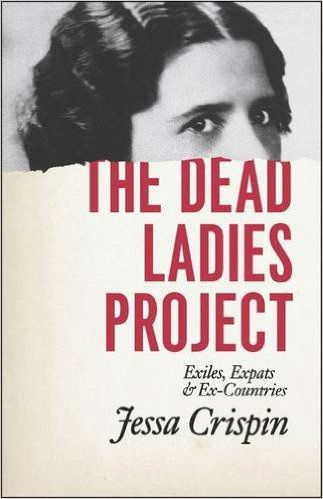 Jessa Crispin, the founder of the literary blog bookslut.com and the online magazine Spolia, and a former Chicagoan, recently wrote a memoir. The Dead Ladies Project will be released Oct. 6 by University of Chicago Press.
Jessa Crispin, the founder of the literary blog bookslut.com and the online magazine Spolia, and a former Chicagoan, recently wrote a memoir. The Dead Ladies Project will be released Oct. 6 by University of Chicago Press.
The book is one part travel diary and one part biography of famous intellectuals. Crispin spent a year and a half traipsing through Europe. She dedicates each section of her book to a different city and a different genius who at one time lived there.
The Dead Ladies Project is worth reading for the brief biographies alone. Crispin tells us about people who've never gotten as much attention as their life and work demands. Who was James Joyce's wife? Why does no one tell the story of half-sisters/lovers Claude Cahun and Marcel Moore playing tricks on the Nazis? What was father of Psychology William James's relationship with his own father like? Crispin details the lives of nine figures complete with their love affairs, run ins with the law, and a synopses of their life's work.
Continue reading this entry »
— Emma Terhaar
Reviews Wed Sep 30 2015
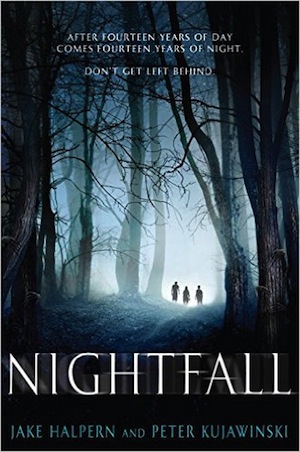 Nightfall by Jake Halpern and Peter Kujawinski (G.P. Putnam's Sons Books for Young Readers, Sept. 22, 2015)
Nightfall by Jake Halpern and Peter Kujawinski (G.P. Putnam's Sons Books for Young Readers, Sept. 22, 2015)
On the island of Bliss, 14 years of day are followed by 14 years of night. As the sun sets on the horizon, everyone prepares to migrate off of the island to wait out the long night. Locks are taken off doors, furniture is rearranged and tables are set. No one knows how or why these rituals began -- at least, no one is willing to talk about it. Nightfall focuses on three teens who are accidentally left behind as everyone flees night and the terrifying creatures that inhabit it.
The book was co-authored by investigative journalist Jake Halpern and former U.S. diplomat Peter Kujawinski as their jobs took them across the globe. Knowing that the manuscript was passed back and forth from India to Haiti and the Arctic Circle, it's easy to see that the authors' work lives inspired the book's themes.
Nightfall is very difficult to put down, it's low on magic and full of suspense and adventure. It reads like an edge-of-your-seat action movie. The book ends in a perfectly satisfying way, and leaves plenty of room for a sequel. If you are a fan of The Maze Runner or The Hunger Games, this book is for you.
— Jeremy Owens
Reviews Mon Sep 28 2015
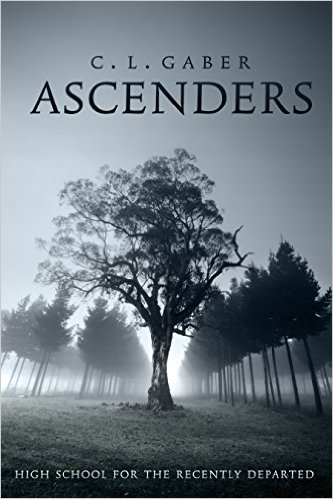
"No, this isn't heaven. It isn't hell. It's high school."
- C.L. Gaber, Ascenders
Walker Callaghan is your average 17-year-old suburban Chicago girl; she just happens to be dead. After a car crash, she finds herself in a middle realm that looks a lot like Michigan, where she attends The Academy, a school intended to teach the "Unformed" enough so they can ascend. In a world where there are no rules because you can't die twice, Walker falls for her classmate, bad boy Daniel Reid, and grapples with how to cope with loss--of life, and of those she cares about most.
Continue reading this entry »
— Brianna Kratz
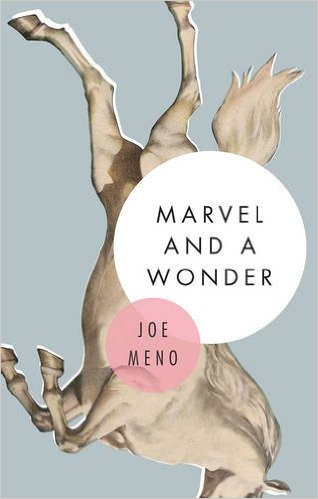 Marvel and a Wonder
Marvel and a Wonder
by Joe Meno
(Akashic Books, Sept. 1, 2015)
Jim Falls never expected a miracle. At age 71, his family is broken and his farm isn't far behind. "Already he had a presentiment--an unconscious belief--that the country, the world, was coming to an end." But one morning in mid-July, a stranger arrives on the farm with a bright silver trailer. Inside, a gift. A white mare, beautiful and healthy as a racehorse.
"But...but what for?" Jim asks the stranger. "I just get paid to deliver it," the man answers.
In his gritty new novel, Marvel and a Wonder, Chicago writer Joe Meno has reinvented himself again, exploring the haunting human and natural landscapes of the rural Midwest in the vein of the Coen brothers' Fargo and No Country for Old Men.
Continue reading this entry »
— Adam Morgan
Reviews Tue Jul 07 2015
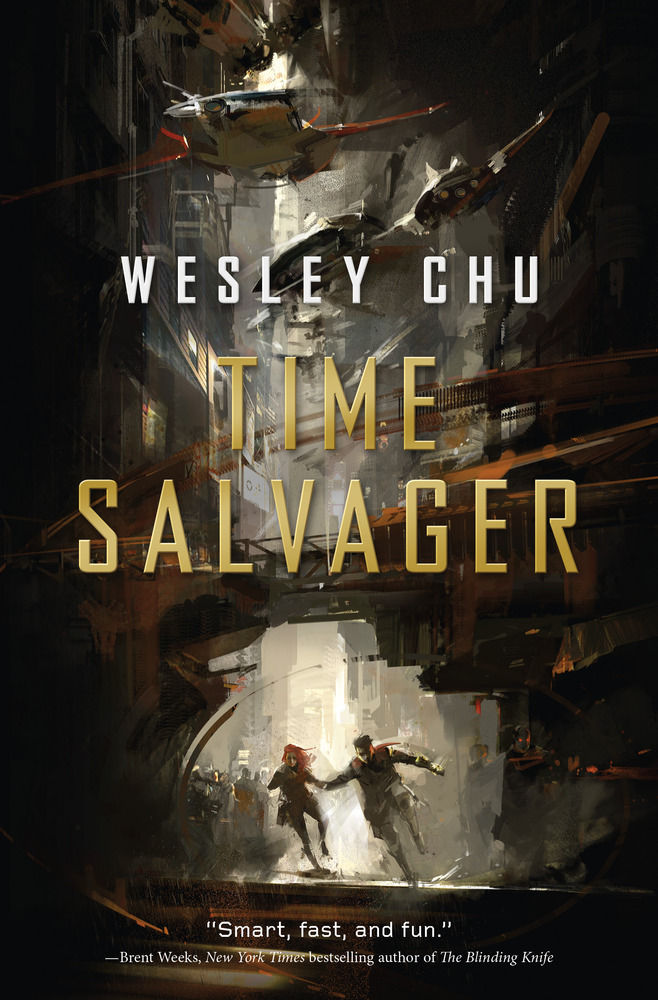 In the year 2511, Chicago isn't somewhere you'd want to live anymore. "Everywhere they looked, rust dominated the landscape...Occasionally, a dim pale ray of light would sneak past the thick gray clouds, laying down an orange glaze across a surface...In the far distance over Lake Michigan, an electric storm sparked..."
In the year 2511, Chicago isn't somewhere you'd want to live anymore. "Everywhere they looked, rust dominated the landscape...Occasionally, a dim pale ray of light would sneak past the thick gray clouds, laying down an orange glaze across a surface...In the far distance over Lake Michigan, an electric storm sparked..."
"What happened to this place?" asks Elise Kim, a scientist who should have died over 400 years earlier. Her savior, James Griffin-Mars, responds, "Not just this place. Everywhere on Earth."
Chicago author Wesley Chu's new science fiction adventure novel from Tor Books, Time Salvager -- which hits bookstores today, July 7 -- is an impressive, ridiculously fun cross between Looper and Star Trek. Michael Bay, the pyromaniacal director of Transformers, has already optioned the book for a feature film.
Continue reading this entry »
— Adam Morgan
Reviews Fri Jun 19 2015
It's Father's Day! To celebrate, we bring you the second installment of our two-part spotlight on Chicago fathers writing about parenthood featuring Ben Tanzer's book Lost In Space: A Father's Journey There and Back Again (Curbside Splendor). Tanzer has been giving birth to new books almost annually, with his newest work, New York Stories, being released this month by The Chicago Center for Literature & Photography. Come out for the release reading today, June 19, at City Lit Books 2523 N. Kedzie at 6:30pm (so all you dads can get back home to tuck in their kids).
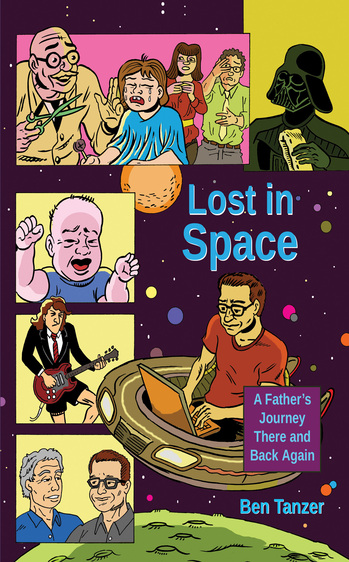 Lost in Space is a collection of creative nonfiction essays in which Tanzer chronicles his childhood via his own experience raising a family. The chapters are not arranged chronologically, but Tanzer interjects pop culture references that act as sign posts, marking days by the release of Star Wars or the Lion King. The opening lines of the first essay namedrop Patrick Ewing and Caddyshack.
Lost in Space is a collection of creative nonfiction essays in which Tanzer chronicles his childhood via his own experience raising a family. The chapters are not arranged chronologically, but Tanzer interjects pop culture references that act as sign posts, marking days by the release of Star Wars or the Lion King. The opening lines of the first essay namedrop Patrick Ewing and Caddyshack.
Throughout the book we get a sense of Tanzer as a father who is writing while juggling parenthood, marriage, a job, and his social life. He directly speaks to the reader, sharing his most intimate feelings and letting us in on the minutiae of his day-to-day life. We know he is a runner, a worrier, a loving father, and a dedicated writer. He leaves nothing out, sharing even his personal fears and insecurities, about parenting and writing both. We see this done in the essay Anatomy of a Story, in which Tanzer wrestles with how to write about a surgical procedure undergone by his son. The original intent was to fictionalize the diagnosis into something more visceral for the reader. Yet, ultimately he tells it true to life, demonstrating his authority and authenticity as a writer and a parent.
Continue reading this entry »
— John Wawrzaszek
Reviews Wed Jun 17 2015
With father's day right around the corner, this is a two-part nod to all those writing dads out there. Friday we'll feature Ben Tanzer's book Lost In Space about fatherhood, but first up, today, is a Chicago self-publisher who goes by the one-word moniker Jonas. In the local self-publishing community he is as prolific as James Paterson with his zine Cheer the Eff Up! In the zine's fifth issue, Jonas features a non-fiction essay about fatherhood, reminiscing about his dad and how their relationship has helped shape him into the dad he has recently become himself. Jonas is also a contributor to California-based Rad Dad magazine's Father's Day Issue (2014).
The topic of fatherhood is also prevalent in Jonas's book
The Greatest Most Traveling Circus, released last year on Sweet Candy Press. The book is a collection of short stories, thematically related to the book's title. He builds microcosms, calling them acts, which are as serious as they are hilarious. Each act carries a consistent voice and stories are easily read in short bursts, great for one's morning commute or morning constitution, or both.
Continue reading this entry »
— John Wawrzaszek
Books Fri Dec 12 2014
To my recollection, I never rode in Dmitry Samarov's cab. But thanks to his first book, Hack: Stories from a Chicago Cab, and his latest, Where To? A Hack Memoir, I feel like a regular who's ridden around the city with him for years.
Samarov took a job as a taxi driver after graduating from the School of the Art Institute of Chicago, first in Boston and then back here in Chicago. Over the years, he sketched, painted and wrote about the places he went, the things he saw and the many, many people he met, of every stripe and level of sobriety imaginable.
Continue reading this entry »
— Andrew Huff
Reviews Mon Oct 20 2014
If you speak to any sighted person, becoming blind later on in life is an utterly devastating proposition. They would have no idea how blind people cope, how organizations thrive to better our lives, or how we could overcome so many mundane challenges in a single day. Blind by Rachel DeWoskin is an assumptive story that is a calming, engrossing read that doesn't hold many answers about how blind people -- such as myself -- accurately or factually live life but houses a wonderful plot and premise beneath stellar writing.
by Rachel DeWoskin is an assumptive story that is a calming, engrossing read that doesn't hold many answers about how blind people -- such as myself -- accurately or factually live life but houses a wonderful plot and premise beneath stellar writing.
Continue reading this entry »
— Robert Kingett
Author Thu Oct 16 2014
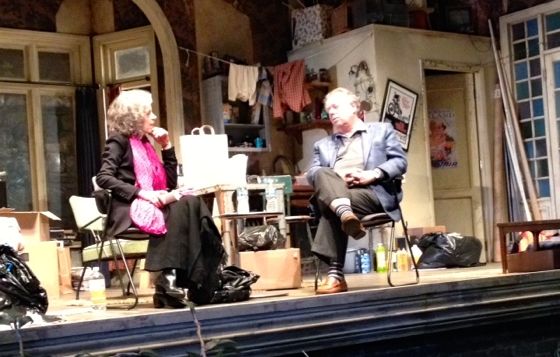
John Lahr, veteran writer and biographer, sat on the Steppenwolf Theatre stage Monday night to discuss his definitive and intimate biography of Tennessee Williams, one of America's greatest playwrights.
His book, Tennessee Williams: Mad Pilgrimage of the Flesh (Norton 2014) is one of the five nominees for the nonfiction National Book Award.
Lahr and Martha Lavey, Steppenwolf artistic director, were seated on a stage dressed for the cluttered Irish bachelor-hoarder's apartment for the current Steppenwolf production, Conor McPherson's The Night Alive. Lavey, whose departure as artistic director was recently announced, was prepared with her own advance copy of the book stuffed with fuchsia post-it notes. She asked short, pointed questions and let Lahr warm to his subject.
Williams, born Thomas Lanier Williams in 1911, adopted the name Tennessee early in his writing career. He wrote some 70 plays including masterpieces such as The Glass Menagerie, Streetcar Named Desire, Cat on a Hot Tin Roof, The Night of the Iguana, The Rose Tattoo and Summer and Smoke.
Continue reading this entry »
— Nancy Bishop
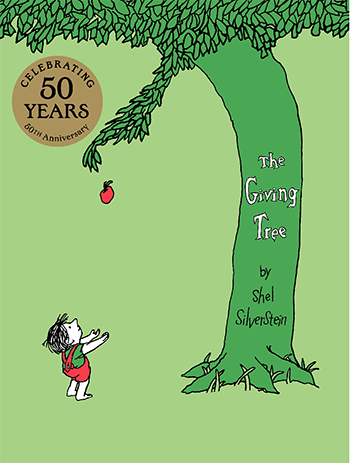 It's the 50th anniversary of Shel Silverstein's The Giving Tree -- perhaps the world's most contentious story of a sentient tree. It's a classic story -- boy meets tree, tree falls in love with boy, boy strips tree bare of apples, branches, and finally trunk until tree is just a stump and boy is a lonely, bitter old man. As a kid, I thought the book was sad and sort of uncomfortable for reasons I couldn't quite put a finger on; as an angry 20-something I thought the tree was a sucker, and the boy was your typical, selfish tree-killing man. But I've come around to thinking this is a subtly brilliant indictment of some of the things we value the most.
It's the 50th anniversary of Shel Silverstein's The Giving Tree -- perhaps the world's most contentious story of a sentient tree. It's a classic story -- boy meets tree, tree falls in love with boy, boy strips tree bare of apples, branches, and finally trunk until tree is just a stump and boy is a lonely, bitter old man. As a kid, I thought the book was sad and sort of uncomfortable for reasons I couldn't quite put a finger on; as an angry 20-something I thought the tree was a sucker, and the boy was your typical, selfish tree-killing man. But I've come around to thinking this is a subtly brilliant indictment of some of the things we value the most.
The New York Times ran an article in their Book Review section last week: two writers debated "whether the book is a tender story of unconditional love or a disturbing tale of monstrous selfishness." Frankly, it's neither. Silverstein wasn't a dummy. He put the meaning of the book right there in the title. It's about giving. And giving, being generous, makes us very uncomfortable. Because giving, really giving, feels like losing. To give something to someone else, you must lose something of yourself. This is a very American way to look at generosity. Some of us (me) were taught very young to gird our loins against those who wanted stuff from us, and according to paranoid '80s parents, everyone wanted stuff from us. But even beyond that, for me, at least, real generosity was portrayed as martyrdom, death -- with reward, sure, but still death.
Continue reading this entry »
— Eden Robins
Events Tue May 27 2014

If you haven't yet befriended Charles Cake, you should. Not only is Charles a top-notch Facebook friend and all around stand up guy, but he also has the full scoop on his not-to-be-missed namesake, CAKE: the Chicago Alternative Comics Expo.
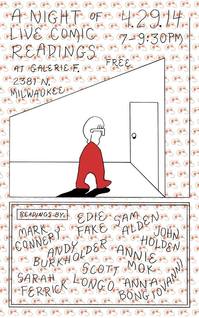 Chicago has long been a hub of underground comics, and this week CAKE is rolling out a schedule of events -- all of which are free and open to the public -- that will do that history proud. The expo's third year kicks off with a live comic reading sponsored by Minneapolis-based comics publisher 2D Cloud. These works, imagineered by Edie Fake, Anna Bongiovanni, Sam Alden, Andy Burkholder, Mark Connery, Sarah Ferrick, John Holden, Scott Longo and Annie Mok -- liberally linked here for your viewing pleasure -- are intricate, expressive and beautiful. Head over to Galerie F (2381 N. Milwaukee Ave.) this Thursday at 7 pm to hear these stories told in the authors' own voices.
Chicago has long been a hub of underground comics, and this week CAKE is rolling out a schedule of events -- all of which are free and open to the public -- that will do that history proud. The expo's third year kicks off with a live comic reading sponsored by Minneapolis-based comics publisher 2D Cloud. These works, imagineered by Edie Fake, Anna Bongiovanni, Sam Alden, Andy Burkholder, Mark Connery, Sarah Ferrick, John Holden, Scott Longo and Annie Mok -- liberally linked here for your viewing pleasure -- are intricate, expressive and beautiful. Head over to Galerie F (2381 N. Milwaukee Ave.) this Thursday at 7 pm to hear these stories told in the authors' own voices.
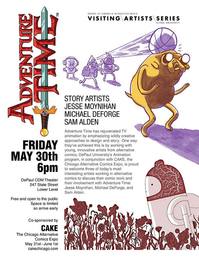 After the 2D reading, gear up for whole other slew of CAKE-sponsored goodness this Friday. Artist Tony Millionaire will be doing a signing at Graham Cracker Comics (77 E. Madison Ave.) from 5 - 7 pm. According to advertising, he'll sign anything, so get creative. Quimby's Bookstore (1854 W. North Ave.) will host three of CAKE's exhibitors: Elisha Lim, MariNaomi, and Mike Dawson. These critically acclaimed authors and illustrators will read from selections of their latest work. In case that isn't enough hooplah for one evening, the third option for your Friday is an Artist's Panel at DePaul's School of Cinema (14 E. Jackson St.), featuring the story artists of beloved late-night cartoon nonsense, Adventure Time: Jesse Moynihan, Michael DeForge and, making a second appearance, Sam Alden. The panel, which begins at 6 pm, will discuss how Adventure Time's collaboration with alternative comic artists has breathed new life into the form and content of animated narrative.
After the 2D reading, gear up for whole other slew of CAKE-sponsored goodness this Friday. Artist Tony Millionaire will be doing a signing at Graham Cracker Comics (77 E. Madison Ave.) from 5 - 7 pm. According to advertising, he'll sign anything, so get creative. Quimby's Bookstore (1854 W. North Ave.) will host three of CAKE's exhibitors: Elisha Lim, MariNaomi, and Mike Dawson. These critically acclaimed authors and illustrators will read from selections of their latest work. In case that isn't enough hooplah for one evening, the third option for your Friday is an Artist's Panel at DePaul's School of Cinema (14 E. Jackson St.), featuring the story artists of beloved late-night cartoon nonsense, Adventure Time: Jesse Moynihan, Michael DeForge and, making a second appearance, Sam Alden. The panel, which begins at 6 pm, will discuss how Adventure Time's collaboration with alternative comic artists has breathed new life into the form and content of animated narrative.
Continue reading this entry »
— Miden Wood
Reviews Sun Mar 23 2014
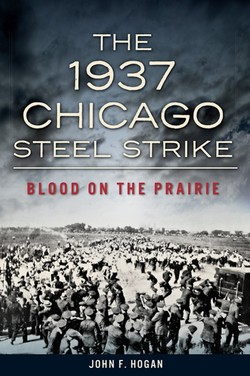 John F. Hogan establishes a couple of his credentials right at the outset of his new book: "I come from a police family and worked a summer break from college on the open-hearth furnaces at Republic Steel's South Chicago plant," he writes. Even given this background, though, he says it took years for him to first happen across the 1937 Republic strike's essential stats: 40 men wounded by police fire; 10 killed, most shot in retreat; dozens more beaten by clubs. In The 1937 Chicago Steel Strike: Blood on the Prairie, he reminds us of this deadly episode in labor history and opens a window into a time when any given strike was not just a bargaining tactic but potentially a life-and-death battle.
John F. Hogan establishes a couple of his credentials right at the outset of his new book: "I come from a police family and worked a summer break from college on the open-hearth furnaces at Republic Steel's South Chicago plant," he writes. Even given this background, though, he says it took years for him to first happen across the 1937 Republic strike's essential stats: 40 men wounded by police fire; 10 killed, most shot in retreat; dozens more beaten by clubs. In The 1937 Chicago Steel Strike: Blood on the Prairie, he reminds us of this deadly episode in labor history and opens a window into a time when any given strike was not just a bargaining tactic but potentially a life-and-death battle.
Metaphors of war are not even a little hyperbolic here. As steel companies and other manufacturers quaked before the tide of union organization rolling through the 1930s, they accumulated massive arsenals of clubs, live ammunition, and, especially, the then-recent innovation of tear-gas grenades. These armed not just the plants' guards, but often the local police forces as well, in line with a cooperative spirit that also occasionally found police enjoying free lunches and other perks at the expense of the companies they were protecting.
Continue reading this entry »
— Daphne Sidor
Reviews Sun Feb 16 2014
 The cover might tip you off anyway, but still: you should not read The Desert Places over breakfast. Nor on the bus or train, if you're at all prone to motion sickness. When, then? Perhaps after having battled through a rush hour in which the city seems a nest of hostilities and indignities, or after clicking off the television in weary disgust after too much of something awful: news reports of environmental disaster, maybe, or a long commercial break.
The cover might tip you off anyway, but still: you should not read The Desert Places over breakfast. Nor on the bus or train, if you're at all prone to motion sickness. When, then? Perhaps after having battled through a rush hour in which the city seems a nest of hostilities and indignities, or after clicking off the television in weary disgust after too much of something awful: news reports of environmental disaster, maybe, or a long commercial break.
I don't mean to say that The Desert Places will comfort you on these occasions. It will not. It's just that the book may be most bearable if black bile is already close to your surface, if you start off feeling more or less ready for apocalypse. The subject and protagonist of this small book--collaboratively written by Amber Sparks and Robert Kloss, illustrated in dripping, furrowed black and red by Matt Kish, and published by Curbside Splendor--is evil, or Satan, or death, never quite named but always recognizable. The story starts in the Old Testament but takes some liberties. For instance: God's probably still hanging around the joint, but it's hard to say where.
Continue reading this entry »
— Daphne Sidor
Reviews Tue Jan 28 2014
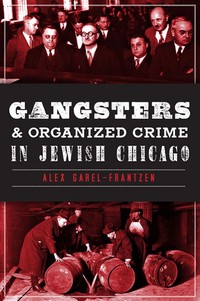 As I was reading it or mentioning it to friends, I kept forgetting what, precisely, debut author Alex Garel-Frantzen's new book was called. It does feel a bit like a subtitle in search of a title, an absence of flash that's emblematic of the style of Gangsters & Organized Crime in Jewish Chicago, now out from The History Press. The writing is reminiscent of a masters thesis, although apparently it's not; the precocious Garel-Frantzen is a law student at the University of Illinois. His core assertion--that organized crime shaped the development of Chicago's Jewish community from the mid-19th century through the 1920s--is a modest one, made methodically. Fans of, say, Devil in the White City-style dramatization and trans-temporal mind-reading will not find much to engage them here.
As I was reading it or mentioning it to friends, I kept forgetting what, precisely, debut author Alex Garel-Frantzen's new book was called. It does feel a bit like a subtitle in search of a title, an absence of flash that's emblematic of the style of Gangsters & Organized Crime in Jewish Chicago, now out from The History Press. The writing is reminiscent of a masters thesis, although apparently it's not; the precocious Garel-Frantzen is a law student at the University of Illinois. His core assertion--that organized crime shaped the development of Chicago's Jewish community from the mid-19th century through the 1920s--is a modest one, made methodically. Fans of, say, Devil in the White City-style dramatization and trans-temporal mind-reading will not find much to engage them here.
But if Garel-Frantzen is more the meticulous academic than a natural-born storyteller, his brief volume still touches on a number of striking stories. Rather than focus on characters affiliated with big shots such as Al Capone who simply happened to be Jewish--and there certainly were a few--Garel-Frantzen spends most of his time examining forms of organized crime that were particularly bound up with Jewish community life, first in the Maxwell Street ghetto on the near South Side, and later in Lawndale.
Continue reading this entry »
— Daphne Sidor
Reviews Tue Jan 28 2014
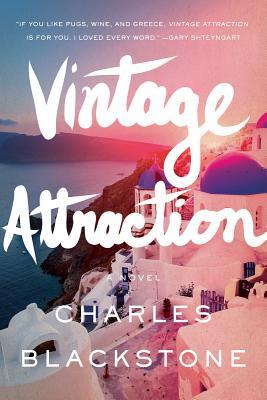 When a friend found out I was reading Vintage Attraction, she asked me what I thought of the book.
When a friend found out I was reading Vintage Attraction, she asked me what I thought of the book.
"Um, I'm still trying to figure that out," I said. "There are some good things about it. Blackstone likes puns, which is cool. There are a lot of Chicago culinary hotspots mentioned. There's a pug."
My friend couldn't help but laugh. "Listen to what you're saying! There's a pug???"
She called me out, and there was no way around it. In vino, veritas. The same thing could be said about book reviews. So this is my truth: I read Vintage Attraction, and was mystified by the very public fanfare it seemed to be receiving. Had we read the same book?
Continue reading this entry »
— Ines Bellina
Reviews Fri Jan 10 2014
Chicago's Favorite Chicago Books is a series of reviews of fiction by Chicago authors. These books are chosen by YOU (and, well, me). To suggest a title I should review, comment here, tweet me @edenrobins and/or use the hashtag #faveChicagobooks!
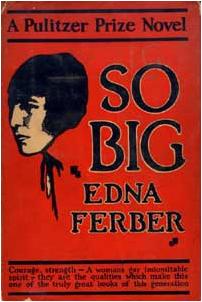 I'm pretty embarrassed about this, but for several impressionable teenage years, I read and reread Ayn Rand's The Fountainhead at least six times. Now, in high school I was about as bloodied a bleeding-heart liberal as you could get, dubbed a "feminazi" by male classmates (yes really), a rabid recycler, a fervent believer in philanthropy. So please believe me when I say that I never bought into her manic, hyper-conservative DIY OR DIE mentality. But there was something about the way Rand discussed integrity and the satisfaction of good work and the respect for beauty over greed that, well, for better or worse, it stuck with me.
I'm pretty embarrassed about this, but for several impressionable teenage years, I read and reread Ayn Rand's The Fountainhead at least six times. Now, in high school I was about as bloodied a bleeding-heart liberal as you could get, dubbed a "feminazi" by male classmates (yes really), a rabid recycler, a fervent believer in philanthropy. So please believe me when I say that I never bought into her manic, hyper-conservative DIY OR DIE mentality. But there was something about the way Rand discussed integrity and the satisfaction of good work and the respect for beauty over greed that, well, for better or worse, it stuck with me.
Man oh man, I wish I had had known of Edna Ferber back then. Edna Ferber is Ayn Rand for people with a soul. Or maybe that's too harsh? Let's go with "conscience" instead.
Continue reading this entry »
— Eden Robins
Books Wed Jan 01 2014
In its mission statement, the website--and, more recently, e-book publishing company--Thought Catalog claims that "all thinking is relevant," which leads it to "a value-neutral editorial policy." What this vacuum of editorial values produces in practice is mostly insipid lists and first-person musings on such fresh subjects as the pitfalls of online dating and the plight of the American 22-year-old. But in a best-case scenario, such openness might instead result in something truly diverse--something more like the recent Thought Catalog Originals release Boys, an Anthology.
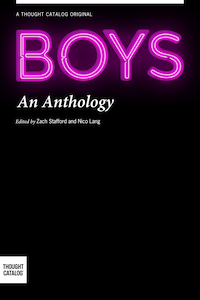 Of course, it helps that there's some actual vision at the helm here. (And proceeds from the book are being donated to the Lambda Literary Foundation, so no matter your feelings about Thought Catalog, you can plunk down your $5.99--or $11.69 for the paperback edition--in good conscience.) The collection was edited by Chicago writers-about-town Zach Stafford and Nico Lang, both of whom have long track records writing thoughtfully about LGBT issues on the personal, local, and national fronts. Broadening the cultural conception of what it is to be a young gay/queer/trans man is foremost on the book's agenda. "When we begin to ask where we are now and what our community really looks like, we must first address the way that community is represented--which is usually urban, middle- to-upper class and white," the editors write in a foreword.
Of course, it helps that there's some actual vision at the helm here. (And proceeds from the book are being donated to the Lambda Literary Foundation, so no matter your feelings about Thought Catalog, you can plunk down your $5.99--or $11.69 for the paperback edition--in good conscience.) The collection was edited by Chicago writers-about-town Zach Stafford and Nico Lang, both of whom have long track records writing thoughtfully about LGBT issues on the personal, local, and national fronts. Broadening the cultural conception of what it is to be a young gay/queer/trans man is foremost on the book's agenda. "When we begin to ask where we are now and what our community really looks like, we must first address the way that community is represented--which is usually urban, middle- to-upper class and white," the editors write in a foreword.
Continue reading this entry »
— Daphne Sidor
Books Mon Dec 23 2013
 I've been paying closer attention, lately, to the tail end of my morning commute: west along North Avenue from the lake to Larabee, then south. Of course, I'd always noticed the yellow-brick row houses of the Cabrini homes hunched across from my office building, behind the luxury condos and parking garages--fewer than 150 of them occupied, since the Chicago Housing Authority cleared hundreds of the units with an as-yet-unfulfilled promise that residents would return to a full-scale renovation. And although it's not on my way, the former site of the William Green Homes' last towers still shocks me with its emptiness when I happen to pass by. Lately, if I approach from the east past the shiny new Target, it even takes a moment for me to remember what that land was emptied of.
I've been paying closer attention, lately, to the tail end of my morning commute: west along North Avenue from the lake to Larabee, then south. Of course, I'd always noticed the yellow-brick row houses of the Cabrini homes hunched across from my office building, behind the luxury condos and parking garages--fewer than 150 of them occupied, since the Chicago Housing Authority cleared hundreds of the units with an as-yet-unfulfilled promise that residents would return to a full-scale renovation. And although it's not on my way, the former site of the William Green Homes' last towers still shocks me with its emptiness when I happen to pass by. Lately, if I approach from the east past the shiny new Target, it even takes a moment for me to remember what that land was emptied of.
But thanks to Lawrence J. Vale's Purging the Poorest: Public Housing and the Design Politics of Twice-Cleared Communities, these days I've been looking not just at the negative space of the former Cabrini-Green area; I've also been paying attention to what, and who, has filled in the blanks. There's a strange feel to these mostly market-rate developments, swept clean of the obvious history that permeates the built environment of the other central neighborhoods. There are not a lot of public spaces and not a lot of people on the residential streets, just stretches of new brick and still-raw-looking landscaping occasionally punctuated by the profounder silence of a grass or gravel lot. The facades seem almost part of a set, unobtrusive scenery to sail past as our main characters take a drive downtown.
Continue reading this entry »
— Daphne Sidor
Reviews Mon Dec 23 2013
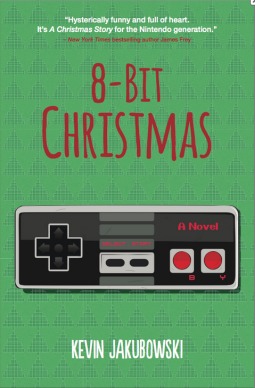 When I was 9 years old, I got Super Mario 3 for my birthday. My sister, brother and I spent the rest of the day in a Nintendo-induced stupor as we unlocked one Koopa-invaded world after another. At some point, one of us--it doesn't matter which one, the details are long gone in the annals of my family history--dared to break our "die-to-die, level-to-level" rule for taking turns. This caused a full-blown war with many declarations of eternal hatred that only ceased when my parents sent us to our rooms and forbade any more gaming for the rest of the day. The three of us quickly made up, united by a common enemy: our evil parents who just did not understand the allure and magic of NES.
When I was 9 years old, I got Super Mario 3 for my birthday. My sister, brother and I spent the rest of the day in a Nintendo-induced stupor as we unlocked one Koopa-invaded world after another. At some point, one of us--it doesn't matter which one, the details are long gone in the annals of my family history--dared to break our "die-to-die, level-to-level" rule for taking turns. This caused a full-blown war with many declarations of eternal hatred that only ceased when my parents sent us to our rooms and forbade any more gaming for the rest of the day. The three of us quickly made up, united by a common enemy: our evil parents who just did not understand the allure and magic of NES.
It is this old-school craze that Kevin Jakubowski is fleshing out in all its '80s glory in his debut novel, 8-Bit Christmas. A scriptwriter who has worked for both Comedy Central and Nickelodeon, Jakubowski is keenly aware of the humor that arises from the many anxieties that plague childhood. In the case of Jake Doyle, a third-grader from Batavia, IL, there is nothing more panic-inducing that Nintendo, or the lack thereof. After enduring the tyranny of Timmy Kleen, the one obnoxious brat who owns an NES in town, Jake decides the only thing he wants for Christmas is the gaming system. The untimely death of Timmy's Shih Tzu, crushed by a forty-two-inch television set, puts a damper on his plans. Every parent in town blames video games for the tragedy, leading to a countywide ban of Nintendo. It's up to Jake to save Christmas--and get one of those prized possessions into his own hands.
Continue reading this entry »
— Ines Bellina /
Books Thu Dec 19 2013
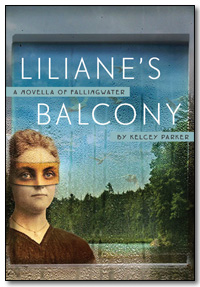 I had never heard of Fallingwater before opening the pages of Kelcey Parker's new book, but a quick Google search was enough to make me ashamed of my lack of architectural knowledge. The National Historic Landmark is one of Frank Lloyd Wright's most lauded designs, breathtaking even through my smudged laptop screen. Built over a waterfall, the house manages to combine the sleek exterior and the sinuous drama of its natural location. It's a fitting setting for Liliane's Balcony, a novella that explores the contradictory relationship between a person's façade and the complicated interior life that lies behind it.
I had never heard of Fallingwater before opening the pages of Kelcey Parker's new book, but a quick Google search was enough to make me ashamed of my lack of architectural knowledge. The National Historic Landmark is one of Frank Lloyd Wright's most lauded designs, breathtaking even through my smudged laptop screen. Built over a waterfall, the house manages to combine the sleek exterior and the sinuous drama of its natural location. It's a fitting setting for Liliane's Balcony, a novella that explores the contradictory relationship between a person's façade and the complicated interior life that lies behind it.
The marriage between Edgar and Liliane Kaufmann, the real-life owners of Fallingwater, is at the core of the novella. Their union was marred by Edgar's infidelities, and the series of heartbreaks that Liliane suffers will eventually lead to her suicide. The novella alternates between this tragic event and the fictional lives of four tourists: the wife in a struggling marriage, a young woman grieving for her father, a man's man on the brink of love, a clairvoyant 10-year-old. Each storyline is brought to life by the distinct narrative voices of each character that are interspersed throughout the book.
Continue reading this entry »
— Ines Bellina
Author Tue Nov 26 2013
Just in time for Thanksgiving, I'd like to point out my new favorite true crime book: Survived By One: The Life and Mind of a Family Mass Murderer by Robert E. Hanlon with Thomas V. Odle. It's much more than a true crime book. After my thoughts, please read on for an interview with Dr. Hanlon.
 In 1985, Thomas Odle killed his parents and three siblings at the age of 18 in southern Illinois and is now serving life in prison. This book is from the perspective of both Dr. Hanlon, a neurologist, and Tom Odle, the murderer himself. Tom reflects on his childhood in a first person point-of-view, while Dr. Hanlon assesses Tom's life experiences and how they led him to murder.
In 1985, Thomas Odle killed his parents and three siblings at the age of 18 in southern Illinois and is now serving life in prison. This book is from the perspective of both Dr. Hanlon, a neurologist, and Tom Odle, the murderer himself. Tom reflects on his childhood in a first person point-of-view, while Dr. Hanlon assesses Tom's life experiences and how they led him to murder.
This book is haunting. Tom Odle's childhood was hell. His mother abused him, chained him to his bed, made him raise his three younger siblings, and constantly told him how much she hated him and how she wished he'd never been born. He wasn't allowed to go anywhere other than school and wasn't allowed to have anybody over, so his social skills lacked heavily. In kindergarten, Odle went to school with a shirt soaked in blood from the whip marks on his back. It wasn't until he was strong enough to fight back that she stopped the physical abuse, but the emotional and verbal abuse never ceased. Tom never had confidence or self-worth. His dad stood by and did nothing, as if he too feared Tom's mother.
Continue reading this entry »
— Mikaela Jorgensen
Reviews Sun Nov 24 2013
Abby Donovan, protagonist of first-time novelist E.C. Diskin's The Green Line, is a youngish, rather naïve white lawyer transplanted to Chicago from Georgia. She is so overworked and easily confused that when she tries to take the train home one evening she accidentally gets on the Green Line instead of the Brown Line that would whisk her to her Wrigleyville townhouse, and promptly falls asleep.
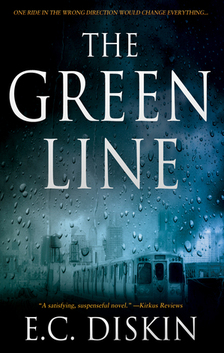 Within minutes of waking and disembarking at the Cicero stop in a panic, she encounters a diverse assortment of black people. They include:
Within minutes of waking and disembarking at the Cicero stop in a panic, she encounters a diverse assortment of black people. They include:
An old woman ranting about how she would like to shoot all white people
Two leering "thugs" in "tattoos, gold chains, and baggy clothes" who immediately start to menace her
A crowd of 10 young black men, also wearing the telltale gold chains and baggy clothes, who also begin pursuing her at once
A couple of drunks
A drug-addicted prostitute, soon to be murdered
Add in some pregnant teenage welfare queens, and the ultimate nightmare fantasia of the white urbanophobe would be complete.
Continue reading this entry »
— Daphne Sidor
Reviews Wed Nov 20 2013
 When I tell my friend Laura that I’m reading Jonathan Safran-Foer’s Eating Animals — an investigative examination of factory farming and the ethics of meat-eating — she recoils. “Agh, don’t tell me,” she says. “I don’t want to know!”
When I tell my friend Laura that I’m reading Jonathan Safran-Foer’s Eating Animals — an investigative examination of factory farming and the ethics of meat-eating — she recoils. “Agh, don’t tell me,” she says. “I don’t want to know!”
At his talk-back lecture for the Chicago Humanities Festival, Safran-Foer confessed that the response is pretty common, citing the countless times he’s seen book store patrons pick up his book, scan the back for its contents, and hurriedly shove it back on the shelves.
You can hardly blame them. As the woman sitting next to me put it, the book is brimming with “stuff you can’t un-know.” Considering that knowing prompted her to not only change her diet, but fly all the way from Florida to Chicago just to hear the word from the horse’s mouth, reading-reluctance is understandable. It’s a life-changer. The moment that I first cracked open Jonathan Safran-Foer’s Eating Animals, a server was setting a plate of fish tacos down in front of me. By page 197, I was munching on a vegan tofu wrap.
There’s no small amount of guilting involved in the traditional meat-is-murder argument; enough to spook any omnivore away from a whole 300-something pages of it. And sure, I could easily take this time to bombard you with descriptions of living conditions, disease, and disturbingly systematic deaths that these animals endure; but that is an old argument, growing ineffective with repetition, and there are less-trafficked points to be made. (That isn’t to say that such arguments are in any way invalid; just that a quick YouTube search will prove much more effective than any description I could write.)
You don’t have to feel anything looking into the eyes of a battered, confined, sickly pig. The fact of the matter is that whether or not you believe animals suffer, factory farming is not sustainable; it’s a hot-bed for disease, the number one cause of climate change, and participates in a whole range of human rights violations.
Vegetarianism need not be about sentimentality, or even ethics; it’s about preserving our planet while we still can.
Continue reading this entry »
— Miden Wood /
Reviews Sun Nov 03 2013
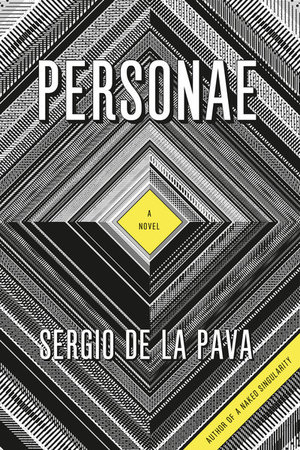 On Sept. 30, the University of Chicago Press published Personae, the ambitiously genre-blending, polyvocal second novel by Sergio de la Pava, author of last year's award-winning, 698-page surprise hit A Naked Singularity. Initially self-published, ANS became the first novel the UCP has reissued in the entirety of its prestigious 100+ year history. And so, this second novel's publication strikes at least one curious Chicagoan as significant, since UCP had all but sworn off altogether risky indie fiction reprints.
On Sept. 30, the University of Chicago Press published Personae, the ambitiously genre-blending, polyvocal second novel by Sergio de la Pava, author of last year's award-winning, 698-page surprise hit A Naked Singularity. Initially self-published, ANS became the first novel the UCP has reissued in the entirety of its prestigious 100+ year history. And so, this second novel's publication strikes at least one curious Chicagoan as significant, since UCP had all but sworn off altogether risky indie fiction reprints.
"This is it," Levi Stahl, a publicity director at UCP, had promised his editorial staff, according to a longish review in the Trib. A Naked Singularity was brilliant, sure, but a fluke nonetheless. "This doesn't change anything," Stahl says, in an invented movie version of events (perhaps scripted by De la Pava, himself). Initially, Stahl discovered De la Pava's debut via literary critic Scott Bryan Wilson, who reviewed ANS over at The Quarterly Conversation, where Stahl serves as a poetry editor. Stahl handed the manuscript to UCP editor Maggie Hivnor, also a fan of the book, who then faced the task of convincing the imposing Board of University Publications that De la Pava's scrappy, sprawling, self-published first novel indeed carried literary merit. Fortunately, the case had quite a few things in its favor: an additional favorable review by Steve Donoghue, support from critics Steven Moore and Brian Evenson, plus the author's own unlikely back story.
Continue reading this entry »
— Diego Báez
Author Fri Oct 18 2013
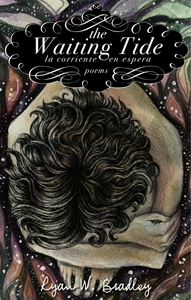 I have to be honest--it's been awhile since I've read an entire collection of poetry, but The Waiting Tide, the first book published by Curbside Splendor's poetry imprint, Concepción, was so worth it. I read it in one sitting. Twice, actually.
I have to be honest--it's been awhile since I've read an entire collection of poetry, but The Waiting Tide, the first book published by Curbside Splendor's poetry imprint, Concepción, was so worth it. I read it in one sitting. Twice, actually.
In the introduction, Bradley says, "I found myself compelled to write about love, lust, and the sea. All forms of escape, all symbols of our primal wishes. I found myself in dialogue with the master of love poetry." This book is a conversation with Chilean poet, Pablo Neruda.
The books is split into four sections: Waiting Tides, Love, Desire, and Your. Bradley's poems no doubt evoke feelings of love, longing, and lust. Bradley said in an interview, "...as embarrassed as
my wife gets that people are reading poems that are at times very intimate and are written by her husband, they are really a testament to her and her inherent ability to keep me alive and kicking." The poems are affectionate and sensual and intimate, but written in a way that only a poet can write about these things. You'll read this collection and wish that someone would write poems like this about you.
Continue reading this entry »
— Mikaela Jorgensen
Books Tue Oct 08 2013
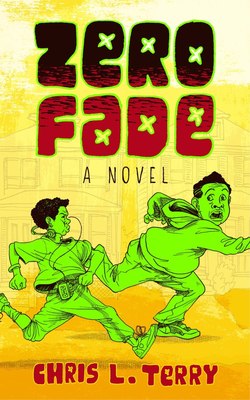 Chris Terry has been a writer and performer for most of his life. He's been a touring musician, he self-published the zine Gullible, he co-hosted the now-defunct literary reading series Neutron Bomb, and he received his master's degree from the Fiction Writing Department at Columbia College.
Chris Terry has been a writer and performer for most of his life. He's been a touring musician, he self-published the zine Gullible, he co-hosted the now-defunct literary reading series Neutron Bomb, and he received his master's degree from the Fiction Writing Department at Columbia College.
His first novel, the young adult story Zero Fade was released this fall on Curbside Splendorand has been garnering some buzz. Terry has been pulling out all the stops to support it. He's already hit the road for a book tour (read his tour diary on Gapers Block) and taken the stage at readings across the city, such as Reading Under the Influence and Words + Music.
The book is a perfect read for the back-to-school season (whether you're in class or just have fond memories). The story captures a week in the life of 13-year-old high school student Kevin Phifer in Richmond, Virginia in the mid-nineties, and it tackles all of the hardships that teenagers face: dating, rebelling, developing an authentic personality.
Continue reading this entry »
— John Wawrzaszek
Books Wed Sep 25 2013
 Curbside Splendor is taking the lit scene by storm with a massive number of releases hitting (or soon to be hitting) bookshelves this fall. On the roster is Daniela Olszewska's poetry collection Citizen J, Artifice Books' first release since becoming an imprint of Curbside. Olsezewska comes to Chicago by way of her birthplace, Poland. She's made a name for herself as associate poetry editor at Another Chicago Magazine and board member of Switchback Books. Citizen J is her third poetry collection (with a fourth coming in 2014).
Curbside Splendor is taking the lit scene by storm with a massive number of releases hitting (or soon to be hitting) bookshelves this fall. On the roster is Daniela Olszewska's poetry collection Citizen J, Artifice Books' first release since becoming an imprint of Curbside. Olsezewska comes to Chicago by way of her birthplace, Poland. She's made a name for herself as associate poetry editor at Another Chicago Magazine and board member of Switchback Books. Citizen J is her third poetry collection (with a fourth coming in 2014).
The collection is broken into six interconnected parts exploring the protagonist: the ambiguous Citizen J. Olszewska's J is an everywoman, but epicene. Citizen J is a wife, a revolutionary, a criminal, a husband, a soldier, an addict, a pirate. She's looking for love or acceptance pretty hard. She has twelve husbands and wives (playa!). J is seemingly confused about the path she follows and allows the reader to be a passenger on her endless adventure.
Continue reading this entry »
— John Wawrzaszek /
Books Tue Sep 24 2013
 Body Geographic by Barrie Jean Borich is concerned with maps and middles and maps of middles: the Midwest, middle age, the middle class, even a city skyline tattoo inked across the author's back. And some actual cities, too. Borich grew up in the steel-mill neighborhoods of Chicago's southeastern edge, was educated partly in Champaign-Urbana, and now splits her time between Minneapolis and Chicago, where she teaches at DePaul.
Body Geographic by Barrie Jean Borich is concerned with maps and middles and maps of middles: the Midwest, middle age, the middle class, even a city skyline tattoo inked across the author's back. And some actual cities, too. Borich grew up in the steel-mill neighborhoods of Chicago's southeastern edge, was educated partly in Champaign-Urbana, and now splits her time between Minneapolis and Chicago, where she teaches at DePaul.
She lives, it seems, a comfortable lesbian academic life--complete with avid antique shopping and couch sex interrupted by dogs with names like Miss Dusty Springfield--and mostly has done so, save for a troubled spell as a young, alcoholic college dropout. If this does not sound too thrilling, well, the Midwest is not known for its captivating geography. But Borich is mainly concerned here not with travelogue or zippy plotting; metaphors are her great love. Her poet's sense of yearning haunts the heart of an ever-eager English major.
Continue reading this entry »
— Daphne Sidor
Reviews Tue Sep 10 2013
Chicago's Favorite Chicago Books is a series of reviews of fiction by Chicago authors. These books are chosen by YOU (and, well, me). To suggest a title I should review, comment here, tweet me @edenrobins and/or use the hashtag #faveChicagobooks!
 I can't help it, I love books about Jews! Maybe I'm always looking to make sense of my own Jewishness, or maybe I just love the idea of inside jokes that the rest of the goyische world won't get. Give me more Purim jokes! And oh man, that Tu B'Shevat, amirite?
I can't help it, I love books about Jews! Maybe I'm always looking to make sense of my own Jewishness, or maybe I just love the idea of inside jokes that the rest of the goyische world won't get. Give me more Purim jokes! And oh man, that Tu B'Shevat, amirite?
Point is, I was really stoked to read Adam Langer's Crossing California - so many Jewish inside jokes to chuckle at! And it takes place in Rogers Park! Andandand there's historical context too, as the novel spans the length of the Iranian hostage crisis to the inauguration of Reagan in 1981. I deeply admire fiction that weaves itself into actual historical events. Plus, it's a bildungsroman! And I just love saying bildungsroman. (Translation: Coming of age novel. Remember it and impress your friends!)
But there's a "but". I just wasn't crazy about this book.
Continue reading this entry »
— Eden Robins
Author Thu Sep 05 2013
 Samantha Irby's much anticipated collection of essays, Meaty, is out today. If you're not sure whether or not to purchase it, read contributor Alba Machado's and my discussion below! (Hint: Buy it.)
Samantha Irby's much anticipated collection of essays, Meaty, is out today. If you're not sure whether or not to purchase it, read contributor Alba Machado's and my discussion below! (Hint: Buy it.)
Mikaela: As somebody who had never read Samantha Irby's blog, Bitches Gotta Eat, I didn't know what I was in for, though I quickly found out. I feel that I know Samantha Irby better than I know most of my friends after reading this book, from her bowel movements and sex life to her experiences and hopes. I laughed a LOT and felt a bit emotional during some of the more serious essays. What was reading Meaty like for you, as someone who has read her blog?
Alba: I discovered Samantha Irby a couple of years ago, when she read for the Funny Ha-Ha series at the Hideout. She made me blush in the best way ever. It's a talent she has. It's not just that she talked about peeing on a man's face; it's that she did it in this absolutely candid, intimate check-this-freaky-shit-out kind of way that made her story seem somehow as ordinary as it was outrageous--something casual, something you'd laugh about over coffee. She has the gift that Toni Morrison says is the true test of a writer's power, to "familiarize the strange and mystify the familiar." Since then, I've gobbled up her online work, first the joke advice column that she wrote with Ian Belknap at irbyandian.com, "advice for jerks, written by assholes," then Bitches Gotta Eat. And of course, I was really excited to read Meaty. It did not disappoint. Laughs were had. Numerous times. But the book also veered into unexpectedly tragic terrain, and for that, I would have liked to have read it at a slower pace, given myself time to process and reflect on one chapter before moving onto the next. Meaty seems an appropriate name. You need time to chew on it!
Continue reading this entry »
— Mikaela Jorgensen
Books Mon Sep 02 2013
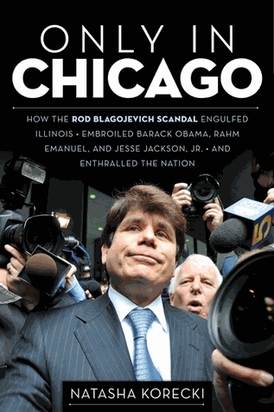 I remember when I knew this Blago thing was officially huge. I was a relative newcomer to Chicago and had only recently started following its politics when a 10-year-old kid who lived at the high-rise where I worked wandered into the office one day and casually referenced Rod Blagojevich in conversation. Granted, he garbled his name in a way that I first mistook for something like "vaudeville voyager." Tough name for a kid to pronounce! But the character at the heart of the scandal wouldn't have been out of place on a Saturday-morning cartoon. Giant hair, froggy grin, panicked eyes. A villain in the comic mode for kids, sure to stay just this side of the line between risible and scary.
I remember when I knew this Blago thing was officially huge. I was a relative newcomer to Chicago and had only recently started following its politics when a 10-year-old kid who lived at the high-rise where I worked wandered into the office one day and casually referenced Rod Blagojevich in conversation. Granted, he garbled his name in a way that I first mistook for something like "vaudeville voyager." Tough name for a kid to pronounce! But the character at the heart of the scandal wouldn't have been out of place on a Saturday-morning cartoon. Giant hair, froggy grin, panicked eyes. A villain in the comic mode for kids, sure to stay just this side of the line between risible and scary.
Continue reading this entry »
— Daphne Sidor
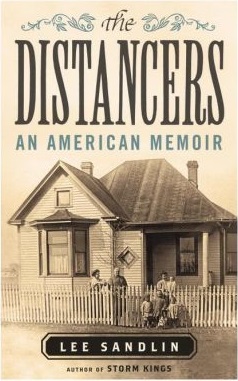 Family history is its own unique animal--stories about love, loss and mayhem at funerals, weddings, or just dinnertime resonate more deeply when you're related to the participants by blood. (Of course, we're living history every minute, though that rarely occurs to us in the moment; the march of time is something that happens to other people.) In The Distancers, Lee Sandlin's wonderful ode to decades of familial lore, the reader experiences the narratives of Sandlin's clan, but I'd be surprised if they didn't recognize their own family members among the many portraits he draws.
Family history is its own unique animal--stories about love, loss and mayhem at funerals, weddings, or just dinnertime resonate more deeply when you're related to the participants by blood. (Of course, we're living history every minute, though that rarely occurs to us in the moment; the march of time is something that happens to other people.) In The Distancers, Lee Sandlin's wonderful ode to decades of familial lore, the reader experiences the narratives of Sandlin's clan, but I'd be surprised if they didn't recognize their own family members among the many portraits he draws.
Originally published in twelve installments in the Reader, The Distancers introduces us to four great-aunts and uncles in the preface: Hilda, Helen, Marty, and Eugene. They live together in Edwardsville, Ill., in a home that's been in the family for generations, and the young Lee Sandlin visits them every summer. (I was instantly transported back in time to week-long summer trips to my grandparents' home in Missouri.) Back then, he knows nothing about them; the rest of the book traces their journey, and the journeys of those who came before them, over a span of time that begins in 1850 and ends in the present day. We're taken everywhere from a late nineteenth century family-run hotel and saloon, to Sacramento Avenue in Chicago, to the battlefields of World War II.
One of the most fascinating aspects of the book is the way in which major world events are viewed through the prism of one family's experience; for example, tradition held that Sandlin's great-great-great grandfather, Peter, was so removed from the rest of the world that he never knew that the Civil War took place until he heard church bells ringing one morning in the fields, celebrating its end.
We follow along as Sandlin tries to peel back the layers around his childhood summer caretakers. Eugene, in particular, is a figure steeped in mystery--he creates a world of self-imposed isolation for himself, riding the rails as a hobo and devoting years to the creation of a sprawling, magnificent garden outside the Edwardsville home. But Hilda, Helen, and Marty's stories also defy the more straightforward aspects of the marriage-and-children arc that typifies the life stories of many of the other characters we meet. Their lives, seemingly simple and largely circumscribed by the boundaries of Edwardsville, seem out of the ordinary. And while Sandlin makes it clear that they would brook no personal discussions, this book is a reminder that everyone's life is an amazing story. And to go and ask Grandma whatever happened to Uncle Joe.
— Emilie Syberg
Books Tue Aug 27 2013
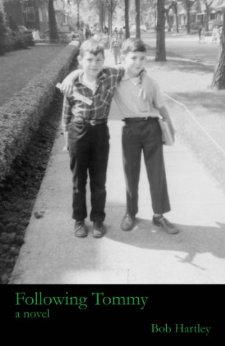 At first glance there's something sepia-toned about Following Tommy, the debut novel of former West Sider Bob Hartley. The photographs one imagines him working from could be hung on the walls of any old watering hole in town to add a whiff of authenticity. There's the working-class kid in a T-shirt on his front stoop with a paperback and a beer. There are the buttoned-up churchgoers passing by. There's the pretty girl behind the counter of a diner. And it's true that we don't get much more than snapshots of even the primary characters -- with the book barely breaching the hundred-page mark, there isn't time to go deep. The three boys at the center of the book can be pretty well summed up as the smart one, the mean one, and the dumb, fat one. Dad's a drunk holding onto his Irish accent and the memory of his dead wife. As for the women, they're sainted matriarchs, tough old broads, or friendly sexpots.
At first glance there's something sepia-toned about Following Tommy, the debut novel of former West Sider Bob Hartley. The photographs one imagines him working from could be hung on the walls of any old watering hole in town to add a whiff of authenticity. There's the working-class kid in a T-shirt on his front stoop with a paperback and a beer. There are the buttoned-up churchgoers passing by. There's the pretty girl behind the counter of a diner. And it's true that we don't get much more than snapshots of even the primary characters -- with the book barely breaching the hundred-page mark, there isn't time to go deep. The three boys at the center of the book can be pretty well summed up as the smart one, the mean one, and the dumb, fat one. Dad's a drunk holding onto his Irish accent and the memory of his dead wife. As for the women, they're sainted matriarchs, tough old broads, or friendly sexpots.
But if this vision of the Austin neighborhood in the early 1960s comes off as a little schematic, one quickly realizes that it is lit by no glow of nostalgia. This Chicago is violent, judgmental, and utterly driven by clout. Richard J. Daley's machine turns the gears of one major plotline, and its motions are omnipresent in the little details of voter fraud and straight-ticket loyalty to the alderman who kisses everyone's babies and sends envelopes of money to their weddings. At a crucial point, he also gets protagonist Jacky O'Day, his older brother Tommy, and his cousin Hippo out of jail.
The boys don't exactly deserve to be sprung loose. They really did rob that department store and break into that bar and accidentally poison that cop's dog. But they're set free because the ward is also intensely racist. The Austin neighborhood was 99.8% white in the 1960 census, but by the time the book's action rolls around, residents are as nervous about the block-busting techniques they've seen uproot other neighborhoods as they are about the actual prospect of having black neighbors. Enter the need for a few local thugs to keep things under control.
Whatever their deeper motives, most of the neighbors are happy to cheer on Tommy as he wages a campaign of harassment against the first black family to move in, fueled by dreams of joining the comfortably corrupt and winning a job that exists on paper and paycheck only. For Jacky, too, it feels good at first: for the first time since their mother died and their father lost his job, the boys are buoyed by the neighborhood and its political establishment. Suddenly, they begin to reap the full benefits of white privilege that had previously been blocked by their poverty and criminality.
But Jacky's moral compass hasn't been entirely smashed by his hard adolescence, and eventually, he makes moves to extract himself from Austin's manicured mean streets. We're not sure what life will hold for him at the end of the book; he's just barely better than his surroundings, and things might go okay or might not. For the neighborhood he's leaving, things will not be okay at all. Years of racial tension and decades of poverty await.
The Chicago Hartley writes about, it turns out, is my grandfather's Chicago. When I moved here as an adult, I was intrigued to learn of his connection to the city, eager to hear about the old days. Though he wasn't born here, it turned out he'd spent some time staying with friends and relatives as a young man -- mostly, I came to gather, on the Lithuanian South Side where white fear was driving the people he knew farther south and southwest. He has talked a little about that, and about the Maxwell Street Market that the O'Day boys visit to hawk their stolen goods; he has talked about these things in casually, appallingly racist terms. (I should note he is somewhat impaired by old age and poor health; he might otherwise be a better man, but he might not.)
It shocked me, but it shouldn't have. I was looking for some cool stories that would make me feel as though I had some insight into Chicago's authentic past. I got something authentic, all right, but it was nothing I could repeat to my friends. Nothing to celebrate.
Can I say, then, that Following Tommy is a good substitute for a racist grandpa? I don't mean that as an insult. I just mean that it leaves you with the same bracing and valuable realization: for outsiders of any stripe, the past has rarely been a hospitable neighborhood. If the book's prose occasionally seems a bit short on charm, that might well be an ethical, rather than an aesthetic, choice.
— Daphne Sidor /
Reviews Thu Aug 22 2013
This is the first in a series of reviews of fiction by Chicago authors. These books are chosen by YOU (and, well, me). To suggest a title I should review, comment here, tweet me @edenrobins and/or use the hashtag #faveChicagobooks!
 When I was a kid, the world was kind of a disappointment. Back then, playing pretend was serious. It was boot camp. It was the training I knew I'd need to one day inhabit the glorious, magical, hidden worlds that would inevitably reveal themselves. Any day, I thought. Any day.
When I was a kid, the world was kind of a disappointment. Back then, playing pretend was serious. It was boot camp. It was the training I knew I'd need to one day inhabit the glorious, magical, hidden worlds that would inevitably reveal themselves. Any day, I thought. Any day.
I can't remember when I stopped searching for magical hidden worlds, but I think my life is poorer for it. And this is part of the reason why I adore Daniel Pinkwater. He unapologetically inhabits these bizarre, secret, magical worlds. Though it's ostensibly only for kids, I personally think every adult -- human, Martian and Venusian -- should read Alan Mendelsohn, the Boy from Mars.
Continue reading this entry »
— Eden Robins
Beginning next week, Chicago public school bells across the city will ring in the beginning of a fresh school year. To celebrate this season of new beginnings (and to relive the excitement of that English class reading list), we at Book Club have compiled a list of our favorite "back-to-school books": stories that capture, with breathtaking accuracy, the friendships, romances and, in some cases, the cockroach butlers that fill the semesters of our characters' lives. Read on, and don't forget to comment on your faves!
Continue reading this entry »
— Book Club /
Reviews Mon Aug 19 2013
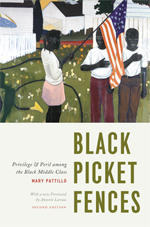 Oh, the kids. They have trouble finding and then committing to a career. The ones who do graduate college often move back in with their parents. And instead of diligently pursuing the next milestone, they're likely to spend their time hanging out with friends and chasing after the latest expensive fashion trends.
Oh, the kids. They have trouble finding and then committing to a career. The ones who do graduate college often move back in with their parents. And instead of diligently pursuing the next milestone, they're likely to spend their time hanging out with friends and chasing after the latest expensive fashion trends.
They aren't the subject of yet another trend piece about the perceived failings of millennials. Instead, they're reaching adulthood in the mid-1990s, in a black, middle-class neighborhood on Chicago's far South Side pseudonymously known as Groveland. This is the terrain of Mary Pattillo's Black Picket Fences: Privilege & Peril Among the Black Middle Class, originally published in 1999 after Pattillo spent several years living alongside the close-knit neighbors whose struggles, compromises and triumphs the book chronicles.
Continue reading this entry »
— Daphne Sidor
Books Thu Aug 08 2013
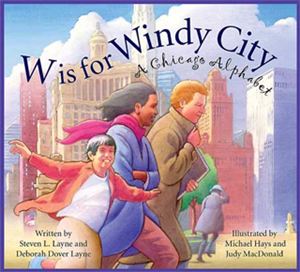 Look up a list of "Best Chicago Books" and you'll find the usual suspects trotted out over and over again: your Nelson Algrens, your Saul Bellows. If you're lucky, you'll get a Richard Wright or even a Sandra Cisneros. And don't get me wrong, these authors are on this list for good reason. But we all know there is much more to Chicago literature. There is great science fiction and fantasy, thrillers and mystery, young adult fiction... and writers who have written worthy books, yes, in the past two decades.
Look up a list of "Best Chicago Books" and you'll find the usual suspects trotted out over and over again: your Nelson Algrens, your Saul Bellows. If you're lucky, you'll get a Richard Wright or even a Sandra Cisneros. And don't get me wrong, these authors are on this list for good reason. But we all know there is much more to Chicago literature. There is great science fiction and fantasy, thrillers and mystery, young adult fiction... and writers who have written worthy books, yes, in the past two decades.
So when I say I'm compiling a comprehensive list of Chicago's best fiction, you can believe that I mean comprehensive. And when I say I want this list to come from the mouths of Chicagoans, I mean I want you to tell me what should be on this list. So help me out - what are your favorite novels or short story collections by Chicagoans? (Don't be too strict - authors don't need to be born, raised, and buried here. I draw the line at poetry and picture books, however.) Once I've compiled a good list based on your suggestions (and, admittedly, my own favorites), I'll read and review every one of them for Book Club. It'll be like the literary equivalent of one of Chicago's famous food challenges, hopefully with less barfing. Leave your suggestions in comments, on our Facebook page, or on Twitter @gapersblock @edenrobins #faveChicagobooks, and stay tuned for updates.
Image courtesy of the Chicago Parent website
— Eden Robins /
Events Thu Aug 01 2013
 The night's theme may have been "Cruel Summer: Stories of Learning the Hard Way," but 2nd Story's first-ever appearance at City Winery last Monday gave audience members the giddy feeling of a summer fling. Combining storytelling and live music against the backdrop of the gorgeous City Winery stage, the event was perhaps one of the most carefully crafted storytelling soirees of the season. Director and curator Jess Kadish turned a mundane Monday evening into one hell of a summer bash.
The night's theme may have been "Cruel Summer: Stories of Learning the Hard Way," but 2nd Story's first-ever appearance at City Winery last Monday gave audience members the giddy feeling of a summer fling. Combining storytelling and live music against the backdrop of the gorgeous City Winery stage, the event was perhaps one of the most carefully crafted storytelling soirees of the season. Director and curator Jess Kadish turned a mundane Monday evening into one hell of a summer bash.
"Cruel Summer" started off with a bang as the first storyteller, Sarah Zematis, regaled us with the tale of losing her virginity at the local Renaissance Faire (pardon the pun). Any piece containing the phrase, "I had been carrying this burden, otherwise known as my hymen, for far too long," will be received with great cheer by an attentive crowd. The joyous ruckus continued as Zematis owned up to any fake British accent, ridiculous madrigal or Medieval pick-up line that her performance required. Mike Przygaod and The Przmatics, who provided original material between each set, added a rich layer to the story by accompanying the action with a precise soundtrack. In fact, these two elements were what stood out the most to a 2nd Story newbie like myself: the performer's commitment to the theatricality of their work and the use of music as a storytelling device.
Take the second storyteller, Khanisha Foster. Her heartbreaking (and often laugh-out-loud funny) account of trying to make it as an actor despite her ethnically ambiguous looks showcased her chameleon-like ability to imitate everyone from a shady theater director to Gilda Radner. Foster's performance was easily the most bittersweet of the night. Her vulnerability was palpable as she described the struggles of wanting to be seen as a talented thespian while being obscured by her "Latina" looks. (Foster's mother is white and her father is black.) Her versatility as an actor allowed her to easily transition from one character to another, making the piece even more poignant.
Bobby Biedrzycki was the last storyteller to take the stage. At that point, the evening had taken a melancholy turn and Biedrzycki delivered a performance to match the mood. His exploration of love as defined by moments, interspersed with reflections about his drug-addiction, was a satisfying though slightly subdued end to the evening.
2nd Story has been part of Chicago's Live Lit scene since 2002, making it one of the longest running storytelling events in the city. Ozzie Totten, company member and the night's MC, repeated 2nd Story's mission statement a few times during the show: "We share the first story so you can share the second story." It is, of course, impossible to gauge how many audience members will do that. However, as I saw the enraptured and oftentimes interactive audience, I have little doubt that the stories heard that evening demonstrated "the power to educate, connect, and inspire."
Photo by Ines Bellina
— Ines Bellina
Author Tue Jul 30 2013
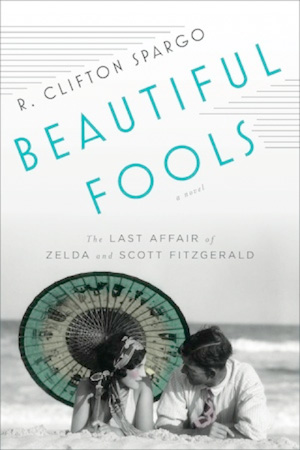 Last Wednesday night at Women & Children First, Chicago-area historical writer R. Clifton Spargo read from and discussed his latest novel Beautiful Fools, a fictional imagining of Scott and Zelda Fitzgerald's final vacation.
Last Wednesday night at Women & Children First, Chicago-area historical writer R. Clifton Spargo read from and discussed his latest novel Beautiful Fools, a fictional imagining of Scott and Zelda Fitzgerald's final vacation.
While the biography of the Fitzgeralds has been portrayed and probed by countless authors, Spago's book examines a lesser-visited moment in the couple's tumultuous, co-dependent history. Fools follows the couple on their final trip to Cuba, which occurred mere months before Scott Fitzgerald died of a heart attack. Since Zelda was institutionalized in the periods immediately proceeding and following the trip, the jaunt to Cuba also marks the last time the two saw one another.
While Zelda and Scott typically kept up a tireless and well-documented correspondence and happily courted the public eye, this trip to Cuba remains shrouded in ambiguity. As Spargo discussed at the reading, essentially no records of the couple's trip exists, and no letters between the two reference what occurred during their eight-day stay. This period, then, is ripe for creative exploration.
Continue reading this entry »
— Erika Price
Author Mon Jul 29 2013
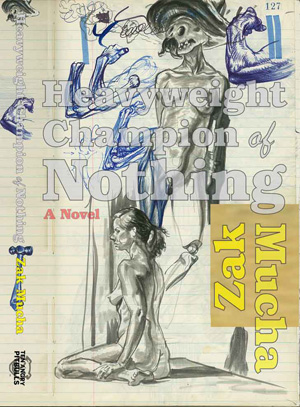 Heavyweight Champion of Nothing is a novel by local author Zak Mucha and is published by local Wicker Park publishing company, Ten Angry Pitbulls.
Heavyweight Champion of Nothing is a novel by local author Zak Mucha and is published by local Wicker Park publishing company, Ten Angry Pitbulls.
The story, set primarily on the North Side of Chicago, is captivating and thought-provoking, capturing Chicago's vivid scenery. Johnny, our late-20-something narrator, is a gritty, blue collar guy employed by a moving company, alongside characters with names like Paulie, Dolly, and Irish Jay. While reading, I could picture every corner, dive bar, and neighborhood Mucha describes. The story mostly takes place in Roger's Park and Edgewater, just off Broadway Avenue, though you don't need to know Chicago to understand and enjoy, because Mucha details and captures every aspect of what Chicagoans already understand the neighborhood to look and feel like.
The unique story illustrates the blue collar lives of native Chicagoans, immigrants, poor people, and guys just trying to get by. An adult version of The Outsiders is what comes to mind, but now our version of Pony Boy is all grown up and telling his story from a new perspective. Mucha's real and captivating prose explores the universal themes of morality, the struggle to get by, family issues, romance, sex and guilt with a new and gritty spin.
Readers can identify easily with Johnny, the moral dilemmas he faces when broke and desperate, his relationship with his family, and most of all, his love and sometimes hate for Chicago as he tries to figure it all out.
Heavyweight Champion of Nothing is one of the best books I have read this year. Mucha deserves to be recognized far beyond my little review in Gaper's Block. I am looking forward to Mucha's next book, to be published later this year. Read this book, Chicago! Pick it up here.
— Melinda McIntire
Author Mon Jul 29 2013
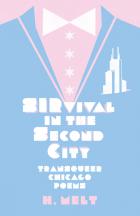 Title onward, the theme of H. Melt's SIRvival in the Second City: Transqueer Chicago Poems is not subtle. This is a book that is emphatically about being trans. But it is also about being cisgender. (For the unfamiliar: this is simply the counterpart to transgender. As trans people identify as a gender other than the one assigned to them at birth, so cis people identify as the same gender the delivery-room nurse dealt them.) As Melt says in the book's introduction: "It is not public knowledge that trans people exist. And that cisgender people exist as well."
Title onward, the theme of H. Melt's SIRvival in the Second City: Transqueer Chicago Poems is not subtle. This is a book that is emphatically about being trans. But it is also about being cisgender. (For the unfamiliar: this is simply the counterpart to transgender. As trans people identify as a gender other than the one assigned to them at birth, so cis people identify as the same gender the delivery-room nurse dealt them.) As Melt says in the book's introduction: "It is not public knowledge that trans people exist. And that cisgender people exist as well."
I've chanced occasionally on a certain strain of Internet comment in which a cisgender person encounters this term for the first time and expresses deep outrage at its existence. The default state is suddenly delineated; it turns out that it has boundaries. Such commenters may feel that their gender is now subject to some unwelcome question, however tacit. What's the point of being normal if you have to think about it?
Too bad for them. Melt writes: "This book is my attempt to stare back at those who never question gender." And if such readers are ruffled by this, they may be further irked by the place from which they (Melt's preferred pronoun) stare: these very broad-shouldered streets, home of the regular guy.
Continue reading this entry »
— Daphne Sidor
Author Thu Jul 25 2013
Let's say you live in Chicago, and you'd like to go get a taste of the city's abundant literary culture, but it's oppressively hot or mind-numbingly cold outside. Thankfully, you can take in some of Chi-town's best literary events without ever leaving your apartment. How? Through the magic of podcasting. Shut-ins, rejoice! Here's a list of some of the city's best literary podcasts.
All Write, Already!
Hosted and curated by Essay Fiesta hosts Willy Nast and Karen Shimmin, AWA! is a delight for aspiring writers and devoted readers alike. The bi-monthly podcast consists of three parts: first, Karen and Willy discuss a piece of recent literary news; then the hosts throw the mic to a Chicago author, who reads an excerpt of their work; finally, the cast closes with an interview with the author. This show is enlightening, inspiring and informative.
The Paper Machete
Each week, WBEZ podcasts a selection from The Green Mill's weekly, rip-roarious live magazine, The Paper Machete. Each week's episode features a short snippet from the previous week's live music performance, followed by a short, select essay from the show's full program of humorous, on-point cultural criticism. It's a great way to keep up with the show if you miss a week, and the music recording and mixing is high caliber.
Fictlicious
Chicago's one-and-only fiction reading series, Fictlicious had a delightful podcast covering the full length of each live show. Since the show only occurs four times a year, this is a fantastic way to stave off your cravings until the next live event. The show's awesome live music is included, too!
Chicago Humanities Festival
Every year, the Chicago Humanities Festival delights and frustrates the city's denizens with a massive list of amazing events headed by famous authors, artists, and commentators. While the selection is always dazzling, the sad reality cannot be ignored: no one has the money or time to attend every event. Thankfully, the Chicago Humanities Festival podcast makes it possible for the broke or time-starved Chicagoan to catch up on their culture.
Which podcasts did I miss? Hit up the comments section with suggestions.
— Erika Price /
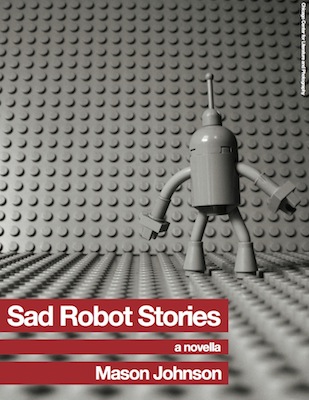 You might expect a book with the title Sad Robot Stories to make you laugh. Sure, a robot with human emotions is nothing new. But wouldn't it be kind of funny if C3PO sang the blues? You know, if his verses were written by, say, Mason Johnson, one of the Chicago writers most likely to make me ROTFLMAO? This was my thinking, and if you're anything like me, you're already hunting-and-pecking your way through this review to find a release date (August 12th) and some purchasing information (CCLaP). Turns out, though, in Mason Johnson's Sad Robot Stories, a fictional novella rather than a blues song, we see that there's a great deal more than laughter to be found in the woes of a machine.
You might expect a book with the title Sad Robot Stories to make you laugh. Sure, a robot with human emotions is nothing new. But wouldn't it be kind of funny if C3PO sang the blues? You know, if his verses were written by, say, Mason Johnson, one of the Chicago writers most likely to make me ROTFLMAO? This was my thinking, and if you're anything like me, you're already hunting-and-pecking your way through this review to find a release date (August 12th) and some purchasing information (CCLaP). Turns out, though, in Mason Johnson's Sad Robot Stories, a fictional novella rather than a blues song, we see that there's a great deal more than laughter to be found in the woes of a machine.
The title character of this book is Robot with a capital R, and he's sad because there are no more people on Earth. Some unnamed cataclysmic event wiped us all out. "Even the minute sound of blood rushing through veins and arteries, speeding through the heart and up to the brain--which sounded to Robot's technologically advanced thingymajigs like a warehouse filled with porcelain toilets constantly being flushed--was gone. Robot missed the toilet sound that was the human race." He means this in the nicest way possible. Really. Unlike many of his "siblings," or fellow robots, he seems to have genuinely liked people, more than spiders or flies or even cats. It's because of people--or, to be specific, because of a guy named Mike--that Robot is not just sad, but also has sad stories to tell, that he even knows what a story is.
You see, a couple of pages into the book, we double back; we're taken to "before the end of everything." We learn that, like his literary predecessor, Frankenstein's creature, Robot once observed life from a distance with sweet, childlike innocence, curiosity, and sensitivity, qualities you wouldn't expect from a walking heap of metal. However, unlike Frankenstein's creature, Robot is not the only one of his kind, and he didn't have to hide in the shadows for long, either. Mike came along and taught him about the ups and downs of life, and about stories and storytelling.
Later, when Robot shares some of Mike's detective novels with a new friend, a robot friend, she tells him, "These books feel so familiar. Each book feels like a piece I'd been missing. As if there were a lost screw that was suddenly found." For book lovers like myself, the same can be said about Sad Robot Stories, a book that, despite its premise, reads more like fable and allegory than campy science fiction. It may playfully explore a host of complex, timely issues, such as the mechanization of the workforce, gender nonconformity, and the looming threat of extinction. It may give us a fun, fresh, and surprisingly moving view of human nature and the human condition. But at its core it's about the magic of storytelling, a celebration of how the best stories, the "honest" stories, can make us feel whole, sustain us, connect us, and give us hope--even in our darkest hour. No matter how pressing and suspenseful the physical needs of this post-apocalyptic world, it seems the only real currency here, the only real power, is the story. And that makes Robot a superhero of sorts. That's way better than C3PO singing the blues.
— Alba Machado /
Books Thu Jul 18 2013
Onward Toward What We’re Going Toward, an upcoming release by Chicago-based author Ryan Bartelmay, is as much an exploration of dependence as it is a novel. Following multiple protagonists as they struggle through decades of familial problems, Bartelmay presents human existence in units: the family, the couple, and the isolated. In so doing, his text constantly begs the question, What do people really want from people?
Protagonist Chic Waldbeezer is, externally, the pinnacle of 1950’s lifestyle: a plant worker (in the factory where his grandfather worked) who married his sweetheart, Diane, two years after he graduated high school. Internally, however, Chic is hopelessly lost, driven primarily by physical impulses. Detached from his family and lusting after his brother’s wife, Lijy, Chic seems to be in crisis throughout the entire text, attempting to negotiate his own desires with his expected identities as father and husband.
Elsewhere in Illinois lives Mary Norwood, the book’s second protagonist. Mary, like Chic, is directionless, but is instead driven by emotional dependence. (This is not so subtly conveyed when, toward the beginning of the text, she drunkenly asserts, “I need someone to take care of me. I need someone to take care of me. I need someone to take care of me.”) When her husband of less than a year (husband #10), Green Geneseo, suffers a stroke that leaves him paralyzed and unable to speak, the juxtaposition of physical and emotional dependence proves especially compelling.
The title of the novel is a strong indicator of its tone. Onward Toward What We’re Going Toward is at once playful and fatalistic, implicative of an aimless trajectory. Such directionlessness is the defining characteristic of the protagonists within, which raises the question: can a novel successfully be built around the theme of aimlessness?
Continue reading this entry »
— Miden Wood /
Books Tue Jul 09 2013
 While reading Sarah Bruni's debut novel The Night Gwen Stacy Died, I remembered, quite wistfully, all the stupid things I did when I was 17. Granted, I was no Sheila Gower, Bruni's bored teenage protagonist who allows herself to be kidnapped at gunpoint by a restless, cab-driving stranger who calls himself Peter Parker (as in Spider-Man). But thanks to Bruni's thoughtful prose and carefully-drawn characters, I can understand why she goes for it, absconding with him for weeks in Chicago, where neither knows exactly what they're doing, or why (until a wild coyote Sheila is drawn to begins to clear that up for them).
While reading Sarah Bruni's debut novel The Night Gwen Stacy Died, I remembered, quite wistfully, all the stupid things I did when I was 17. Granted, I was no Sheila Gower, Bruni's bored teenage protagonist who allows herself to be kidnapped at gunpoint by a restless, cab-driving stranger who calls himself Peter Parker (as in Spider-Man). But thanks to Bruni's thoughtful prose and carefully-drawn characters, I can understand why she goes for it, absconding with him for weeks in Chicago, where neither knows exactly what they're doing, or why (until a wild coyote Sheila is drawn to begins to clear that up for them).
I like Bruni's Sheila -- she has no friends (except for the equally marginalized Anthony Pignatelli ("The 'G' is fucking silent anytime it comes before an 'N'," he says; I wished there was more of him!), she works in a gas station in small-town Iowa, and she confides in a taxidermied museum coyote, whom she'll probably miss when she finally delivers herself to Paris after graduation. She's the quintessential unimpressed-romantic-loner-teenage girl, and if a movie based on this book is ever made, Christina Ricci should totally teleport the 1998 version of herself to play the role.
One of Bruni's deftest moves was her choice of title. The Night Gwen Stacy Dies is also the name of issues #121-122 of The Amazing Spider-Man comic book series, in which Spider-Man battles the Green Goblin and -- spoiler alert! -- his girlfriend Gwen Stacy dies at the end. When Peter begins to refer to Sheila as Gwen Stacy and she goes along with it, even wearing a Gwen-esque dress and doing comic book-y things, my concern for her fate kept me turning the pages right through an unpredictable, impressionistic, and lyrical denouement.
You don't have to know the Spider-Man story, or even be curious about it, to enjoy this book. Read it if you have a soft spot for teenage loners and star-crossed lovers, or for coming-of-age novels that are not your typical coming-of-age novel.
You can pick up a copy of The Night Gwen Stacy Died this Friday, July 12 at 7:30pm at Women & Children First Bookstore, 5233 N. Clark St., where Bruni will read and sign books.
Photo courtesy of the author's website.
— Lara Levitan
Reviews Mon Jun 10 2013
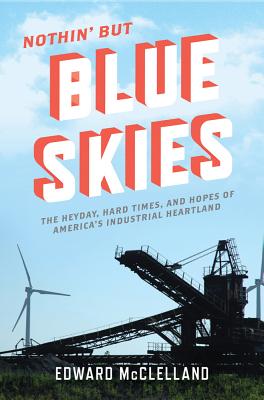 By Jenny Gavacs
By Jenny Gavacs
If you want an authentic history of the Rust Belt — told by UAW members, not East Coast pundits or DC politicians — read Nothin' But Blue Skies: The Heyday, Hard Times, and Hopes of America's Industrial Heartland by Edward McClelland. McClelland is a native son (from Lansing, MI) and writes about the rise and fall of manufacturing in the Great Lakes region through the eyes of people who were there. It's the on-the-ground, gritty reportage this saga of sweat and tears deserves.
Nothin' But Blue Skies is a tapestry of vivid writing and living moments. Like a tapestry, the narrative isn't always clear — the book betrays its beginnings as a collection of articles spanning McClelland's career — though there's a general chronological arc from the 1930s to the 2010s. The single-article roots probably caused some of the seeming contradictions throughout the book (in separate places it calls both Detroit and Flint, MI America's murder capital), and claims that seem shallowly researched (where did McClelland find evidence that "Cleveland swiped [the Rock 'n Roll Hall of Fame] from runner-up Memphis by stuffing the ballot box"?). But the bumpy narrative ride is worth it for sections where humanity pours forth from people like Oil Can Eddie, ex-president of Steelworkers Local 65 in south Chicago; Moose, the Flint worker Michael Moore wronged on camera; or spitfire Mayor Betty of Homestead, PA. This book takes a line worker's-eye-view, and a line worker would hate to get academic on the fine points.
Continue reading this entry »
— Book Club /
Reviews Thu Apr 25 2013
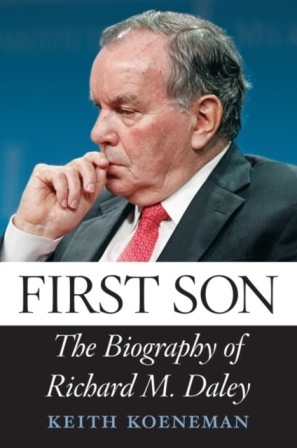 For any long-time Chicagoan who would care to read a biography about the man, Richard M. Daley needs no introduction. But with the vast, undeniable influence the former Chicago mayor had on this city (not to mention the entire trajectory of state and national politics), his dense, multi-faceted legacy deserves assessment.
For any long-time Chicagoan who would care to read a biography about the man, Richard M. Daley needs no introduction. But with the vast, undeniable influence the former Chicago mayor had on this city (not to mention the entire trajectory of state and national politics), his dense, multi-faceted legacy deserves assessment.
Unfortunately, for all of its breadth and detail about the city and man himself, Keith Koeneman's First Son: The Biography of Richard M. Daley is not quite that book.
From growing up as a spoiled, awkward, yet tenacious son of a powerful Chicago mayor, to the last days under his own tenure as mayor, First Son draws from over 100 in-person interviews to portray the evolution of a man whose complexities resulted in visionary, cosmopolitan leadership and advocacy, as well as raw, ego-driven political gamesmanship. As Koeneman effectively demonstrates, both these traits undoubtedly transformed the look, feel, and stature of Chicago into a globally renowned city distinct from the one firmly controlled by his father--yet one still embroiled in scandal, corruption and nepotism under his watch.
Through the lens of Daley's life and political ups-and-downs, Koeneman guides us through Chicago's transition from the heyday of the Chicago Machine to the consolidation of Daley's own political dominance, all while examining the myriad of individuals whose paths he crossed--powerful aldermen and local officials, business leaders, and former advisers-turned-leading members of the national Democratic Party.
Continue reading this entry »
— Jason Prechtel
Author Mon Apr 15 2013
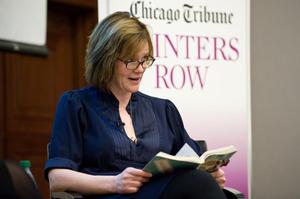 “Paul,
“Paul,
Greetings from sunny Seattle, where women are “gals,” people are “folks,” a little bit is a “skosh,” if you’re tired you’re “logy,” if something is slightly off it’s “hinky,” you can’t sit Indian-style but you can sit “crisscross applesauce,” when the sun comes out it’s never called “sun,” but always “sunshine,” boyfriends and girlfriends are “partners,” nobody swears but someone might occasionally “drop the f-bomb,” you’re allowed to cough but only into your elbow, and any request, reasonable or unreasonable, is met with “no worries.”
Have I mentioned how much I hate it here?”
This excerpt, the first paragraph in a 15-page tirade against Seattle, is just a sample of the scathing witticisms Maria Semple has to offer in her recent novel Where’d You Go, Bernadette? The book is the latest in a long list of Semple’s accomplishments, including her first book, This One is Mine, as well as her work as a writer on a number of television series, including “Arrested Development,” “Mad About You,” and “Ellen.” Bernadette is also slated to be made into a motion picture, written by Scott Neustadter and Michael H. Weber ((500) Days of Summer) and produced by Nina Jacobson (The Hunger Games film series) and Brad Simpson.
I had the opportunity to sit down with Semple just before her reading and talk-back, “Printers Row: Maria Semple,” hosted at the Tribune Tower by Trib Nation. There we discussed Maria’s relationship with Seattle, her writing process, and her perspective on the success of her book.
As the bus pulls up to the curb outside Tribune Tower, I am nervous for two reasons. The first is, knowing I am about to meet face to face with a writer for “Arrested Development,” it will take every professional fiber of my being to not let this interview devolve into an episode of The Chris Farley Show. (“Remember Gob…? Yeah. He’s awesome.”)
The second reason I’m nervous I already acknowledge as ridiculous. But, having read Semple’s commentary on Seattle, I can’t help but wonder if her bite is as bad as her bark. I saw what she did to that city. Would she chew up Chicago with the same contemptuous mockery? I half expect Bernadette herself, enormous sunglasses atop her nose, to come marching in decrying our unpredictable weather and monochromatic wardrobes.
Continue reading this entry »
— Miden Wood
Sleep and I are going through a rough patch.
I know I’m to blame for this recent rift. I’ve been absent, unavailable—and even when I am around, our encounters are brief and unsatisfying. I look back longingly on all those wonderful Sunday mornings we spent together; those brief, flirtatious meetings on the El; the five alarms I snooze most mornings just to be with it…
It’s not that I don’t love Sleep. It’s just that for the past two days I’ve been distracted by the latest book occupying my nightstand: The Way We Sleep. An anthology of short and flash fiction, comics, and interviews, Sleep examines those moments in which the waking and sleeping life collide. The collection, at once comical and poignant, contains stories dynamic enough to stand alone, yet all the more enticing in their juxtaposition. From page to page the reader unfolds a richer, more complex notion of sleep; what it means to us, and the culture that surrounds it.
Some say I need a solid eight hours; I say I need a less interesting book.
If you, like me, are looking to catch a good read about catching z’s, The Book Cellar (4736-38 N. Lincoln Ave.) will be honoring the recent publication of The Way We Sleep with a reading from the collection this Saturday, April 13, at 7pm. The reading will feature contributors Billy Lombardo, Ben Tanzer, Dakota Sexton, and Natalie Edwards, as well as a shadow puppet show presented by Jill Summers and Susie Kirkwood.
Copies of the anthology, and other books by contributors, will be available for sale at the event. RSVP at their event page.
— Miden Wood
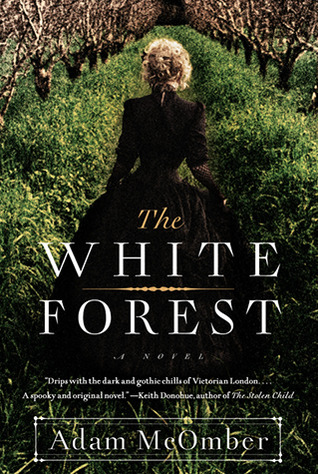
The White Forest by Adam McOmber, published by Touchstone, is a tale set in the late 19th century in England, centralized on the life of a young teenage heroine, Jane Silverlake, and her two companions, Maddy and Nathan.
Jane is a young woman possessing magical talents she inherited from her mother. She experiences an alternate dimension, can hear inanimate objects hum, moan, and speak to her, and sees imagery in her world that she alone can see. The heroine is a mixed combination of Regan of The Exorcist, Hermione from the Harry Potter series, and a young Miss Havisham living in a crumbled estate. Early in the text, the character is intriguing. We learn about her "talents", her upbringing, her tragic, yet interesting life. But soon enough, I became bored and unsympathetic to her. She is a tragic figure, anti-social, and odd. I did not find myself rooting for her, but rather tired of listening to her perspective. As a heroine, she falls flat. The character lacks dimension and personality, and as she serves as the narrator of the text, the entire story becomes tiresome.
Continue reading this entry »
— Melinda McIntire
Books Sun Jan 13 2013
 Kathryn Born's The Blue Kind begins with the main character, Alison, describing the city Neom, a place that has been taken over by drugs, or "mugs," as the character calls them. The drug pushers are taking over, and newer, harder drugs are entering the market. Everyone is high all the time, smoking, popping, pushing, and snorting every drug out there. The hipsters live in the part of Neom called Runaway Village where we find Alison, her husband Cory, and friend Ray living in an abandoned theater. Alison battles with her broken relationship with her husband and tries to escape from the rising drug lord, Atom, all the while drifting in and out of a drug haze that alters her memory.
Kathryn Born's The Blue Kind begins with the main character, Alison, describing the city Neom, a place that has been taken over by drugs, or "mugs," as the character calls them. The drug pushers are taking over, and newer, harder drugs are entering the market. Everyone is high all the time, smoking, popping, pushing, and snorting every drug out there. The hipsters live in the part of Neom called Runaway Village where we find Alison, her husband Cory, and friend Ray living in an abandoned theater. Alison battles with her broken relationship with her husband and tries to escape from the rising drug lord, Atom, all the while drifting in and out of a drug haze that alters her memory.
Kathryn Born does not disappoint with her descriptions. I can vividly see the city of Neom as I'm reading the novel. Every part of the world that Born has created is beautifully colored in and etched out to the enth degree. Even the drugs are described in detail to the extent that you can almost see the characters getting high. She writes:
"Missy and Kota knick each other's legs with a straight razor, and then twist the cap off the bottle that looks like nail polish. Each girl brushes some mustard-colored liquid onto the cuts on their legs. They clean off the blade and hand it to Cory, and already they are blinking slowly, holding hands."
While the details are plentiful, the dialogue is lacking. The characters never develop their own voices, making it difficult to tell who is speaking. The dialogue has a teenage-like quality to it. I can't count how many times the word "like" is used, and the dialogue overall doesn't have much depth to it. While the dialogue may have been an active choice by Born, it takes away from the characters and is distracting from the story.
There are a lot of different themes in this novel, almost too many. Memory, codependence, drug addiction, and immortality get lost within each other. The chapters are short and as soon as new or important information is mentioned that would propel the story and characters forward, it abruptly ends. This occurs up until the very end making it hard for the story to move forward, and even harder to grasp onto what the characters are saying. I find myself wondering why certain pieces of information are offered at alll; some details of Alison's past are mentioned and never revisited. Some of this happens while the character is getting high and is chalked up to a drug-related memory problem. But, because the characters are constantly forgetting everything, it is hard to latch onto anything, making the storyline motionless.
Overall, this novel is very creative and the details make it come to life. But, there are some nagging issues with the dialogue and storyline that obscure themes and miss out on opportunity to expand on them. Pick up this science fiction novel for a short read at The University of Chicago Press.
Kathryn Born will be launching The Blue Kind along with Joseph G. Raymond, Inside the Whale: A Novel in Verse, and Raymond Richard, Book of Raymond: A Journey from Prison to Praise and Poetry this Tuesday, Jan 15 @7:30pm at Revolution Brewing, 2323 N. Milwaukee Ave.
— Julie Zarlenga
Reviews Thu Jan 10 2013
On Tuesday night, acclaimed writer and native Chicagoan, George Saunders charmed a sold-out audience at Lincoln Hall. The event, which was hosted by The Book Cellar and Newcity, featured Saunders reading from his latest, Tenth of December, and engaging with his former student and celebrated author Adam Levin.
There was a surge of publicity for Saunders in the weeks leading up to the event. This isn't necessarily uncommon for a well-known writer with a new release; publishing houses pay their publicity people a living wage to get some time on NPR or some space in the Tribune. Naturally, these pieces weren't the "New Book from New Voice!" type, but they packed a similarly excited punch. In fact, Many placed Saunders way, way up there in American letters, or at least argued that he's The Writer of This Moment.
One piece in the New York Times Magazine entitled "George Saunders Has Written the Best Book You'll Read This Year," more than any other, fully articulated this argument -- and of course, made the point offered in the title.
Whether you agree that Tenth of December is the best book you'll read in 2013, (and how can we be sure? It's not even mid-January yet, Times) Tuesday night was the best reading you could see in Chicago in 2013. Of that, I'm sure. And for those present, it reinforced something long evident; George Saunders is a delight!
Continue reading this entry »
— Kevin Morris /
Reviews Tue Nov 06 2012
Mike Daisey is known for more than just his off-the-cuff monologue delivery style and propensity to insert himself into unlikely situations for the sake of story. He's known more widely for a gaffe perpetrated on NPR's "This American Life" earlier this year in which he provided a staggering account of treacherous working conditions at Foxconn, a factory in China where iPads and iPhones are built. The segment was subject to the same brand of Daisification — whipping and spinning details for impact — that all of his stories undergo, and garnered an unprecedented swath of attention from listeners.
In true literary fashion, Daisey's accounts of factory life were embellished, expanded upon for effect, and bolstered with unreal detail. Indeed, many of the interactions Daisey described with workers were fabrications, and thus, his ruination was apparently set in motion. "This American Life" retracted the broadcast, and host Ira Glass challenged Daisey to explain himself on air.
Continue reading this entry »
— Claire Glass
Reviews Thu Nov 01 2012
Kathleen Rooney's Robinson Alone, a novel in poems, imagines the adult life and eventual disappearance of poet, musician, and artist Weldon Kees through her character, Robinson. From leaving his small hometown to the police's discovery of his Plymouth Savoy on the North side of the Golden Gate bridge, Rooney fills in the moments, conceiving the circumstances that might have led the writer to orchestrate his vanishing from California, or perhaps, life altogether. In poetic form, with epistles woven in, Rooney speaks volumes in few words.
 Rooney is co-founder of Rose Metal Press, a small publisher focused on work that lives outside traditional genres with short shorts, flash, micro-fiction, and novels in verse among its titles. She lives in Chicago and his written several books of her own including For You, For You I Am Trilling These Songs (Counterpoint, 2010).
Rooney is co-founder of Rose Metal Press, a small publisher focused on work that lives outside traditional genres with short shorts, flash, micro-fiction, and novels in verse among its titles. She lives in Chicago and his written several books of her own including For You, For You I Am Trilling These Songs (Counterpoint, 2010).
A lonely cat and a pair of red socks soaking in the sink greeted friends and police who searched Kees' apartment for answers. The same goes for Robinson who, like Kees, brought a sleeping bag, wallet, watch and the contents of his savings account with him when he disappeared. He told a friend he was headed to Mexico, maybe for good, and asked another, the notable Pauline Kael, how she managed to keep going.
Rooney's Robinson Alone (Gold Wake Press) maps Robinson's departure from small-town life -- poet Weldon Kees' hometown of Beatrice, Nebraska to be exact -- to New York City and on to the West Coast. None of these geographical extremes are comfortable for Robinson for very long, and his restlessness is effectively palpable from page to page, propelling the narrative forward.
Continue reading this entry »
— Claire Glass
Reviews Wed Oct 10 2012
Local online publication The Toucan Magazine released issue number 18 on Oct. 1. The magazine, which publishes short prose and poetry on a quarterly basis, has been going strong for the past few years under editrice Laura Rynberg. Cover art always showcases a toucan in some form, and this issue is no different. Denny E. Marshall, who also contributed a few poems to boot, is behind this issue's artwork. 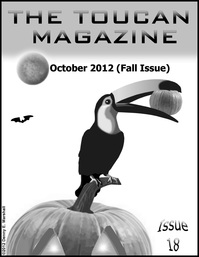
For a glimpse into the magazine, read a poem by Amy Ekins, who is pursuing a creative writing degree from Northumbria University in England, entitled Butterfly. The text is vivid and encapsulating, conjuring the image of ink pressed to paper, organically forming the shape of wings.
Another contributor, Rick Hartwell, a retired middle school English teacher based in California, offers a flash fiction piece titled The Skateboard. The story holds the main character in a time of self reflection about an old friend and a night they spent skateboarding in San Francisco. Hartwell makes us feel alive, reliving the buzz of late night escapades of our past.
More of this issue's content can be read online, along with past issues. And to those writers out there, look for the magazine's submission guidelines to see how you could end up in a future issue. So, indulge yourself and see what The Toucan has to offer.
— John Wawrzaszek
Reviews Wed Oct 10 2012
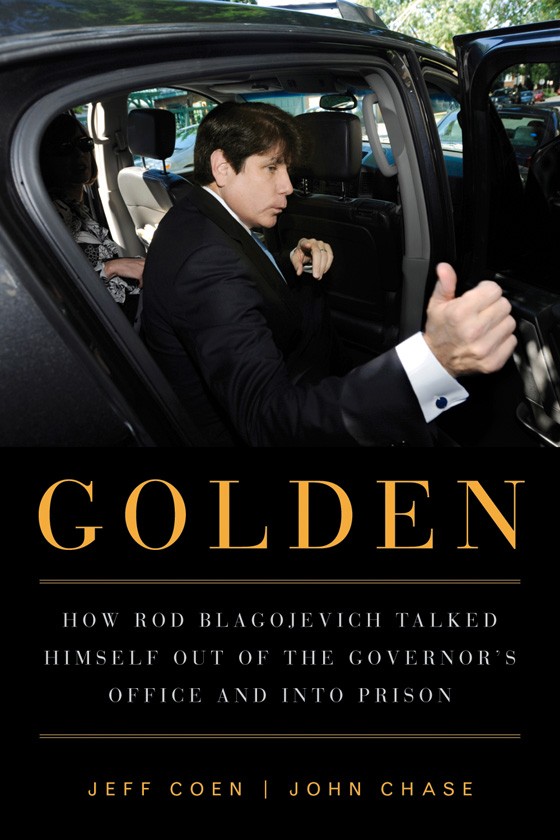 These days, the words "Rod Blagojevich" are bound to get a smirk or a groan from nearly anyone in Illinois. After all, the jailed ex-Governor's fall from grace was both a national spectacle and another embarrassment for a state with a history of corruption and imprisoned chief executives. Even back in December 2008, when FBI transcripts emerged of the former Governor's alleged attempts to sell President-Elect Barack Obama's Senate seat to the highest bidder, all the details were overshadowed by Blagojevich's infamous line, "I mean, I, I've got this thing and it's fucking - golden...and I, I'm just not giving it up for fucking nothing."
These days, the words "Rod Blagojevich" are bound to get a smirk or a groan from nearly anyone in Illinois. After all, the jailed ex-Governor's fall from grace was both a national spectacle and another embarrassment for a state with a history of corruption and imprisoned chief executives. Even back in December 2008, when FBI transcripts emerged of the former Governor's alleged attempts to sell President-Elect Barack Obama's Senate seat to the highest bidder, all the details were overshadowed by Blagojevich's infamous line, "I mean, I, I've got this thing and it's fucking - golden...and I, I'm just not giving it up for fucking nothing."
But despite the amusing theatrics, the unlikely story of Blagojevich's political career serves as a reminder that the American electoral system rewards candidates with charisma and campaign fundraising skills over those with ethics or actual competency for public office.
Continue reading this entry »
— Jason Prechtel
Reviews Fri Sep 28 2012
 There were two brothers who grew up in a trailer park, and one of them who used to run around in his Underoos snipped off his best friend's nipple with a nail clipper.
There were two brothers who grew up in a trailer park, and one of them who used to run around in his Underoos snipped off his best friend's nipple with a nail clipper.
It sounds like one of those odd stories about childhood you'd hear over a few beers at the end of the night; something brought out from the trenches. In fact, it may have been for anyone who grew up with Aaron Teel, Austin, Texas-based author of Shampoo Horns and winner of the 6th annual Rosemetal Press Chapbook Contest. "Tater's Nipple" is based on a real memory from Teel's childhood and it's one of the chapbook's semi-autobiographical shorts told from the perspective of Cherry Tree, a 12-year-old living in Seaview, Texas.
Continue reading this entry »
— Clarisa Ramirez
Events Fri Sep 21 2012
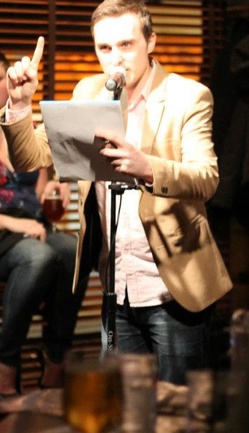 Monday night, September 17, at the Park West, 10 storytellers competed for a chance to be named the GrandSLAM Champion of storytelling by the Moth. The Moth is a New York based non-profit organization dedicated to the art of storytelling. The Moth currently has 10 cities participating in Story Slams across the country and expanded to Chicago three years ago to host two different monthly Story Slams at Haymarket and Martyrs' each month.
Monday night, September 17, at the Park West, 10 storytellers competed for a chance to be named the GrandSLAM Champion of storytelling by the Moth. The Moth is a New York based non-profit organization dedicated to the art of storytelling. The Moth currently has 10 cities participating in Story Slams across the country and expanded to Chicago three years ago to host two different monthly Story Slams at Haymarket and Martyrs' each month.
The GrandSLAM gathers the winners of each of those monthly competitions to compete to become the ultimate Champion. The 10 participants were challenged to tell a story themed around "Fall From Grace" in five minutes or less, with no paper or reading, just the teller and a microphone. Some of the stories the audience heard were from a former monk who quit the monastery, a young religious girl who lost her devout mother and rediscovered herself, a young husband whose wife came out to him as bisexual, and an atheist opening up the secular world to his Mormon girlfriend. Brian Babylon, a radio host at Vocalo, served as host of the event.
There were three teams of judges to rank between 1 and 10 comprised of at least two to four people who have been to a slam before, or have participated as a storyteller. This year, Dana Norris, host of Story Club Chicago was one of the people selected to serve on a judging team.
"The stories were heartfelt and often dealt with the most difficult moments in the tellers' lives," Norris said. "The audience was eager for the stories and I based my judging as much on the audience reaction as my personal opinion. Judging was difficult, especially when we had to knock off points for going over time. The experience overall was great and I learned a lot effective storytelling by being on the judging panel."
Alvin Lau was named the Grand Champion. As Grand Champion, he will be invited to attend the Moth Ball, a ball hosted for the champions across the country in New York.
Out of all the storytelling events throughout the city, The Moth tends to be geared to popular audiences, marketed similarly as a comedy show. Tickets for the event were sold out at $26 a pop and the venue was standing room only. While the stories were heartfelt and personal, and tellers possessed talent, they seemed over-rehearsed and lacked the genuine aspects of the art of storytelling that smaller scale events tend to showcase. The venue and content were shiny and at times overdone. The event ran 3 hours for only 50 minutes of actual stories. The GrandSLAM seemed concentrated on the theatrical, comedic aspects of the evening, and items like VIP seating and fancy cocktails, rather than the stories themselves.
The Moth is a huge non-profit entity compared to the local, grassroots shows and artists who produce and create locally. The Moth may have a broader audience, but if you're looking for a genuine storytelling experience, I would recommend attending one the many events located all over the city in different neighborhood venues throughout the month. Overall, I enjoyed the evening and the stories.
— Melinda McIntire
Books Mon Aug 27 2012
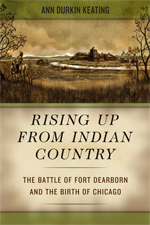
On August 15, 1812, 95 men, women and children were killed or taken prisoner by 500 Potawatomi warriors a mile outside of U.S. military outpost Fort Dearborn. In later years, the "Fort Dearborn Massacre" became known as a foundational event in the history of Chicago, inspiring an 1893 monument and one of the four stars on the city's flag.
But should we really call it a massacre?
In Rising Up From Indian Country: The Battle of Fort Dearborn and the Birth of Chicago, Ann Durkin Keating revisits the early history of Chicago and the settlement of the surrounding "Indian Country" region to explain the complex chain of events that led to the incident in question. Throughout the book, the North Central College History professor argues that previous historical accounts have oversimplified or ignored the vital role that personal ties and tensions between key figures among the Native American tribes, Europeans, and the newly-established Americans played in the events at Fort Dearborn and across the continent during the War of 1812.
Continue reading this entry »
— Jason Prechtel /
Reviews Sun Aug 12 2012
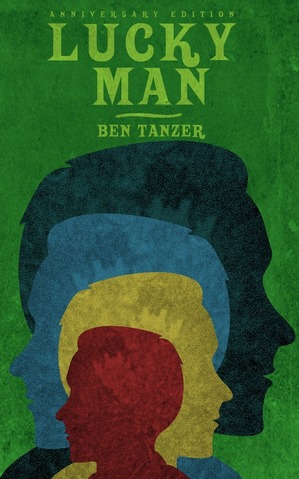
The 5th Anniversary Edition of Lucky Man, the debut novel by Chicago author Ben Tanzer, was re-released by Artistically Declined Press in spring 2012. Lucky Man is about Gabe, Jake, Louie, and Sammy, four Generation X-ers growing up in upstate New York, narrating from their high school days and on. This special edition includes a foreword by Chicago writer, Brandon Will, an afterword and Q & A from Tanzer, and a re-published review of the novel from CCLAP.
The story is something of The Outsiders meets The Virgin Suicides. Like The Outsiders it involves a sleepy town and teenagers involved in violence, drugs, and reckless behavior. Unlike The Outsiders, which was written for a young adult audience, Lucky Man is for adult readers who can recall their own high school, college, and early 20s, and what it was like to discover their own story. Like The Virgin Suicides Tanzer's narrative possesses a sense of impending doom. The story spirals out from Jake's suicide, affecting the other characters' personal tragedies.
Lucky Man's setting is at first generic; their town goes unnamed, and the university that two characters attend is simply referred to as "State." We do not really know the specific setting until Sammy and Louie decide to move to California. This aspect of the story made it easily identifiable to any reader from any part of the country. I found myself picturing the Central Illinois factory town where I grew up, and Illinois State as their institution of choice.
Lucky Man includes a historic cultural point of view, infused with drugs, issues, and music specific to the eras the characters are experiencing. The reader peers through time as the characters find music from the Grateful Dead, Pink Floyd, Violent Femmes, and other notables. As they move from Upstate New York, to San Francisco, to New York City, they witness or become enmeshed in the Deadhead scene, the crack crisis, and the Dot-Com Bubble to name a few. Gen-Xers should definitely pick this one up if not only to identify with the nostalgic narrative.
Although nostalgia plays a part in making this a worthy read, the nontraditional writing--Tanzer does not use quotation marks to mark dialogue--lends to some of the appeal. At first, I found it difficult to follow without attribution, but getting to know the characters' recognizable voices cleared things up. The resulting tone is conversational, and provides context for the its surprise ending (no spoilers ahead).
The ending is a bit confusing, described in the CCLAP review by Jason Pettus as an "...attempt to be clever in a Palahniuk kinda 'ah-hah' way, but without nearly as good a handle over how to do so." There is a schizophrenic dream-like quality here that is not crucial to the story, but does keep you guessing what will happen next.
If you are looking for a happy, light read, this is not the book for you. This is depressing, told realistically and true to life. Tanzer's writing is witty and engaging, and all together, this is one worth reading.
You can pick it up on your Kindle for $2.99 or order from Artistically Declined Press.
— Melinda McIntire
Reviews Mon Jul 16 2012
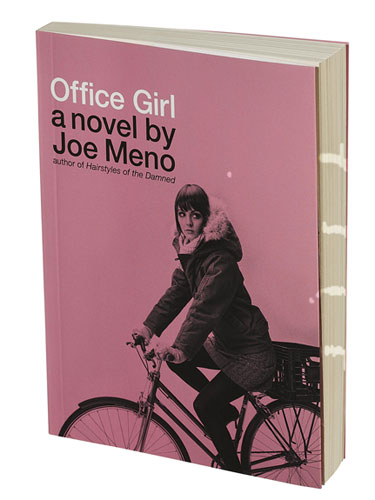
Office Girl by Joe Meno, author of Hairstyles of the Damned, is a quirky, eccentric love story, yet non-love story, set in Chicago's West Town neighborhood in early 1999. Published by Brooklyn publisher Akashic Books, the novel focuses on two twenty-somethings stuck in nothing jobs who find each other, yet lose each other, while creating a unique art movement throughout Chicago.
Written in sassy snippets, the story centers in February 1999. For we '90s nostalgics, it draws on a part of history not often memorialized in literature, though the president was being acquitted of lying about an affair with a certain intern, Y2K had many convinced that the world was on the brink of disaster, and the Hanging Chad was about to become front page news.
Continue reading this entry »
— Melinda McIntire /
Books Tue May 29 2012
"We may agree on the premise that each work of art is at least in part perfect, while each critic is at least in part imperfect. We may then look to each work of art not for its faults and shortcomings, but for its moments of exhilaration, in an effort to bring our own imperfections into sympathetic vibration with these moments, and thus effect a creative change in ourselves. These moments will of course be somewhat subjective, and if we don't see one immediately, we will out of respect look again, because each work contains at least one, even if by accident. We may look at the totality of the work in the light of this moment - whether it be a moment of humor or sadness, an overarching structural element, a mood, a personal association, a distraction, an honest error, anything that speaks to us."
-Matthew Goulish, 39 Microlectures.
SAIC Professor Matthew Goulish's new book The Brightest Thing in the World: 3 Lectures from The Institute of Failure contains what seems like millions of those moments of exhilaration--too many to report here. Like much of Goulish's work the book is a series of lectures that weave together seemingly disconnected scraps of real life; Dick Cheney's fateful quail debacle, the development of the Fibonacci series, pets abandoned in the aftermath of Hurricane Katrina, and death as we relate to it either viscerally or with detached fascination. He investigates what one's death can say about one's life, or not.
The collection, published by Green Lantern Press earlier this month, was drawn from Goulish's existing work, each piece selected for its resonance on the page. These works, Goulish explains in the book's introduction, stand the test of time, context, and medium, extending beyond the room in which they were first delivered, and on to the page. He asks, "Can a book make the room larger?" which for me, means that the book is part of the performance, an experiment of sorts, investigating whether text built for a particular moment in history, engineered for speaking aloud, can make the private act of reading an extension of that performance.
Appropriately, in the first lecture, "Audience Failure Index," Goulish describes the ways an audience can fail to properly consume a performance--be it a movie, or a piece of theater--according to social expectation. It is described in the early pages as, "...watching the show as the show intends itself to be watched. As such the lecture was to provide a reverse-engineered instruction manual for the intentional enactment of audience failure; a how-to guide for the unsatisfied." (15) Here, Goulish refers to a project he embarked on with friend and colleague, Tim Etchells, called The Institute of Failure, which operated on precisely this basis. As a reading audience we too are implicated here as consumers of the work in its new medium. From here, the lecture moves to new terrain, in a way that seems both highly calculated and like a stream of consciousness. Goulish's language is poetic and conversational at the same time, occasionally edging towards something clinical and journalistic. It seems to tell us he is actively processing his thoughts and that we are witnessing something as it unfolds anew, like a series of summersaults, much as one might feel at a live lecture.
Goulish performs one of those summersaults early on in "Audience Failure Index," moving from a direct examination of the audience via his own ideas and passages of other's work (Proust, Camus) to Dick Cheney's quail hunting incident. He says, "The apotropaic audience, that looks away at the threshold, turns its attention elsewhere, foregrounding a negative space and backgrounding the performance, and in the act harnesses the force of time. Thus was the extent of my thought on the subject at the moment when Vice President Dick Cheney shot a man in the face." (19) He describes the narrative with which the general public was presented, followed by a diagram of the scene and what he perceives as a truer account of the afternoon's events. Many more well architectured shifts follow and move the lectures forward.
The Final Lecture, "The Brightest Thing in the World: A Portrait of Visionary Naturalist W.N.P. Barbellion & Tribute to Historian and Teacher George Roeder," we're told, was intended to examine the last days in the life of Barbellion. The scientist's exhaustive daily journal keeping transports easily and lends to interesting conjecture. At the time that Goulish began this piece of writing though, he suffered the great loss of a close friend and colleague, which derailed him from his academic pursuit. Here, in alternating snippets between history and real loss, Goulish bares himself, letting us in on the nature of this interruption in writing and in life. The most emotionally jarring of the three lectures, this one succeeds on an entirely different avenue.
Jane Blocker writes in the book's introduction of Goulish's performance project Goat Island, "As Charles Garoian (writing about a Goat Island workshop....) has noted about these pedagogical practices, the curriculum is constituted by interruptions, based on interventions designed to break continuity and disrupt the conventional linearity of time and space." Goulish's reader audience may approach this work with a series of expectations based on what is understood as a lecture, what results the solitary act of reading usually delivers, and likely much more. Goulish's work is to disrupt those pressures, acknowledging and ultimately deconstructing the potential impact those burdens have on art. Readers may feel unsteady at first, but it is not difficult to delve completely into Goulish's world and to feel certain guidelines of readership recede, giving way to his utterly unique voice.
— Claire Glass /
Reviews Fri Apr 13 2012
 When you think of the Chicago River, what springs to mind? Most likely, the bridge at Michigan Avenue, kayaking in the summer, architectural boat tours, and assuredly the famous reversal over a century ago. There's a lot of river that extends beyond the downtown area, however — all 156 miles of it — most of which you may not recognize.
When you think of the Chicago River, what springs to mind? Most likely, the bridge at Michigan Avenue, kayaking in the summer, architectural boat tours, and assuredly the famous reversal over a century ago. There's a lot of river that extends beyond the downtown area, however — all 156 miles of it — most of which you may not recognize.
Photographer Richard Wasserman spent 10 years learning every fork and tributary of the Chicago River, documenting it on his large format camera. This type of black and white photography, chosen both for the incredible detail it offers and for its ability to capture architecture without distortion, took a lot of care — not to mention, time — to execute.
"It looks very simple, and it is," said Wasserman, referring the large format process. "But an amazing amount of things can go wrong." It took Wasserman anywhere from 30-60 minutes to set up the equipment and capture a final image.
On average once weekly, and often on weekends, he added to his collection of river photographs — including the piles of boxes of unused prints and negatives never printed — not thinking it would be anything more than a personal project. It wasn't until he attended a workshop in Pennsylvania four or five years ago that someone gave him the idea for a book.
 Midstream, recently published by the Columbia College Chicago Press, is a collection of 104 of these images of the river, including some of the Skokie Lagoons and where the river passes, unassuming, by the Northbrook Court Shopping Mall.
Midstream, recently published by the Columbia College Chicago Press, is a collection of 104 of these images of the river, including some of the Skokie Lagoons and where the river passes, unassuming, by the Northbrook Court Shopping Mall.
Beyond being lovely to behold, the images are important historical records of part of Chicago's built environment: the river, and how humans have interacted, fiddled, and messed with it for two centuries. Although there are no people in these images, they were never far from Wasserman's mind. "I think about people just as much, even if they're not pictured," he said, discussing how the relationship between the river and Chicago's residents has changed over the years.

Currently, Wasserman is working on two projects, for which he continues to focus on recording what has changed, and what might be forgotten. In addition to documenting old movie theaters in Chicago and the surrounding suburbs, the other project, "Eminent Domain," has taken him across the country to places confiscated by the government for the "public good" — such as Bensenville, Illinois, where 600 families and 25 businesses were displaced thanks to the expansion of the O'Hare airport; or Norris, Tennessee, where the first TVA dam displaced upwards of 3,000 families.
"People forget. Society forgets," he said. "Some [of these] changes are good, but the people who pay the highest price are those who have no voice."
Wasserman will be signing copies of his book on May 1, from 6pm to 8pm at the Lincoln Park Campus of DePaul University (2400 N. Sheffield Ave.). On May 31, he will be speaking and showing select photographs from Midstream at the McCormick Bridgehouse Musuem (376 N. Michigan Ave.) during lunch.

— Megan E. Doherty
Books Fri Apr 06 2012
Gapers Block's Arts and Culture editor, Kelly Reaves reviewed I Take Back the Sponge Cake, and recommends it to all you day dreamers out there--particularly those among you with hammock access. Here's an excerpt of her review:
"Those who enjoy directing their own artistic experiences should check out I Take Back the Sponge Cake, a "lyrical choose-your-own-adventure" book, illustrated by SAIC alumna, Loren Erdrich. Erdrich's simple yet gritty drawing style compliments Sierra Nelson's poetry nicely, giving us disorienting sensory experiences to dip our toes into and leaving us to sink or swim from there."
Click to read the rest.
— Claire Glass
Reviews Fri Nov 04 2011
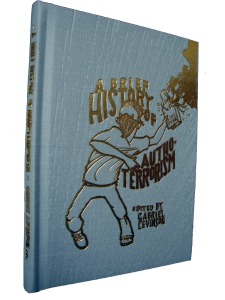
If I judged A Brief History of Autho-terrorism by its cover, my immediate impression would be of something well-crafted, attractive, and somewhat confusing. A 1920s-style golden title winds gracefully around an equally golden man throwing a flaming book, entitled Read This! I did, and the stories inside were not unlike the front: slightly disjointed, occasionally beautiful, and overall a well-executed if not always cohesive collection of stories on the nature of autho-terrorism, which editor and Columbia graduate Gabriel Levinson defines as "the seemingly illimitable, sometimes violent lengths to which authors will go to promote their work." Pulling from the past and present, A Brief History is a collection of tales illustrating this idea to varied, sometimes powerful, generally interesting effect.
The author-terrorists of A Brief History loom large. Sometimes literally, as in Jeffrey Dorchen's "She Could Have Been Immortal", the story of a superwoman poet (Zatoichi) who is six feet tall, incredibly strong, and as familiar with kindness as she is with violence. She realizes "the authenticity of her relationships with fear and death and the inauthenticity of the money-manipulating class,", and goes on an epic killing rampage, shooting a former vice president in the kneecaps (this may not be far from a few reader's hearts), dismembering oil magnates, and killing those of a certain annual income. In death, her book of poems reaches publication, and "the death Zato the superhero samurai feared and fought off with her dreams of a literary proclamation of existence was...death, actual and mortal," leaks out into the world in a quiet, indirect literary legacy.
This is possibly the most extreme example of autho-terrorism. Other stories are less bloody but nonetheless legendary: art-terrorist DK and friend Lori take an exhilarating, illegal ride on the new Chunnel, their meticulously planned actions a mere blip on the cameras, but the first actions of an underground revolution. Some acts are even smaller in scale, such as "The Grip of Love", an intense, anxious love story that culminates in near-absurd violence for the sake of a literary inspiration. Not all autho-terrorism is selfless or even ethically motivated -- one of the shortest stories (barely 10 pages) details the manipulative promotion of a book of poems gone horribly wrong.
A Brief History packs a scattered punch, exploring the many aspects behind doing anything to make your literary work seen, heard, and read. Sometimes, the thread running through these stories feels frayed -- it's less of a collection and more of a sampler. It needs something to bring them together, a reordering or addition that takes the disparate parts and makes them feel like a true history, a chronicle instead of a collage. The stories are varying degrees of strong and interesting in their own right, but the purpose behind their pairing feels vague and somewhat forced, diminishing their power. It's a compelling read nonetheless, showing the twists and turns a concept can take in different hands and times. In terms of catching and keeping attention, A Brief History of Authoterrorism succeeds, achieving the audience its protagonists' so greatly desire.
— Rose Lannin
Reviews Mon Sep 12 2011
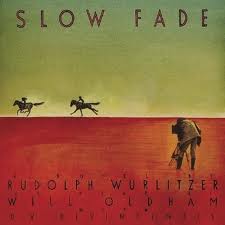
Rudolph Wurlitzer, grandson of the founder of Wurlitzer organs, is a regular renaissance man. He wrote the libretto for a Philip Glass opera, a documentary about Tibet, and several novels (Nog, The Drop Edge of Yonder, Hard Travel to Sacred Places). Cinephile households are those in which he's most likely to be a household name, having written several screenplays, including Two-Lane Blacktop and Pat Garrett and Billy the Kid. His 1984 novel Slow Fade was rescued in re-release this past June by the book imprint of local indie record label Drag City, complete with an audio version read by Will Oldham (a.k.a. Bonnie "Prince" Billy).
Continue reading this entry »
— Rebecca Hyland
Reviews Mon Jul 25 2011
Revisiting beloved childhood books is an act of bravery: will it pass the test of time, retaining echoes of the magic and meaning it held for you at 7, 10, or 12? Or is it more like a time capsule, bringing back not so much the sense of connection you felt turning its pages, but a picture of who you were during that time, the context of your life as a small child or "young adult" (that nebulous literary category) or teenager? Sometimes there's none of the staying power and a little of the history (the Goosebumps plots blur fairly easily in my own recollections), but in the case of Wendy McClure's The Wilder Life, the Little House on the Prairie series is both and then some: a classic story, a study in McClure's past and present, and more.
The more starts both in 1867 Wisconsin, as well as the 1970s Oak Park, Illinois of McClure's youth. "I swear to God it's true: we were a girl named Laura, who lived and grew up and grew old and passed on," she writes, "and then she became a part of us somehow. She existed fully formed in our heads, her memories swimming around in our brains with our own." Following these memories -- of Laura, which were actually transcribed by her daughter Rose (as I learned later, among many other things -- Rose was deeply involved in the libertarian movement, Laura briefly had a brother, Pa co-managed a hotel?) -- propels the editor by trade and long-time Laura fan across the Midwest. Her fiancée gamely along for the ride, she searches for the real-life truth and meaning amongst the butter churns, locusts, sod houses, and Nellie Olsen encounters that made up the simple, appealing, and relatable universe McClure deems "Laura World". "And Laura World, for all its enticing remnants washed in on the tides of time and antique shops," she says, "was another world, and to visit it but all was unthinkable."
Continue reading this entry »
— Rose Lannin
Reviews Tue Jul 19 2011
The Double Feature line from resident comic super group Four Star Studios expands with a bang due to the release of Action Double Feature #1. Combining the talents of top-tier mainstream industry professionals on creator owned projects always brings out some of the best works in comics. Does Action Double Feature #1 measure up in a glorious heaping of explosions or does it succumb to being a weak in the knees fizzle?
A satisfying yes to the former.
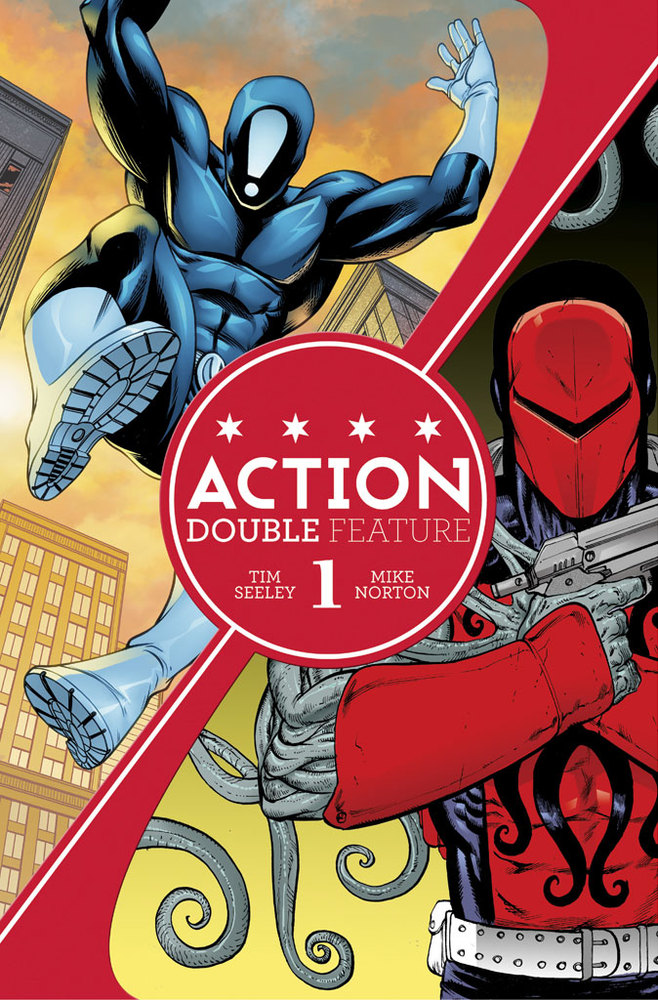
The first part of this issue is comprised of a Jack Kraken, a squid-like covert spy, tale by writer Tim Seeley and artist Ross Campbell. I found the exploits of Jack Kraken to be engaging and brisk enough to whisk me away. There's a real Hellboy vibe to this segment but Kraken distinguishes himself from Big Red enough so the similarity is not glaringly obvious.
Operating in a world of humanoid offshoots, the full exploits of this seasoned covert agent have only been hinted at, providing only a glimpse at the expansive world building happening behind the scenes. This is further enhanced by Campbell's action orientated artwork that draws in the reader to the grittiness and dirt of a secret, basement level of reality.
The second offering from Action Double Feature #1 is centered on The Answer!, an exclamation point wearing man of action. Written by Dennis Hopeless and rendered by Mike Norton, the segment nicely juxtaposes a laid back, cruise ship vacationer, who ostensibly will feature prominently in future issues, with the undersea, Thunderball-esque derring-do of The Answer!
Although I wanted to understand more about the protagonist, I have a feeling it is Devin MacKenzie, the vacationer, who the reader is supposed to latch on to. Norton's artwork is crisp and clean as always and special recognition needs to be paid to colorist Mike Englert for bringing real depth and vibrancy to Norton's already slick pencils.
Double Feature is turning out some real hits that offer up story morsels big enough to satisfy but dainty enough to leave me wanting much more. I'm looking to revisit these characters in future editions and to examining the other offerings from these hometown comic heroes.
— James Orbesen /
Reviews Tue Jun 28 2011
Paul Hornschemeier's latest outing, Life with Mr. Dangerous, follows the exploits of Amy Breis, a dissatisfied Midwestern twenty-something. Stuck at a crossroads, Amy meanders through life against the backdrop of her favorite rerun-laden television show, "Mr. Dangerous", and her own amusing inner thoughts. She must also endure isolation, boredom, the trials of dating, an unsympathetic boyfriend, a nagging mother and a soul-crushing workplace. In short, Amy is a girl who's got it going on.

Life with Mr. Dangerous bottles the dull, deadpan and, frankly, boring minutiae that fills most of our time on Earth. However, equating this book with boredom isn't even close to what I'm trying to get at. What Hornschemeier does best here is to take those pointless work conversations, droll lunch time exchanges and meaningless dates and turns them into the meat and bones of Amy's story. The result is a compelling look at a startlingly real-life protagonist.
The mundane comings and goings of Amy's life resonated with me so much that I read this entire book in one quick sitting, unable to set it aside. I felt that these everyday situations worked so well because they were conveyed with such earnestness and honesty. While a lesser author may take the easier route by having Amy chafe at her work-a-day lifestyle, playing the lone rebel card or chained tiger role, the fact that Hornschemeier has her take it in stride hammers home her believability. This also has the added benefit that when Amy finally does break away from her comfort zone, the emotional impact is greater because she seemed so resigned to coasting through life.
Continue reading this entry »
— James Orbesen
Reviews Mon Jun 20 2011
Double Feature is an ongoing digital comic effort by the fine folks at Four Star Studios, featuring a series of stories based around a central genre, be it horror, sci-fi or action. Each issue is split down the middle, featuring two tales from different author-artist teams. In a way, Double Feature is like the classic Saturday popcorn cinema, served up on a new platform -- the digital comic book -- in a way that is both fun and forward-thinking.
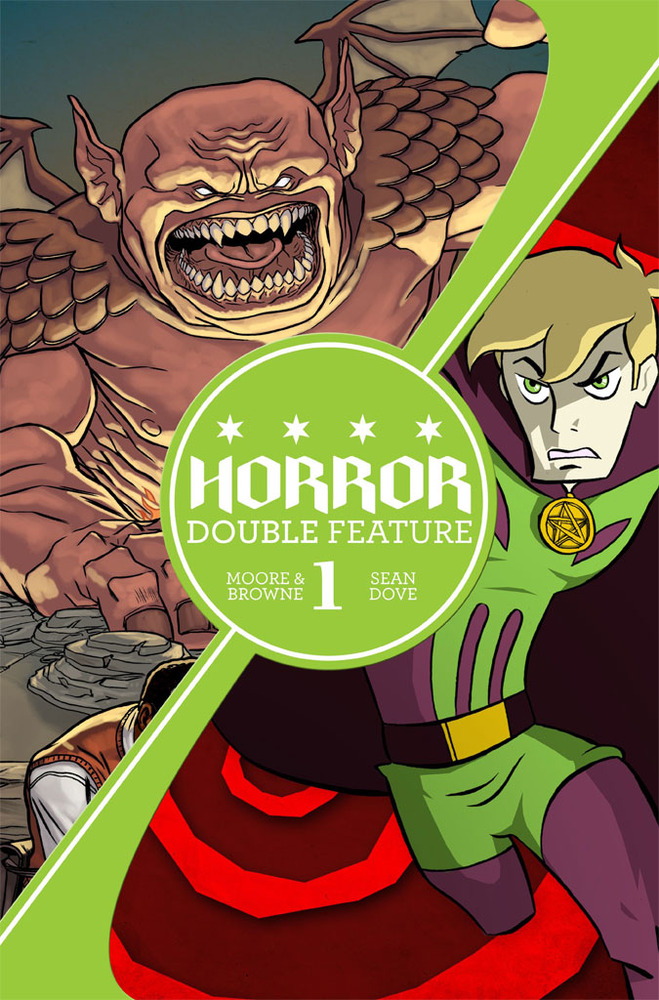
The first entry in this initial foray is "Monsterology", written by B.Clay Moore with art by Ryan Browne. Featuring the adventures of the gruff, Kurt Russell-esque Colonel Robert "Cannonball" Kennard and the always affable, young Billy Cosby-ish Dr. Curtis Lacy, "Monsterology" wastes no time getting to the point. The pace is brisk and the action is plenty. Moore moves things along with aplomb, refraining from wasting the reader's time with excessive window dressing. Browne's art is equally rapid, rendering scenes with a dynamic energy that keeps the reader's focus front and center. Actions define the characters, and given the space constraints, this approach feels spot on. Tone-wise, I couldn't help but shake the similarities between this yarn and the Atlas Comics' monster of the month features churned out at Marvel pre-Fantastic Four.
The second spot belongs to "Kid Cthulhu", written and drawn by Sean K. Dove. Perhaps more horror-themed than the preceding story, "Kid Cthulhu" follows the titular character in his occult investigations of (where else?) Arkham, Massachusetts, appropriately steeped in Lovecraftian lore. With a far more animated and angular art style than one would expect, "Kid Chthlhu" feels like a deranged Saturday morning cartoon. Nevertheless, despite the cleverness of the title, this feature had a number of gaffs, such as the confusing initial brush with the antagonist, that distracted from the overall story. Perhaps this wouldn't be as glaring in a full twenty-two page comic, but since this feature is only eight pages long it is very noticeable. Still, I look forward to future episodes due to the tight connection to Lovecraft's source material.

While both features are well done, it is how they're packaged that makes Double Feature Horror stand out. As with all Double Feature endeavors, the comics are available digitally. This means lower cost and greater accessibility, especially for the technologically inclined, bookshelf bereft, or casual comic reader. Furthermore, each issue downloaded comes with creator commentary and behind the scenes features, acting as a comic book translation of DVD director commentary.
Four Star Studios is committed to blazing a new trail for digital comics. With massive shakeups in the print industry and publishers continually placing their bets on safe sellers, Double Feature looks to reconcile the gap between print and digital comic mediums by offering fun, fresh content from some of Chicago's best and brightest.
— James Orbesen
Reviews Tue Jun 07 2011
Hamster Rage is an interesting beast by writer and artist Brian J. Crowley. It's a webcomic featuring an anthropomorphic super powered hamster with a penchant for trench coats and cheese. Nevertheless, the lead character isn't what makes this an odd read. It is the feeling that so much more is going on beyond the scenes than the reader is privy to. The first introductory batch, available online or in a recently released paper issue, features Roosevelt, the titular raging hamster, alongside a boatload of supporting characters duking it out in the streets of Chicago, featuring a number of landmarks familiar to people who frequent Montrose between Ashland and Clark.
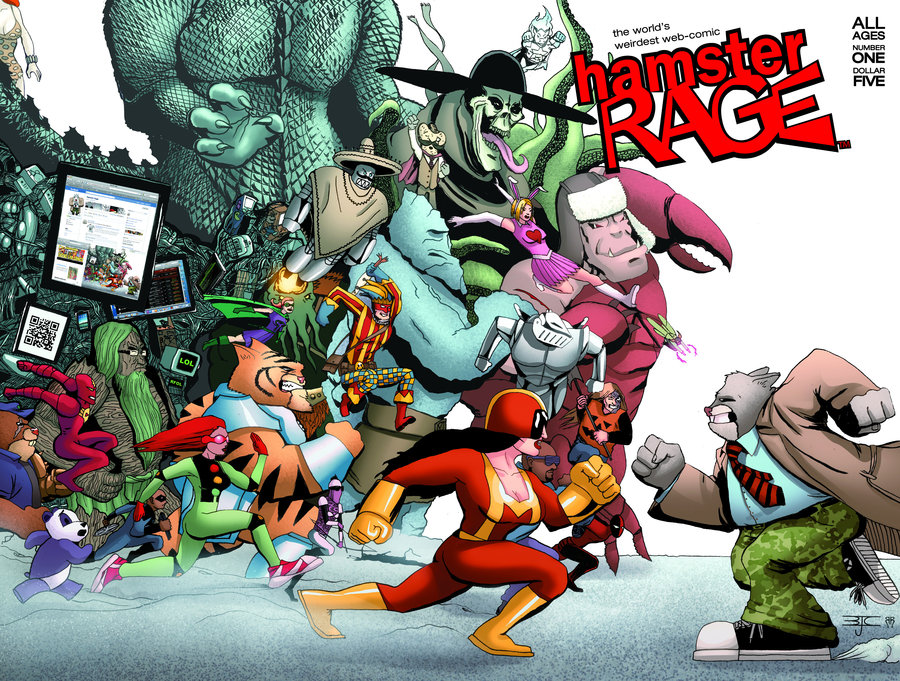
Perhaps the most endearing aspect of this heaping helping of action is the gratuitous number of extras thrown into the mix alongside the animated and cartoony style of Crowley. The vast majority of characters are gimmicks. Some fall a bit flat in that regards but the ones that stick do so quite well. Visual gags abound with characters like Roboto Muchacho and Jet Knight, appearing just enough not to overstay their welcome.
Furthermore, beyond gobs of extras, Hamster Rage is loaded with cameos of other Chicago creators' work and product placement for comic shops. Although these pop-ins are a bit overwhelming and are given far too much space to roam, to the detriment of getting to know Roosevelt one iota, I expect there is some larger purpose to it all. Indeed, there is almost no personality to latch on to as the comic is a large sequence of kicks and punches with little connective tissue beyond 'costume X wallops costume Y and then costume Z shows up and fights'.
As a webcomic, Hamster Rage does have potential to rectify these quirks by releasing tidbits to inform readers but a quick glance at the site is a bit of a letdown in this regard. Some of the site's functionality is suspect with broken links and missing pages. Plus, there's a suspicious absence of new content. While a quick glance at Hamster Rage's fan site does promise something called "Hamster Rage 2.0", the scarce details on the future make recommending this title difficult.
Hopefully more details emerge about what's on the horizon for Hamster Rage. While the first installment is rough around the edges, the sheer volume of characters, some with ample potential, packed into these thirty-odd pages would make it a shame for it all to hit a brick wall.
— James Orbesen
Reviews Wed May 18 2011
Quarantined, courtesy of writer Michael Moreci and artist Monty Borror, is an engaging read that deals with a plague outbreak in the Upper Peninsula of Michigan that has symptoms akin to the tried and true zombie apocalypse scenario. However, aside from being a standard splatter fest, Quarantined is laced with enough mystery that it not only satisfies viscerally but also largely intellectually.
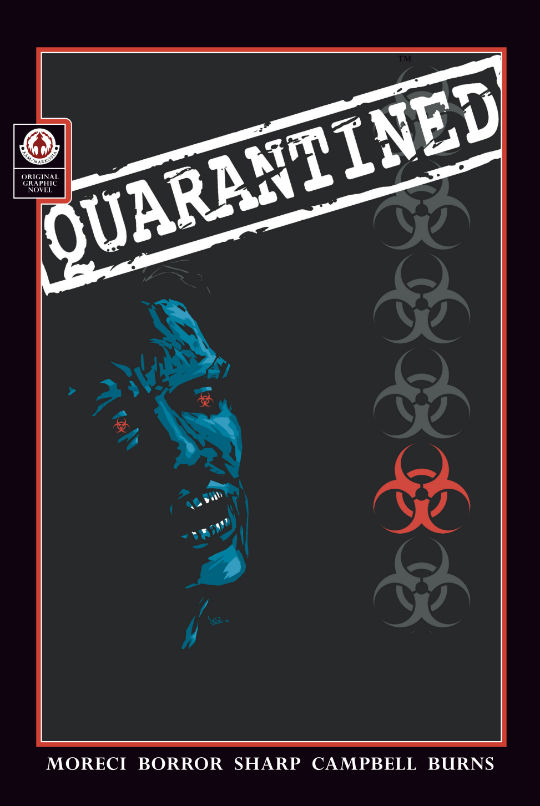
The easiest compliment to give this graphic novel is its effortless pacing. Weighing in at over 150 pages, Quarantined breezes by. Action scenes are peppered throughout but they don't dominate the show. Instead, proper attention is paid to the doings of the quarantined townsfolk in rural Michigan. This is aided by kicking off the narrative in media res.
Placing the action in a country setting is a breath of fresh air in the genre and harkens back to the papa bear of zombie flicks, George Romero's Night of the Living Dead. Rather than stuff the survivors in an urban area, as many zombie tales are wont to do, Moreci structures his narrative in a forested and deserted stretch of land occasionally punctuated by specks of civilization. Borro's art style reinforces these feelings of isolation and abandonment by opting for a moody, atmospheric and stripped down art style that is light on background and solely focused on the moment.
Nevertheless, there are instances where I felt Moreci let slip a golden opportunity to further elevate the story. Literary references crop up in places, such as books read, character's names, philosophies expounded and even where the survivors shack up, a library of all locales. Yet, these references are very superficial as in they are never capitalized on. The reader is pointed towards anticipating a more literary zombie tale but the groundwork laid is scarcely excavated. Perhaps these touchstones would have resonated more strongly if greater attention was paid to highlighting the tension between the literary foundations of the story and the pressing reality of the characters' struggles instead of focusing on side plots that are somewhat inconsequential to the overall narrative.
Aside from some sequential storytelling quirks and visual inconsistencies from Borro, the art helps sell many of the emotional triggers Moreci plays. Throughout the novel, the distinction between survivor and infected is visually muddled. The grayed color palette and lack of detail makes differentiating the two sometimes difficult. However, rather than chalking this up as a failure of the art, I feel it is entirely appropriate. These survivors are called upon to do some inhuman acts. Ultimately this calls into question the thin line that separates these two groups from each other, a theme which is played upon to good effect.
Despite a few missed opportunities, Quarantined is a fine first effort, and ends on a note of despair that seems sure to garner a sequel.
— James Orbesen /
Reviews Mon May 02 2011
Yi Soon Shin may be a name unfamiliar to many Western ears. His exploits during Japan's invasion of Korea in the 16th century are rarely explored by Western audiences, yet his story mirrors one of the West's greatest military engagements -- that of the three hundred Spartans at Thermopylae. Yi Soon Shin embodies the same spirit of King Leonidas, and Yi Soon Shin: Warrior and Defender is a fitting parallel to Frank Miller's seminal work of fictionalized history, 300.
However, the key difference between these two comics lies in the accuracy of facts, figures and grounding in historical reality. Writer Onrie Kompan imbues this debut issue with a history class worth of information that grounds the reader in the specifics and clearly lays out the who and the where. Speaking with Kompan, his enthusiasm for the subject matter is apparent, and the level of research he has conducted shows. Nevertheless, I felt a greater longing for more of the why, the underlying meaning of events generated by emphasizing the creative in creative non-fiction.
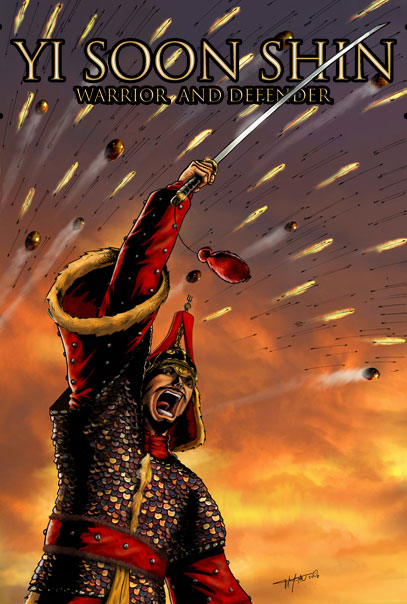
I mentioned that this work and 300 are similar but differ in terms of accuracy and reported information. While Frank Miller presented a stylized and somewhat fictionalized version of Thermopylae, he crafted in such a way that his lax attention to detail didn't matter because the reader, for the most part, was transfixed by the spectacle of it all.
Yi Soon Shin: Warrior and Defender, on the other hand, seems to be the inverse. While the first issue is heavy on exposition stemming from Kompan's need to place the reader in a particular time and place, perhaps too much accuracy is holding back some of the comic's entertainment value. There is a thrilling middle section highlighting a naval engagement, rendered in wide screen, visually stimulating strokes by artist Giovanni Timpano and colorist Adriana De Los Santos. It picks up the pace but it seems that there is a bit too much window dressing for this comic's sake. While this is the first issue and a degree of table setting is required, hopefully this concern can be corrected in future issues by throwing in more characters the reader can latch onto and identify with against the backdrop of conquest and invasion.
A largely factually accurate comic featuring a little known historical figure can be a hard sell. Nevertheless, the beginnings of a satisfying tale about the triumph of an underdog are there, as long as a better balance is struck between fact and truth. Keep an eye out for future issues to see how this project develops.
— James Orbesen
Reviews Thu Apr 21 2011
University of Chicago grad and Book Club author Sudhir Venkatesh asks what's the matter with sociology in his article on fellow U of C/Northerwestern alum Elijah Anderson's new book, The Cosmopolitan Canopy: Race and Civility in Everday Life. The book focuses on Philadelphia, but also addresses the fact that as a country we have become more racially and ethnically diverse, making whites a minority in many large cities. In his review, Venkatesh discusses the birth of sociology, the fascination with conflict and racial tensions, and why this exploration shouldn't be dismissed as paranoia. Of Anderson he writes, "There are few writers openly exploring this undercurrent of hostility and self-doubt experienced by a historically subjugated group that just managed to elect one of their own as president." Although this is technically a review of Anderson's book, Venkatesh's essay does well to discuss the changing face of sociology and why this area of study is still very much necessary.
— Veronica Bond
Reviews Fri Apr 15 2011
 Orange Crush
Orange Crush
Simone Muench
Sarabande Books, 2010
Poetry is a sneaky beast - a poem can mean one thing to one person and mean something completely different to someone else. For me, Orange Crush is all about women: their persecution, their struggle to become something, and their refusal to give up. Simone Muench follows this arc in elegant little bursts of language that takes the reader from "Fever-damaged girls/...Spells/and vixens and dead calico kittens" to "We were once lithographs smeared/with ink-chapped hands, now we are/smooth and inscrutable as bone china..."
Muench's collection starts with "Record," a section devoted to the abuse of women - each poem a tribute to their mistreatment, be it whipping, "the room grows thick with incisions [...] weather me better master" ("You Were Long Days and I Was Tiger-Lined"); witch hunts, "...the little girls/are sick, their voices muffled/by smoke and wool/hands and psalms" ("Psalm"); illness, "We lay down//fixed as wax, let the hospital's/IV & ghost sonata troll through us" ("Count Backward Toward a Future with You in It"); or even by their own design, "Surge of marrow when the body bends/toward its own dismantling..." ("A Captivating Corset"). These poems bleed death and memories - "records" of wrongs not easily forgotten. The last poem in the section, "Photograph 3014: Execution of an Unknown Child" brings this idea sharply into focus as each part ("frame" of the photograph) cleanly captures a "Record of the executed."
The next section, "Rehearsal," pays homage to the "Orange Girls." In the 17th century, the Orange Girls were women who sold small "china" oranges outside of theaters, occasionally passing messages from patrons to actresses and, allegedly, occasionally passing themselves out as well. This section consists of a long, 13-part poem detailing the Orange Girls "rehearsal" for a regular life: They sell oranges, and themselves, for an income and survival - the same way a salesman/shop owner sells his wares. Unfortunately, because they are women, and seen as little more than prostitutes, they don't receive respect or recognition, "...we were sold/in beautiful clothes...//...we were movie stars/who never entered the frame" ("Orange Girl Suite, 1"). They are treated as unimportant - used once and thrown away, literally, "own skin gathering the Baltic's//debris, an intersection of earrings/and quiet, wrists and ropes" ("5"). And because of who they are and what they do, the people surrounding them don't care about their fate and may even place the blame on the girls themselves, "this city closes its windows to the odor//and forgets that a girl went missing/forgets any girl who 'got herself strangled'" ("7").
Continue reading this entry »
— Emily Wong
Reviews Tue Apr 05 2011
God Hates Astronauts #1 is a wild read, courtesy of writer/artist Ryan Browne. What I found to be the most endearing aspect of this first issue was the wry wit interspersed throughout the comic. So few mainstream comics have a sense of humor, it seems that levity in superhero comics is more of an exception than the rule. Everyone is just taking themselves too seriously with gritted teeth and rippling muscles.
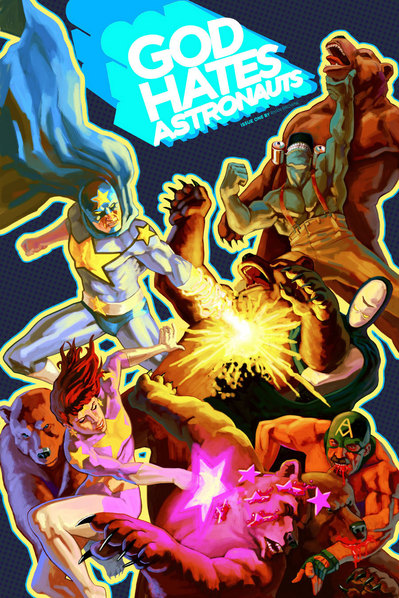
The comic features an eclectic ensemble cast, complete with Browne's recommendations for voice talent for each individual. Highlights include a superhero named The Anti-Mugger who has a penchant for only stopping crimes that relate to mugging. All other matters are not his concern. On paper it may not get many laughs but in execution the character comes alive through his sheer absurdity.
At this early stage it is hard determine an exact plot. This seems to be more of a character driven story with an action packed setup that establishes each personality, then the meat of the story spins out from their interpersonal dealings. So far there are only inklings that reveal information about the title. Why does God hate astronauts? The question is never addressed directly but a subtle hint is dropped that points towards an interesting critique of superheroes and how everyday mortals relate to these powerful protectors.
This first issue does have a lot of establishing to do, and doesn't present a full story in its own right. In terms of telling a story of its own, God Hates Astronauts #1 is part of a larger picture. If you plan on dabbling with this comic invest in following the whole run.
The art is a pleasing blend of crisp detail, reminding me of the uncomplicated and uncluttered style of Mike Allred or Darwyn Cooke, mixed with heavy inked lines. The composition of these lines and their sketchy, heavy placement reminds me a little bit of Alex Maleev at times. However, don't mistake that comparison as me lumping the book into a noir art mold. The heavy color palette and irreverent sense of humor quickly distinguishes itself stylistically from Maleev's body of work.
This is an impressive debut from a local author. If you are looking for a book dripping with quirkiness and housing heavy doses of humor, look no further than God Hates Astronauts #1. The second issue is already available at your local comic shop or online.
— James Orbesen
Reviews Tue Mar 22 2011

Doug Crandell's Sherwood Anderson Award-winning novel The Peculiar Boars of Malloy tells the tale of two male hogs purchased for siring abilities who are wired with "a love that dare not speak its name" (i.e., they're gay). How much is there to say about two hogs and their habits? Not much, but when anti-gay activists get wind of the discovery they swarm the farm and a media circus ensues.
Peculiar Boars is the story of the Bancroft family - teenaged brothers Lance and Ronald, their father Gerald and their Aunt Lee. Their father is a laughingstock in their small Indiana town of Malloy. Extremely short, wearing a boys size 14/16, his anatomy made him the butt of jokes from a young age and his disposition didn't help. He grew up the kind of bullied kid who wants so badly to fit in he'll help others diminish him just to do so. He apparently never grew out of that stage, and lacks a solid sense of self, to put it mildly. He comes across as a petite, rural Homer Simpson crossed with Elmer Fudd. The father has great hopes of turning his image around with his prize hogs and instead becomes a bigger laughingstock when his friends catch the boars in the act and spread the news to the local media.
Continue reading this entry »
— Rebecca Hyland
Reviews Mon Mar 07 2011
"THIS BOOK turns into...15 mind-bending MINI-NOVELS!" states the retro sci-fi cover of Patrick Somerville's The Universe in Miniature in Miniature, and this statement is accurate: made up of little worlds that often explode startlingly large, and just as quickly retract in on themselves, his short stories are affecting, sometimes subtle, sometimes over the top, with plots and characters that are an interesting, at times frustrating mix of blunt and vague. As you read, it becomes apparent that the personal stories are interconnected, forming a grand, epic, very human (and sometimes not so human) tale -- one that is often dark and without clear answers but rarely without a glimmer of hope, if not always clarity.
Continue reading this entry »
— Rose Lannin
Reviews Tue Jan 11 2011
 Most people have some ideas about the '60s in general: Vietnam, the protests, the "hippies." But what about the '60s in Chicago? What about the '60s in Chicago through the eyes of the young men and women who wanted to better the world? Libby Fischer Hellmann uses her latest thriller, Set the Night on Fire, to transport her readers to a topsy-turvy time in the city's (and country's) history, where idealism was everything. Until it wasn't.
Most people have some ideas about the '60s in general: Vietnam, the protests, the "hippies." But what about the '60s in Chicago? What about the '60s in Chicago through the eyes of the young men and women who wanted to better the world? Libby Fischer Hellmann uses her latest thriller, Set the Night on Fire, to transport her readers to a topsy-turvy time in the city's (and country's) history, where idealism was everything. Until it wasn't.
But it wouldn't be a thriller without some mystery, of course. The book opens in "Part One: The Present" with one of the main characters, Dar Gantner, meeting with Rain - a friend? A foe? - in present-day Chicago to talk about "Alix's brother," and "Teddy," "Casey," and "Payton" - more friends? More foes? - as well as a mysterious package, the Convention of '68, and, well, death. Presumably, Dar has just gotten out of jail. And it sounds like something fishy is going on. And that's just chapter 1. Hellmann takes the reader through at least three more chapters (don't worry - they're short) where we follow Dar and Rain around and watch/listen to them do things we don't quite understand while they introduce us to more characters we don't find out much about. Typically, I'm not a fan of books that seemingly start in the middle of all the action, but Hellmann's technique really works here. The reader learns just enough to become intrigued - but not annoyed or frustrated. Actually, I found myself hurrying along to the next chapter so I could "discover" exactly what was going on.
Chapter 5 is when it all starts to come together, and we get to the meat of the novel - the tie binding all of these people. Another protagonist, Lila Hilliard, has just lost her father, Casey Hilliard, and her twin brother in an awful house fire. As Lila swifts through Casey's life, trying to square things away with his business and personal belongings, she finds a photo of him with five other people (unbeknownst to her, they are Dar, Rain, Alix, Teddy, and Payton), and she recognizes one of the women as her mother, who died when Lila and her brother were born. When Lila's curiosity is triggered, and she digs deeper, she begins to realize that her father had secrets - and, consequently, now her own life may be in danger.
"Part Two: 1968-1970" is where Hellmann delves into the Chicago '60s scene and gives the reader a taste of what it was like to be at the forefront of trying to produce change. I know nothing of Chicago in the '60s, so it was fascinating to learn about the area - both architecturally and culturally. I must admit, I was a little disappointed that I didn't really have any of those "Oh I've been there!" or "I recognize that!" moments, but as a child of the late '70s/early '80s, I suppose I shouldn't be too surprised. I won't divulge much - because this book is best when read for oneself, following all of Hellmann's twists, turns, and surprises. But we get to know the six people (Casey, Dar, Rain, Alix, Teddy, and Payton) who come together for a common cause and watch them slowly drift into different directions - some more extreme than others. And by the time the reader reaches "Part Three: The Present," we know how they all end up fitting into the life of Lila Hilliard - and the danger she's in - in the present.
Set the Night on Fire is Hellmann's seventh crime fiction novel (check out her website (http://www.libbyhellmann.com/) for more information on Hellmann and her work). I haven't read any of the others, but if they are as engaging and suspenseful as this one, I'll be adding them to my "to read" list very soon!
— Emily Wong
News Thu Nov 18 2010
 To celebrate T-shirt company Threadless's 10th anniversary this year, the "most innovative small company in America" published a birthday book featuring designs from its history. The 224-page book, which can be ordered in paperback or (coming soon) as a coffee-table book, also includes profiles of fans and artists, such as graphic designer John Maeda.
To celebrate T-shirt company Threadless's 10th anniversary this year, the "most innovative small company in America" published a birthday book featuring designs from its history. The 224-page book, which can be ordered in paperback or (coming soon) as a coffee-table book, also includes profiles of fans and artists, such as graphic designer John Maeda.
Threadless co-founder Jake Nickell took some time to answer a few questions about Threadless: Ten Years of T-shirts from the World's Most Inspiring Online Design Community and the story he wants to tell about his company:
Continue reading this entry »
— Ruthie Kott
Reviews Tue Nov 02 2010
With talk of Leonardo DiCaprio producing the story of David Burnham, H.H. Holmes, and the Columbian Exposition, it's easy to overlook an equally interesting corner of Chicago's history: Murderess' Row. In The Girls of Murder City: Fame, Lust, and the Beautiful Killers who Inspired Chicago, Douglas Perry explores the nickname, awarded for our preponderance of female murderers, and the women, legal system, and historical context behind the dubious honor.
— Rose Lannin
Reviews Sun Sep 12 2010
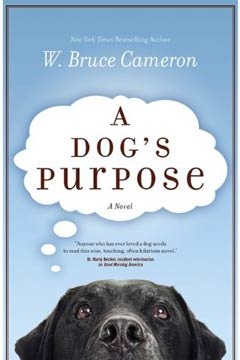 A Dog's Purpose: A Novel For Humans
A Dog's Purpose: A Novel For Humans
by W. Bruce Cameron
(Forge Books, 2010)
Told from the point of view of a dog trying to figure out the meaning of his life, A Dog's Purpose is essentially pet porn. Not in a perverse way, but, as promised in the book's subhead, it is "for humans." Humans are meant to read this book and say, "isn't this cute," and remember why they love their pets. As humor writer W. Bruce Cameron says in an interview, "I think this is a great book for someone who has lost a dog. I really believe that the central theme is that true love never dies..."
Having had love for a puppy myself, I wasn't immune to the cuteness of this book and its narrator. I teared up at the deaths of the dog narrator -- who goes by various names, but is called "Bailey" throughout most of the book. He is reborn multiple times throughout the book, sometimes after a too-early death and other times after a long, full, happy life. When Bailey dies after living with his beloved owner, Ethan, from childhood up until Ethan goes to college, when he is reborn in an entirely new place and "missed Ethan so much I sometimes whimpered," it's heart-wrenching. And I couldn't help but smile when Bailey watches Ethan's dad and grandfather exchanging "some harsh words" while peeling corn husks -- Bailey "wondered if it was a reaction to the fact that corn husks were inedible." It's Bailey's view of the world, and it's Cameron's way of telling the reader what's happening in the humans' world as well as in the dog's.
Continue reading this entry »
— Ruthie Kott /
Reviews Thu Aug 26 2010
Newcity reviews Diana of the Dunes: The True Story of Alice Gray, a historically accurate account of U of C-trained mathematician, Chicagoan, and at-times enigma Alice Gray, the woman behind the ghostly lady of the Indiana Dunes.
— Rose Lannin
Reviews Tue Aug 10 2010
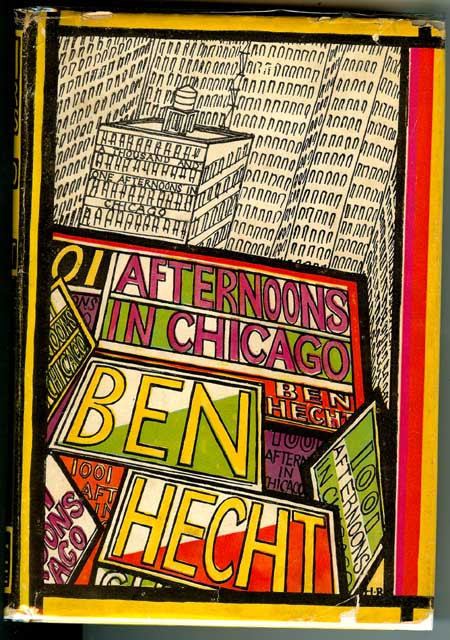
Ben Hecht (1894-1964) was best known as a screenwriter. Called "the Shakespeare of Hollywood," who "used Oscars as doorstops," his credits include more than 70 films, including Spellbound, Wuthering Heights, and The Front Page. He got his start and many of his subsequent ideas here in Chicago. In 1921 he began a column for the Chicago Daily News called "1001 Afternoons in Chicago," later collected into a book. His editor at the Daily News, Henry Justin Smith, said "1001 Afternoons" represented a new concept in journalism, which today we'd call creative nonfiction: "the idea that just under the edge of the news, in this urban life there dwelt the stuff of literature. He was going to be its interpreter."
1001 Afternoons consists of little vignettes of life in Chicago in the '20s, each accompanied by at least one stylized, wood block style Herman Rosse illustration. Not surprisingly, in many of the stories you can see in the bones of the screenwriter Hecht would become. The best of these "scruffy time capsules" are cinematic. You feel the taut energy of a popcorn thriller in "The Man Hunt," where Hecht projects himself into the mind of "Lucky" Tommy O'Connor, hiding out in an unknown location (he'd escaped from prison three days before he was to be executed for the murder of Chief Paddy O'Neil). "The Thing in the Dark", the story of a landlady unnerved by the peculiar habits of boarde, held a similar tension.
Some are great self-contained stories of unique situations and ironic twists. "The Auctioneer's Wife" tells of an auctioneer inadvertently seducing his future wife with his overwrought sales pitches. She still fell for them once they were married, only then it was his money she spent on the trumped-up junk he sold. He chooses money over love, and loses her when he confesses his salesmanly chicanery ("I'll never marry again," he moaned. "I ain't the kind that makes a good husband. A good husband is a man who is just an ordinary liar. And me? Well, I'm an auctioneer"). "The Indestructible Masterpiece" is a great barroom tale about getting by in leaner years, covering a bar tab with the collateral of a worthless painting insured for a large sum that never comes. "Fa'n Ta Mig!" is a great character sketch of a neighborhood eccentric, a drunk Norweigian sailor always searching for a new religion, who's convinced it's all for naught and the devil is once again after him every time there's a thunderstorm.
Continue reading this entry »
— Rebecca Hyland /
Events Thu Jul 29 2010
"Wheels, wheels, feet, feet, all day."
"Spoke-thin rungs poked in the side plotted a dizzying ascent, and the thought of climbing that far skyward made my knees weak."
"The expressway ramps soar above, residents hunker underneath, and in the soot and debris, St. Jude was wrapped in a blue cloak both brilliant and stern, with the words 'Pray for Us' painted on a golden background."
The Silver-Colored Yesterday, a blog written by Joseph Drogos, is one of the online features for Make, a Chicago-based literary magazine. A "commentary on the real and imagined social, cultural, and literary heritage of Make's hometown," TSCY tells Chicago's story through beautiful, haunting imagery and explores hidden facets about the city that only a true Chicagoan would even know to look for: neglected spaces between warehouses and factories, the final days of baseball at Comiskey, the essence of Bridgeport .
Of course, this blog is only a small part of Make's nine-issue history -- the magazine, started in 2005, delivers short stories, essays, poetry, reviews, and interviews, as well as art and photography, in a biannual package, with themes like "Truthiness" and "Property Lines."
Tomorrow, after the sixth annual Printers' Ball (of which Gapers Block is a proud sponsor), Make is throwing itself a party: the Printers' Ball After-Party and Make Five-Year Anniversary Fiesta. Musical comedy game show Shame That Tune and bands like Magical Beautiful and Coupleskate make an appearance, but what really makes it a party are the candy, $5 shots of Templeton Rye, and (hell yes) piñatas.
Friday, July 30, 9pm, Reggie's Music Joint, 2105 S. State St., 21+
— Ruthie Kott /
Reviews Thu Jul 15 2010
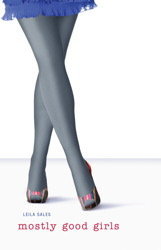
Mostly Good Girls
by Leila Sales
(Simon Pulse, forthcoming October 2010)
A private, super-competitive high school is always a good site to explore the issues of class and coming-of-age in young-adult literature. Even if you didn't attend that kind of school, it's still entertaining to read about upper middle class, smart kids and their ambitions/problems, which, in high school, are often separated by a very thin line. In the case of University of Chicago grad Leila Sales's Mostly Good Girls, the 16-year-old narrator's goals -- which include "Get A-minuses or better in all my classes" and "Make Scott Walsh fall in love with me" -- are spelled out on the first page of the book, and this junior-year to-do list encompasses much of the conflict in the story.
Except for one thing: the list's writer, Violet Tunis, doesn't anticipate her best friend since middle school, Katherine "Katie" Cabot Putnam, becoming a totally different person. Katie changes from the goofy, fun-loving girl who effortlessly got good grades and only kind of got to second base with a guy she met on the Vineyard, to someone Violet (who is embarrassed that, at 16, she hasn't yet French kissed a boy) hardly recognizes. The priorities that Violet thought they shared ultimately become what pull them further and further apart.
The daughter of two professors in Boston, Violet doesn't really share the background of some of the other girls in the all-girl's school. Her last name isn't linked to an old-money Boston family, and she, unlike Katie, has to actually work to get good grades and be successful in her extracurriculars, which include editing the school's literary magazine -- "ambitiously entitled The Wisdom," Violet says. But Katie of the Cabots and the Putnams gets invited to cotillions (which she refuses to attend, despite her mother's efforts to convince her) and is a thriving coxswain on the school's rowing team.
Continue reading this entry »
— Ruthie Kott /
Reviews Wed Apr 28 2010
In this poetry collection, Chicago poet John Franklin Dandridge travels the city, following the speaker's interactions -- both usual and unusual -- and giving the reader occasional glimpses into a metaphysical world. You never know what you may find around the corner: a girlfriend's apartment, a wormhole, or Further Down Rd., "where one discovers whether they're human or a computer." Infused with pop culture references (Hendrix! A poem called "Winnie Cooper"!) and Chicago icons (the Cubs, the el), Dandridge's first chapbook doesn't disappoint. Further Down Rd. is available from Fast Geek Press. Want to hear Dandridge read his work? You can listen to a selection of poems from the book here or come to the release party at Tonic Room on May 10. John Franklin Dandridge lives and writes in Chicago and received his MFA in Poetry from Columbia College Chicago in 2006.
— Emily Wong
Reviews Wed Nov 25 2009
 The Monster Variations
The Monster Variations
by Daniel Kraus
(Delacorte Press Books for Young Readers, 2009)
In the summer of their twelfth year, three friends and their town are plagued by a monster. The monster comes first for Willie Van Allen in the form of a silver truck that robs him of his left arm in a hit-and-run accident. When schoolmate Greg Johnson is similarly struck down and killed only nine weeks later, the adults in the town impose a curfew that deprives the three boys of the long nights in what is to be their last summer as children. Despite the overbearing curfew, for Willie and his friends, James Wahl and Reggie Fielder, this final summer comes filled with the adventures and thrills typical to twelve-year-old boys, but accompanied by an ominous undercurrent that threatens to rob them of the last threads of childhood to which they so fervently grasp. In a wonderfully told adventure tale, murder mystery and coming of age story, Daniel Kraus's The Monster Variations deftly bridges that dark chasm between childhood and adulthood from which these three boys too soon realize there is no escape.
Continue reading this entry »
— Veronica Bond
Reviews Fri Oct 23 2009
The Onion AV Club gives Steven Levitt and Stephen Dubner's Superfreakonomics a luke warm review, saying that "there's an artfulness missing this time around in their circuitous paths toward obvious conclusions like 'technology isn't always better' and 'men and women are different.' When they don't openly recycle material...it still feels stale..." Meanwhile, another AV Clubber takes issue with the duo's pondering on why more women don't opt to enter the glamorous and profitable career of high-end hooking:"What a stupid f***ing question, writers of Freakanomics. Do you ever consider humans when you're considering economics?...Hmm, maybe most woman don't become prostitutes because there are literally thousands upon thousands of other, less dangerous, more enjoyable, less degrading, more-long-term, less illegal careers they could be doing. Careers where they didn't have to shower 7-8 times a day." I haven't read the book and I can understand why someone would take issue such a question, but I can't help but read that as a tongue-in-cheek thought experiment. These are University of Chicago professors writing this book, after all, and at the U of C, the mind trumps reality any and every day.
— Veronica Bond
Reviews Thu Sep 24 2009
For those of you getting a leg up on our reading schedule, the Chicago Examiner has a review of Travel Writing, our November selection (thanks for the mention!), and an interview with the author, Peter Ferry. Says Ferry on who he was writing for and how he's playing with the basic ideas of fiction:
Yes, my audience was my students. (I taught English at Lake Forest High School for twenty-seven years, and other than my children, that is my proudest contribution to this world.) My premise is that all fiction is based in fact or in real life experience, and that all the stories we tell about our real life experiences are partly fiction. This assumes that all stories of any kind are attempts to discover truth which may or may not have anything to do with the factual. To test this, think about the stories you tell when you are with friends or having a couple beers or both; if you've told them repeatedly or over several years or enough beers, you've no doubt enhanced some parts, left out others, worked and massaged and perfected them until they have their own lives and may not have a lot to do with what actually happened a long time ago. That does not mean, however, that they do not have to do with truth.
— Veronica Bond
Reviews Thu Sep 24 2009
The New Yorker gets a hold of Rod Blagojevich's memoir, The Governor, and gives it some nice, snarky, back-handed compliments:
The American political memoir comes in many forms--the magisterial catalogue of heroic achievement, the backward glance at modest beginnings--but none of these sub-genres have thrived with more repetition and variation than the cri de coeur of the indicted-but-not-yet-convicted office-holding grandee. For febrile self-defensiveness and look-over-there deflections and deceptions, Rod Blagojevich's new book, "The Governor: Finally, the Truth Behind the Political Scandal That Continues to Rock the Nation," is surely unsurpassed.
— Veronica Bond
Reviews Wed Sep 23 2009
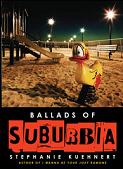 Ballads of Suburbia
Ballads of Suburbia
by Stephanie Kuehnert
(MTV Books, 2009)
Kara McNaughton is in her sophomore year of high school when her parents get divorced. Having moved from Chicago to the suburb of Oak Park the summer before she entered second grade, Kara's family little resembles the idyllic white-picket-fence, carefree life that the notion of the suburbs often evokes. It is here that the McNaughton family falls apart, here that Kara finds destructive ways to cope with disappointment and stress of a life thrown off its course, here that she carelessly leads her younger brother Liam into that destruction, and here that she loses herself in drugs. If life in the suburbs is being sold under the guise of beauty, tranquility and safety, Kara McNaughton, and author Stephanie Kuehnert, are here in Ballads of Suburbia to tell you that all of that is a lie.
Continue reading this entry »
— Veronica Bond
Reviews Thu Sep 17 2009
The Reader has an interesting critique of Rod Blagojevich's The Governor, comparing the Gov-turned-author not with the Shakepearean heroes he has identified with, but with the classical Greek writers Socrates and Plato:
But the suggestion that Blagojevich has an elusive grasp of the facts or that he lacks the literary chops to write a great memoir is really beside the point. Of course the book isn't good by any conventional standard--what do you expect from an impeached politico desperate for cash while awaiting his corruption trial? But that doesn't mean it's not interesting. I'd even go so far as to call it important.
Part of The Governor's problem is that it's been miscast. It's not a memoir so much as it is an apology--an apology not in the sense of a statement of remorse but in the classical sense of a statement of defense against accusers. Arguably the finest example of an apologia is the one presented by Socrates, and written down by Plato, when Socrates was on trial for corrupting the youth of Athens with his irreverence and refusal to worship the state-sanctioned gods.
The review does well to judge the book both within its literary parameters and for its ability to convincingly portray Blagojevich's case. It's really quite a well-written review.
— Veronica Bond
Reviews Wed Sep 16 2009
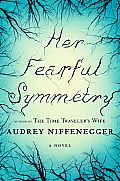 Her Fearful Symmetry
Her Fearful Symmetry
by Audrey Niffenegger
(Scribner, 2009)
A woman dies. This is how Audrey Niffenegger's Her Fearful Symmetry begins - not with a beginning, but with an end. The woman in question is Elspeth Noblin, lover of Robert Farnsworth, identical twin sister to Edie Poole and aunt to identical twin nieces Julia and Valentina. Elspeth, who, at the age of forty-four, has met an early death at the hands of leukemia, has stipulated only a few items in her will: Her London flat will go to her nieces upon their turning twenty-one years of age on the condition that they live in it for a year and their parents never set foot in it, and all of her diaries and other personal papers will go to Robert. They are seemingly easy requests and the twins, with some anxiety, prepare to leave their Lake Forest home where they've lived with their parents all twenty years of their lives, wishing that they had been able to know their aunt. Robert manages to clear out the flat, though he can't yet bring himself to read Elspeth's papers and wants nothing more than to have her back. Unbeknownst to either party, Elspeth will return and haunt them both.
Continue reading this entry »
— Veronica Bond /
Reviews Wed Sep 09 2009
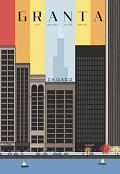 Granta 108: "Chicago"
Granta 108: "Chicago"
In 1999, the literary magazine Granta published their first issue devoted solely to the authors of one specific city. For the publication that was founded by a group of Cambridge University students in 1889, London was an appropriate choice for this foray. Ten years later, the magazine is doing it again and it's no surprise to us that the choice for their second city would be our Second City: Chicago. Granta 108: "Chicago" collects poetry, fiction, essays and photography by Chicago authors and artists, illustrating their experiences living in the city and depicting what it means to experience the life of the city itself. To this end, they've brought together some of our brightest and most recognized literary stars, studded with some lesser known names, and mixed them with others extolling the merits of the city's subjects. The result is a variegated portrait that, if, as some of these writers will show, we cannot or should not always be proud of Chicago, we have every right to proudly champion as the product of Chicago's rich literary tradition.
Continue reading this entry »
— Veronica Bond /
Reviews Tue Sep 08 2009
The Booker Prize shortlist was announced today and J.M. Coetzee's Summertime was, as expected, included. A flood of reviews have popped up, so, although you can't get hands on a copy until December in the States, you can get a good idea of what the book is about. Read about it:
•At the Telegraph: "The new book deploys the device of introducing a biographer to research the life of the late South African novelist John Coetzee, "who did not love anybody, he was not built for love". It takes a tough man to be this rotten about himself, but even as Coetzee rises to the challenge, we are left with the question of how he got this way. "
•At the Guardian: "Summertime plays with the question, which Coetzee seems to find genuinely baffling as well as wryly amusing, of why people should be at all interested in him as a human being."
•At the Complete Review: "The overlay of fact and fiction remains uncomfortable, but then this is meant to be a very uncomfortable book (as the descriptions of his love-interests alone would assure). Yet it's hard also not to see it as a vanity project."
•At The Independent: "What Summertime offers is a subtle, allusive meditation: an intriguing map of a weak character's constricted heart struggling against the undertow of suspicion within South Africa's claustrophobic, unpoetic, overtly macho society.
•And, finally, an excerpt.
— Veronica Bond
Reviews Tue Sep 08 2009
As reported on the main page, Eric Zorn is reading Rod Blagojevich's book The Governor and blogging about it chapter by chapter, to hilarious commenting ends. Elsewhere, the New York Times and the Seattle Times give some back story to those less familiar with the Blago saga, neither of them saying the book is ridiculous, crazy or horrible, as I'm just guessing it may be, but neither saying it's a worthwhile read, either. It'll be interesting to see how forthcoming reviews shape up.
— Veronica Bond
Reviews Fri Sep 04 2009
In a review of the new illustrated Fahrenheit 451, Tribune critic Julia Keller talks about graphic novels, her growing love for the form and the responses she's received after reviewing them:
[The reader's] contempt arose in response to a column I wrote praising certain graphic novels. And she was not alone in her seething censure. I heard from several other readers as well, wondering why I had allowed myself to be seduced by the easy enchantments of comic books. Frankly, they expected better of me -- given my doctoral degree in English literature and my well-known and oft-alluded-to affinity for dense, difficult, high-minded novels by the likes of Virginia Woolf and Joseph Conrad.
How had I allowed myself to be plucked from the stately, dignified ivory tower and lured down into the publishing world's damp basement, a place of shag carpet, flea-market furniture and flea-bitten ideas, X-Men posters on the wall, empty pop cans underfoot and stacks upon stacks of comic books? Just what did I have to say for myself?
— Veronica Bond
Reviews Wed Sep 02 2009
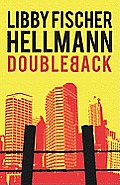 Doubleback
Doubleback
by Libby Fischer Hellmann
(Bleak House Books, 2009)
Recently, Barbara D'Amato wrote a post in the Outfit blog describing two types of readers: those who read for plot and those who read for content. Those who read for plot are story-driven, "They want to know what happens next. Think pacing-pacing-pacing!" she writes. At the opposing end are those readers who are content-driven, who read for "history, technical detail, humor...for the beauty of the language." To the plot reader, content-oriented books "don't seem to go anywhere," whereas to the content reader, "story-oriented books seem skimpy and flat." I found this description fitting, particularly since I am, without a doubt, a content reader. With the exception of the occasional book and a belatedly discovered, yet rapidly flourishing love for Sherlock Holmes, I tend to shy away from mysteries and crime novels because I do find them "skimpy and flat." I write this not to disparage the genre - I don't believe these types of stories are necessarily bad, just not for me - but so that when I say that I very much enjoyed reading Libby Fischer Hellmann's Doubleback, you'll know that the book was up against a tough audience.
Continue reading this entry »
— Veronica Bond /
Reviews Wed Jul 29 2009
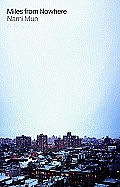 Miles from Nowhere
Miles from Nowhere
by Nami Mun
(Riverhead Books, 2009)
Few of us truly know the hardships and struggles that come with running away from home. Joon, the narrator of Nami Mun's Miles from Nowhere, is not one of us. Having left home by the age of thirteen to search for her father who had abandoned their family, Joon soon realizes that it is freedom she wants and, after failing in her search, doesn't so much as return home to say goodbye to her mother before she begins her new life on the streets. The experiences and the people Joon encounters from that point on serve to educate, confuse, lift up and tear down, but, fortunately, never break her.
Continue reading this entry »
— Veronica Bond
Reviews Wed Jul 22 2009
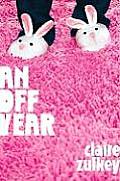 An Off Year
An Off Year
by Claire Zulkey
(Dutton Books, 2009)
The progression from high school to college is purported to be a natural one in our culture. The junior and senior years fill mail boxes with evocative brochures displaying young adults studying with books under fully bloomed trees and laughing in ethnically diverse groups; the years fly by with visits to campuses and interviews with students and faculty; they are some of the most trying times - filling out applications, taking SATs - and yet some of the most relaxing - that wonderful knowledge that high school will soon be over. For most of us, that next step into college is a certain one, but what about those for whom it is not? That's the question Claire Zulkey explores in An Off Year, a young adult novel about a girl on the brink of entering that first hallowed year of undergraduate life, only to turn around and say "no."
Continue reading this entry »
— Veronica Bond
Reviews Tue Jun 23 2009
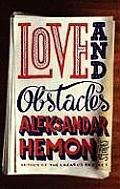 Love and Obstacles
Love and Obstacles
by Aleksandar Hemon
(Riverhead Books, 2009)
I will be the first to admit that when we read Aleksandar Hemon's debut novel, Nowhere Man, during our first year of Book Club meetings, I was not the author's biggest fan. I generally like my novels and stories to be imbued with a certain element of concreteness and plausibility; I like to feel a sense of roundedness; I like to believe that if we start out in one place we will eventually get back to that place in one way or another. These are qualities that Nowhere Man does not possess. I do not mean this as a criticism of this book - my literary likes simply did not match up with what Hemon had to offer and I was content for us to go our separate ways. Rare is the author who can execute both styles of writing and execute them well. How wonderful and surprising it was to then find out that in his newly published collection of short stories, Love and Obstacles, Hemon shows that he is indeed that author.
Continue reading this entry »
— Veronica Bond
Reviews Wed Apr 29 2009
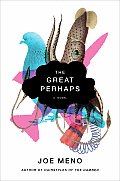 The Great Perhaps
The Great Perhaps
by Joe Meno
(W.W. Norton & Company, Inc., 2009)
Jonathan Casper is a coward. In fact, he heralds from a long line of men in whom cowardice is the one defining hereditary trait. For Jonathan, this cowardice manifests itself openly in his fear of clouds, the sight of which will throw him into an epileptic-like seizure, the fear having only been controlled through the use of neurological medications. Less immediate, however, this cowardice wreaks its havoc through Jonathan's life, threatening to ruin his marriage, estrange his children and jeopardize his long-standing career and his search for the prehistoric giant squid Tusotheuthis longa. It is a cowardice in father and grandfather that runs far past the English colonization of India, through the Franco-Prussian War and all the way back to a 1630 Arctic expedition. Make no mistake: this is a story about a coward.
But, to say that The Great Perhaps is just about a coward is, admittedly, a bit reductive. It is also the sweeping story of a family - both unique in its makeup and ordinary in its dysfunction - in crisis, trying desperately to remember what it means to depend on each other, move through life together and just be a cohesive unit. Set in 2004 in the midst of the Iraq War and the electoral race between George W. Bush and John Kerry, the Casper family is the perfect image of the liberal American family, with Jonathan conducting his research at the Field Museum and teaching at the University of Chicago where his wife Madeline conducts her own research on the social hierarchies of pigeons. Their daughters, Amelia and Thisbe, attend the university's private high school and could not be more different from each other. The elder Amelia is a neo-Marxist who wanders the school's halls bedecked with a black beret and writes inflamed social critiques in their newspaper, the Midway. Thisbe, much to the family's chagrin, has found God and, in between her chorus practices where her lack of vocal talent has relegated her to the role of piano accompanist, spends her time praying for her salvation and attempting to baptize the neighborhood animals.
Joe Meno's particular brand of eloquent, lucid, at times visceral, writing that we have come to know and love through his previous work is delightfully present here, but where he soars in this novel is in his ability to create a broad landscape through time, weaving in between the generations of the Casper family, in and out of its members' points of view, to help us understand this complex family in way that we, otherwise, could not. A significant portion of the novel is spent with Henry Casper, Jonathan's father, who, in his declining years, tries desperately to escape the confines of the nursing facility where he's been brought, counts his words carefully so that everyday he will use one less until he speaks no more and mails himself letters to be opened by his son once he's passed. Learning of Henry's history - his father's and uncle's involvement in World War II, his own inadvertent involvement in the dropping of the atomic bomb - works to create a rich, multi-layered canvas on which to paint the story of Jonathan's own fears and failings.
The story, though, is not without some hope. We end with the possibility that Jonathan and Madeline's marriage will survive, that Amelia will learn to refine her voice and express her social critiques in a productive way, that Thisbe will reconcile her desires with her belief in God, that Henry has finally escaped the guilt of his cowardly past. It is an upward movement that is neither overly emotional nor melodramatic, but simply the only way that a family trying to survive the crisis that is itself can move if it is to avoid destruction. It is a struggle common to our time that Meno details with the grace and skill of someone who has ardently captured the fight-or-flight nature of the human spirit. It is this perfect evocation of the American family that makes The Great Perhaps, to borrow the novel's closing words, both astonishing and quite ordinary.
* * *
Joe Meno is on the faculty of Columbia College Chicago where he teaches creative writing. His novel Hairstyles of the Damned was the inaugural GB Book Club selection.
— Veronica Bond /
Feature Sun Apr 26 2009
Gapers Block politics editor Ramsin Canon brings us his review of Family Secrets: The Case That Crippled the Chicago Mob by Jeff Coen:
If you're not versed in the history of the post-Capone Chicago mob, known as the Outfit, you may easily have missed the fact that the Martin Scorcese classic Casino was about our city's organized crime syndicate and their control over gambling in Las Vegas in the second half of the twentieth century. The word "Chicago" is never spoken or named in any way during the movie—in fact, at one point, when Joe Pesci's Nick Santoro character is narrating a flashback he says, "Even back home, years ago," and on the screen flashes the title, "Back Home Years Ago" instead of "Chicago, 1973". Only once, when he almost slyly refers to "Remo Gaggi" (a blend of Joseph Aiuppa and Tony Accardo) as "the Outfit's top boss," is there any real indication that the gangsters hail from Chicago. (There's another scene where Pesci's character says, "Hey Ace, tell him the line on the Bear game.") There were briefly local rumors about why; that the producers were afraid to antagonize a criminal organization that, at the time, may still have had influence in some of Hollywood's powerful craft unions. More likely the movie plays so fast and loose with the facts that they didn't want to draw too direct a parallel.
Chicago Tribune reporter Jeff Coen's episodic telling of the federal government's prosecution of Chicago mobsters and their associates plays like a similar biopic, telling the history of the top tier of an immensely powerful, violent criminal organization through the lens of a personal, familial tragedy. The terrible difference of course is that Coen's book tells stories that are absolutely real, and recent enough to have living, breathing victims—both direct and indirect. The so-called "Family Secrets" investigation led to the conviction of Joseph Lombardo, James Marcello, Frank Calabrese Sr., and Paul Schiro for murder and Anthony Doyle for providing sensitive information to the convicted felons.
Books on the modern Outfit are scarce; the most recent contribution to the literature was investigative reporter Gus Russo's book The Outfit, an at-times sensationalized book that tried to portray the Outfit as a legitimate underworld counterpart to overworld (normal world?) corruption and exploitation. Like much of the literature on organized crime, it falls closer into the category of a "mob watcher's" book—similar to the work of former FBI agent Bill Roemer, whose book on the Chicago mob's Vegas influence—The Enforcer; Spilotro: The Chicago Mob's Man Over Las Vegas—borders on the voyeuristic. Coen's book is not a "mob watchers" book; it is a useful and lucid history of a gigantic investigation and prosecution and a sobering look at organized crime. If only more books on "the mob" read more like studies of organized crime than true crime dramas.
The contribution Coen's book makes to the literature of organized crime is that it completely and utterly demystifies the professional criminal class. The Chicago criminal underworld described by Nick Calabrese, the Outfit killer whose testimony was the cornerstone of the federal case, is one filled with cold cruelty, mistrust, betrayal, paranoia, and ceaseless hustling, dealing with society's most down-on-their-luck. There is no glamour or the type of vicarious thrills that come with being able to exact revenge at will: according to Calabrese's testimony, murders were done for petty reasons or out of a primal paranoia. The mystique of the gangster who never spends a day in prison is shattered; since the events that transpired in the movie Casino, a series of prosecutions chased the Outfit out of Vegas and imprisoned much of its leadership, and Family Secrets is a story of people in prison or killing to avoid prison.
Continue reading this entry »
— Alice Maggio
Reviews Wed Apr 01 2009
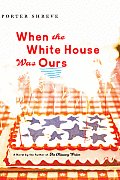 When the White House Was Ours
When the White House Was Ours
by Porter Shreve
(Mariner Books, 2008)
It's 1976, our country's bicentennial, and Daniel Truitt and his family are on their way to Washington , D.C. to make a new start on their lives. For Pete, Daniel's father, it is the chance to show he can make something of himself after several failures in his career as an academic. For Valerie, Daniel's mother, it is the last chance she will give her husband to prove that he has what it takes to provide for their family. And for Daniel and his sister Molly, it's just one more move in a succession of displacements in their constantly uprooted lives. But this time, things will be different for the Truitt family as they find themselves much more invested in their own potential achievements than they ever have been before.
When the White House Was Ours is Porter Shreve's loosely autobiographical account of his own family's embarkation into alternative education. The idea that Pete Truitt alights upon - starting his own school where the students direct the teachers and create their own curriculum - is not far off from the school that Shreve's own father started in Philadelphia in 1973. They even have the same name: "Our House," from the Crosby, Stills, Nash & Young song. But though Daniel's life mirrors Shreve's at the outset, the story in When the White House Was Ours is Daniel's own. It is here that Daniel will learn much more than art, English, math and science: here he will learn what happens when the money starts to run out and you have to figure out how to survive on the cheap, he will learn about the devastation and disappointment secrets can wreak on a family, he will learn about the inklings of love and the truth that there is really no such thing as true free love.
Although the title may evoke images of current events, Shreve never makes the mistake of letting his fiction serve as a mouthpiece for his own political beliefs. It is his ability to emotionally involve the reader into the story that serves as the foundation of the novel - although it becomes clear that the school will fail, Shreve has you hoping that somehow the Truitts can pull everything together: "This period when we lived in Washington, in a white house nor far from the real White house, will always live in my memory as the pivotal moment for my family, but it also marked my dawning awareness that our lives were converging with something larger than ourselves, a whole country at a crossroads." This is the older Daniel narrating his twelve-year-old thoughts, realizing now just how much this school, regardless of its lack of success, changed all of their lives.
But it's the characters that really draw you in. Shreve paints vivid images of all those involved in this school so that their dreams and disappointments ring true. Daniel says of his mother, "Later I'd learn that she'd wanted to get a Ph.D. in political science but my father had persuaded her to go into his own field. I still don't know why he was so insistent that they both pursue teaching degrees. He hoped one day to open a school and perhaps he only wanted her to be his partner in this. Then again, maybe he worried about what might happen if his wife's career overshadowed his own." With such honest portrayals and a story that holds together even as the events therein fall slowly apart, When the White House Was Ours serves as a tribute to a time in everyone's history when things seemed so much simpler: childhood.
— Veronica Bond
Reviews Wed Dec 17 2008
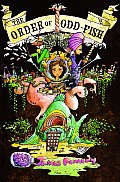 The Order of Odd-Fish
The Order of Odd-Fish
by James Kennedy
(Delacorte Press Books for Young Readers, 2008)
Though there are many books of which I am fond, there are few instances in which, upon finishing a book, I find myself thinking, with some sadness, of how much I would have missed out on had not some happy accident brought said book into my life. This is the thought I had from nearly the first page of James Kennedy's The Order of Odd-Fish. This book will likely receive complimentary comparisons to such literary greats as Lewis Carroll and Roald Dahl, along with contemporary favorites like Lemony Snicket and the perhaps less widely celebrated but no less loved Norton Juster, and while such comparisons rarely set the reader up for anything more than disappointment, they are entirely justified here. Even if Kennedy never again sets pen to paper, he will always be remembered lovingly for the one great contribution he has made to young adult literature today.
The Order of Odd-Fish is at once a coming of age story and a fantastical journey into a middle world where gigantic cockroaches are butlers, knights spend their lives engaged in fruitless endeavors and a legend threatens to destroy an entire community. Jo Larouche is thirteen when her life is uprooted and she finds herself vomited out of a giant fish into the strange world of Eldritch City and an order of knights known as Odd-Fish. Along with her is her eccentric Aunt Lily, who cannot remember anything before Jo's birth, a boisterous Russian named Colonel Korsakov, who literally puts all his faith in his gut and bases his decisions on his digestive sensations, and Sefino, Korsakov's uppity and self-absorbed cockroach butler. It is here that Jo must learn the truth about her birth and how she is inexplicably linked with the Ichthala, the true legend that predicts the return of a goddess known as the All-Devouring Mother and the end of Eldritch City.
Lest Jo's story appear to be more of an inner journey, Kennedy pits her against a couple of formidable and highly comical villains. First up is Ken Kiang, a bored Chinese millionaire whose goal is to be "thoroughly, intentionally EVIL." Here is a man who proudly boasts that he has drunk kitten blood, who concocts a plan for a man to sell his soul in exchange for consuming delicious pies, who "[makes] a mental note to practice his diabolical laughter for fifteen minutes a day," for he knows that the devil is in the details. Acting in opposition to both Kiang and Jo is the Belgian Prankster, known for his ability to pull off world-class pranks like covering New York with orange carpet and standing the Eiffel Tower on its point. To say more about the Belgian Prankster would be to reveal too much, but suffice it to say that he will stand as one of the more memorable and satisfyingly disgusting villains in literature.
If the story in The Order of Odd-Fish is at all great, which it is, it is because Kennedy's writing is so extraordinary. He has a knack for creating outrageous characters and vivid scenes where the subtlest turn of phrase can make the most hilarious impact. Kennedy's remarkable use of alliteration alone is worth noting: "Infamous Insect Indignantly Irked in Insipid Imbroglio" and "Magnanimous Mayor Makes Merciful Motion Mandating Murder Matter Mended" read the headlines of the "Eldritch Snitch," the city's newspaper. It is not often that we are reminded that language can be so much more than an instrument of necessity, the fork by which we feed ourselves words and ideas. There are few writers who remind us, instead, that language can be an instrument of pleasure, the precise curve of a neck, the density of a wood, the delicacy with which a bow is drawn against a set of strings to produce a melodious harmony. Kennedy reminds us that writing, especially young adult writing, does not have to be simple or tedious or at all reductive, that it can be dense and multi-layered and exquisitely complex. These are the words of a man who knows his instrument well and plays it with the joy of someone who has clearly had the luck of discovering a true love.
If I sound overly laudatory, it is because while there are many good books that I like, there are few great books that I love. Indeed, I loved The Order of Odd-Fish. My only consternation is that I have come across this book at the age that I am. How I envy those who will discover it when they are young.
— Veronica Bond /
Reviews Thu Dec 11 2008
Powell's presents a long, thought-out review of the newly published Norman Maclean Reader, a posthumous collection of the University of Chicago professor's works. The review gives a good idea of what's contained in the collection, which is nice as we're looking forward to reading Maclean's classic A River Runs Through It in February. But be wary if you haven't read the book yet or seen the movie (like me): there's a HUGE plot spoiler smack dab in the middle of the review. (Thanks a lot, Mr. Reviewer...not all of us are in love with Brad Pitt, so don't assume we all know what happens at the end!)
— Veronica Bond
Reviews Wed Nov 12 2008
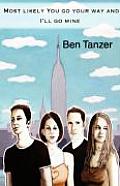 Most Likely You Go Your Way and I'll Go Mine
Most Likely You Go Your Way and I'll Go Mine
by Ben Tanzer
(Orange Alert Press, 2008)
Another novel about sex. Another novel about failed relationships. Another novel whose characters are too self-aware, too consumed with pop culture, and too involved with themselves to ever be involved with someone else. You might say this about Ben Tanzer's Most Likely You Go Your Way and I'll Go Mine, but you'd be committing an unfair reduction and missing what is actually a funny and interesting story. Set in New York, You Go Your Way revolves around two groups of friends. Geoff and Paul meet Jen and Rhonda at a party and it's not long between the two pair off, with Paul and Rhonda heading off to her apartment where Paul will eventually leave Rhonda lying on her own bathroom floor, and Geoff and Jen staying to discuss their parents and their mutual aversions to marriage. Neither seems like a great start to a great relationship, but this isn't a story about great relationships. It's a story about real ones.
Written as a series of vignettes with exposition sparse between long bouts of dialogue, You Go Your Way reads almost as a play. The scenes are short and self-contained and any one of them could be read on their own as a very short story, similar to hearing a snippet of conversation from two people passing by. The effect is that we are propelled through the story, moving very quickly from Geoff and Jen's meeting to their eventual courtship and the problems they face therein. Much more affecting than any external factors they come up against are their own internal hesitations. After sleeping together for the first time, we are privy to their thoughts: "He will be a...jerk...manipulator, user, control freak that doesn't care about her or anyone else. And Jen will be right, he will be all of this, or none of this, Geoff thinks, but he will let her down. He will be himself, that will suck and she will not want to be with him anymore." This is not a romanticized relationship, but one between two very flawed people who, while aware of their flaws, flounder when it comes to learning how to get past them.
The novel is rife with pop culture references. Paul often answers Geoff's musings about his relationship in the manner of Yoda and with Rhonda and Jen the quartet can easily go from The Breakfast Club to Milton Berle to J. Edgar Hoover back to Jon Cryer. Though these references may seem a bit recycled at times - the discussion on when a guy should call a girl after the first date is easily recognizable as influenced by Swingers - the truth is that this is the way that many of us actually speak. The appeal of the story is not that it's so different from what most of us have experienced, but that it's so familiar. Geoff will pull away and Jen will let him go way too easily; it's no one's fault and it's the fault of them both: "Jen agrees that there is something sad about the end of the relationship. Still, while there has been something good between them, and while they might have fought harder for it, it is done, and while this may contradict how she felt on the way to meet Geoff, when something is done you have to move on. Right?" Whether these two move on and how well they do so is left up to the reader to judge, but it is a judgment no reader can make without first finding something of him- or herself in these so very real characters.
* * *
Most Likely You Go Your Way and I'll Go Mine is Ben Tanzer's second novel. Find out more about this local author
here.
— Veronica Bond /
Reviews Wed Mar 19 2008
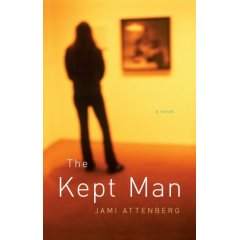
The Kept Man
by Jami Attenberg
(Riverhead Books, 2008)
It is perhaps one of literature’s most romantic notions, the idea that a woman would patiently wait forever for the man she loves. Through centuries of writings and even through the past several decades of this motif infiltrating our culture and minds, we might expect it to be a bit overdone and stale in the twenty-first century. And yet, this is surprisingly not the case with Jami Attenberg’s The Kept Man. Perhaps it is because a good love story will never grow old or because somehow we still believe in the most futile of romantic notions, but whatever the reason, this age-old story is born fresh and anew in this compelling read.
The Kept Man is the story of Jarvis Miller, thirty-something New Yorker, reformed punk rebel party girl and half-widow of acclaimed artist Martin Miller. Owing to a brain aneurysm and a fall from a ladder, Martin has been in a coma for the past six years and Jarvis has become something of a recluse, restricting her environment to her apartment and his medical care room, and her interactions to his nurses and Missy, the cab driver who takes her there every week. Since the accident, the value of Martin’s art has increased steadily and Jarvis sustains herself financially by selling off his work as it becomes necessary. Finding little solace in her remaining friends – Alice, a gallery owner, and Davis, one of Martin’s best friends – it is only through the accidental laundromat meeting of three married men that Jarvis begins to contemplate life beyond Martin.
This story could be simple. We might expect there to be romantic interest between Jarvis and the three men, members of what they call the Kept Man Club owing to the fact they are all financially supported by their wives. We might expect Jarvis’s bouts of longing and confusion as she starts to separate herself from a present that is becoming her past. We might even expect that Jarvis will come to learn that her marriage and her friends were never as true to her as she believed them to be. What keeps this story from falling prey to predictability is Attenberg’s lovely ability to create something new out of our expectations. “It’s an indulgence, I know, depression,” Jarvis thinks of her inevitable depression after her weekly visit with Martin. “A safe harbor for those of us who can’t put up a fight, cannot raise our hands in firm fists and say, I am going to try and handle all of this bullshit.” This writing of Jarvis as so self-deprecating and so harsh on herself lends a feeling of strength and authenticity to this woman who may be waiting for her man, but knows she is destroying herself in doing so.
Though the conclusion of the novel may feel a bit too convenient to be true, it is this depth of character that keeps The Kept Man from being just another wanton love story. Jarvis, Martin and the people in their lives are wonderfully flawed and regardless of whether we believe in the virtue of their decisions, we can believe in the reality of these decisions being made. In Attenberg’s hands, Jarvis’s love for Martin is honest – it is intense, sometimes destructive, and completely out of her control. “It is out of love, not anger. Love for myself, love for him. And out of necessity. If I am ever going to be a whole person again, I am going to have to stop being the half-widow,” Jarvis thinks when contemplating the prospect of regaining her life. This brutal look at one woman’s resistance to change, fear of loneliness and ultimate belief in the necessity of moving forward takes The Kept Man from the realm of the sentimental love story to something refreshing, truthful and wholly worthy of the read.
— Veronica Bond
Reviews Mon Feb 25 2008
This week's New Yorker includes a critique of two new books on behavioral economics, a field of study examing, among other things, how outside factors influence decision making. One of the books - Nudge: Improving Decisions About Health, Wealth, and Happiness - comes from University of Chicago professors Richard H. Thaler of the Graduate School of Busniess and Cass R. Sunstein of the Law School. The "nudge" is the idea that people should be offered fool-proof choices that work with, rather than against, their tendency to make unreasonable decisions. A prime example is making organ donation a default option, requiring only those who do not want to donate their organs go through the trouble of explicitly expressing their wishes. The article finds that the book raises some interesting questions, mainly "if people can't be trusted to make the right choices for themselves how they possibly be trusted to make the right decisions for the rest of us?"
— Veronica Bond
Reviews Sun Feb 24 2008
The New York Times has not only a review of the recently published posthumous novel by Richard Wright, but it also has an except of the first chapter for you to read. Wright was working on A Father's Law when he died in 1960 and the book has finally come to publication at the hands of Wright's daughter Julia, also his literary executor. Ultimately praising, the review does express mixed feelings about the work, saying it "is not simply an unfinished novel; it is an unfinished novel in abject need of revisions...without having first read his thunderous classics, one might plausibly dismiss this author as a tendentious, technically naive amateur and disdain the works that made him indispensable in Amerian letters."
— Veronica Bond
Reviews Fri Feb 22 2008
Pop Matters gives Chris Ware's Acme Novelty Library no. 18 a rather idolatrous review: "As usual, these penitent recollections are told through Ware’s epic, blueprint-like diagrams. With the minute, technical craft of his art, Ware is able to scientifically poeticize the flow of thought with an almost-Proustian sensibility and, at his best, is able to capture the most sentimentally sloppy of moments and emotions with the most precise, categorical of means."
— Veronica Bond
Reviews Wed Feb 20 2008

At the City's Edge
by Marcus Sakey
(St. Martin's Minotaur, 2008)
Things may have been looking up for twenty-seven year-old Jason Palmer. After returning to Chicago from a stint in Iraq, Jason has no greater plans for his summer than girls, booze and spending time with his brother Michael and nephew Billy. All too quickly, these languid plans are changed when Jason’s daily run along the lakefront brings him face to face with a man he calls “Soul Patch” and the gun he finds shoved in his face. Jason’s quick wit and Army training save his life in that moment, but he’s afforded little time for comfort when he’s faced with identifying Michael’s murdered body, pulled from the burned down rubbles of his bar later that day. With his young nephew to care for and justice on his mind, Jason takes the case into his own hands and joins forces with a disparaged police officer to uncover a network of crime running far deeper below the city than he could have ever imagined.
At the City’s Edge, Marcus Sakey’s second novel, is a fast-paced and engrossing read. We learn early on that Michael was part of a group of people who informed the police on gang activity in the neighborhood. The first hint that the murder is the product of something more than random violence is born in the mind of police officer Elena Cruz, who recalls Michael saying that “there were things going on in the neighborhood that were worse than anybody guessed, that the gangs were the tip of the iceberg. Saying that he would have proof soon.” Having been taken off the streets to work behind a desk after her affair with the police chief became public knowledge, Cruz is eager to get her hands back in the game and prove her worth to her male colleagues. Together, she and Jason risk their lives to find out the truth about Michael’s death, a truth that shakes the core of what these two strong-willed characters think they know.
Sakey’s knowledge of the inner-workings of gangs shines brightly here and his skilled research is a refreshing touch to what might otherwise be an unconvincing tale. Evidence of this can be found in the Acknowledgements, in which Sakey thanks several members of the Chicago Police Department, but it can also be found in such details as Cruz’s involvement in the Gang Intelligence Unit, statistics about high school drop out rates and gang recruitment, and the presence of the Lantern Bearers, a sort of halfway house for gang member rehabilitation. Sakey states that the book is not a sociological study, but his effort to incorporate his learned knowledge about gang activity gives the story a hardened edge that make you wonder just how far the author would go to tell this story.
At the City’s Edge takes place in the fictional Crenwood, a South side neighborhood rife with poverty and violence. Though the neighborhood’s imaginary name might immediately stand out to the erudite Chicagoan, Sakey makes sure to impart the rest of the story with a very real sense of the city. Jason lives in a Chicago where he can witness the impoverished meeting the upper class from the window of his apartment at Clark and Division, where he’s sure that while everyone is familiar with Upper Wacker “he doubted many had taken the ramps down one more level, to the bowels of the city, a bleak lost place where service trucks moved between exhaust-stained roll doors under the timeless haze of yellow sodium light.” He lives in a Chicago where the Sox play in Comiskey Park and the El rumbles over everyone’s heads. The digs at the gentrified Lincoln Park do grow stale after the third or fourth iteration, however it cannot be denied that Sakey knows and loves his city well.
Though the characters are a bit too emotive for my tastes – Sakey’s attempts to illustrate Jason’s sensitive side only serve to caricaturize him and the eventual romantic liaison with Cruz is as obvious as it is unnecessary – At the City’s Edge proves to be a well-crafted crime thriller whose story is as much about very real social ills as it is about keeping the reader guessing. The truth about Michael’s murder may come as no shock to anyone familiar with Chicago history, but the similarities between this fiction and those facts provide all the shock-value needed. But on another level, this is a story about one man and the lengths he would go to defend what meager life he has left. “Pick up the gun and you live forever in its shadow,” Jason reminds himself in the midst of the story’s climax. The line serves as a fitting adage for all who are touched by this reality.
* * *
Learn more about Marcus Sakey at his website www.marcussakey.com and at The Outfit, where he joins literary forces with six other local crime and mystery authors.
— Veronica Bond
Feature Thu Jan 17 2008
Review by Cinnamon Cooper

Finding Iris Chang: Friendship, Ambition, and the Loss of an Extraordinary Mind
by Paula Kamen
(Da Capo Press, 2007)
I've been a fan of Paula Kamen's for several years, and fortunate to call her a friend for a few years. I've seen her writing develop subtleties, her theses grow more sophisticated, and I've seen her personality shine through her writing. I've also seen her struggle with health issues, support her friends, fall in love and enjoy life. And I consider myself blessed and fortunate to get to know Paula the person, after developing such an amazing writer-crush on Paula the author.
Shortly after I moved to Chicago 10 years ago, I picked up her book Feminist Fatale: Voices from the "twentysomething" Generation Explore the Future of the Women's Movement at a local library. I'd recently graduated from college, felt alienated from the feminist community, and I missed reading and discussing feminism with my peers. Sitting alone in my apartment with a borrowed copy of Paula's book made me feel less alone. She seemed to get what it was like to be a young feminist and feel alienated from a movement. After I finished the book, I read her short bio and realized Paula was just a few years older than I was and she lived in Chicago. My appreciation of her work deepened and my writer-crush began.
A mutual friend introduced me to Paula a few years ago, and when she found out that we have a shared interest in feminism, Chicago and supporting some of the same organizations she became supportive of me without missing a beat. She didn't hesitate to encourage me, congratulate me and introduce me to her friends. And all the while she was doing this I kept finding myself wishing I had her writing skills, her book deals, her voice. I found myself in awe of her as much as I found myself appreciating her.
I mention this explanation of my introduction to Paula because it seems to mirror her relationship with her friend and fellow journalist Iris Chang. Paula's most recent book Finding Iris Chang: Friendship, Ambition, and the Loss of an Extraordinary Mind follows a complex path through their friendship, the relationships that Iris had with others, her death and Paula's need to understand why she killed herself.
This book isn't only about Iris's life, work and the loss of an amazing and sensitive investigative writer, it's about Paula's friendship with and professional admiration of Iris. In fact, Paula touches on so many things in this book, it's amazing Paula is able to keep a common thread tying them all together. Their relationship was full of amazing contradictions and Paula lays them all out so the reader can see Iris as the complex person she knew. Paula doesn't make this book her opportunity to wax lyrically about the joys of their relationship. She examines her own weaknesses while comparing them with Iris's to create a more complete and honest understanding of what it was like to be friends with someone who seemed to get everything you wanted and whose energy was taxing and remarkably hard to bear.
Amidst Paula's revelations about their friendship and the quality of life Iris enjoyed, she is able to share some of Iris's writing advice, comments from many of her friends, medical information about bipolar disorder and suicide, as well as describe signs that only a fully-informed professional would have been able to see in Iris. But because Paula has so much experience writing about feminist issues, she critiques medical treatments and misdiagnoses, or under-diagnoses, of mental illness in women and particularly Chinese women, without overshadowing Iris herself. But there isn't the sense that Paula is objectifying Iris's death. Even though Paula calls out for journalists to understand that writing about heavy emotional subject matter affects them, she doesn't seem to be taking advantage of her friendship with Iris to push her own agenda. Yet she doesn't remain cold and unbiased the way journalists are supposed to be toward their subject matter.
After reading Paula's book on Iris, I realized I had to read Iris Chang's book The Rape of Nanking before I could write this review. I knew only vaguely about the incidents Iris wrote about in her book. Reading Iris's book was traumatizing and made it impossible to read anything long for quite some time afterward. I was appalled and disgusted and angered and found myself dwelling on the images in the book, both the photographs and the visual imagery Iris created. Reading Iris's book gave me a better understanding of Paula's writing and a better understanding of how affected Iris must have been by the subject matter after her book was published and the negative feedback and threats began to roll in.
Reading The Rape of Nanking also made the tangents in Paula's book seem less like tangents. After reading about the rape and murder of hundreds of thousands of Chinese people at the hands of Japanese soldiers, I felt like I could use a good therapy session. It made me wonder how Iris could have spoken with the dozens of people she tenaciously interviewed without having had one herself. I have to agree with Paula's thoughts that journalists need support in finding ways to not be affected in a toxic way as they cover devastation and dark topics. I also found myself wishing I'd gotten to know Iris, as I continue to hope this book may prevent future Irises from following in her devastating footsteps.
Iris's writing encouraged countless young Asian women to follow their dreams of writing. Paula interviews a few in this book, and I was lucky to meet one on the train. I was reading Paula's book and taking notes in my notebook when a young woman sitting across from me gained my attention and asked breathlessly, "Is that a book about Iris Chang the writer?" I nodded and handed her the book. She skimmed the inside jacket text and handed it back to me. She seemed visibly shaken, and I wasn't sure how to respond to her. "She's the only reason I got my parents to agree to let me become a writer. They wanted me to go to law school. But I showed them her books in high school and told them I wanted to make life better for people through words, not law. When they found out Iris killed herself they pulled me out of school for a quarter and made me come home because they were worried I would do the same thing. They then told me about aunts, and uncles and older relatives who had all killed themselves and made me go to a psychologist." I was stunned by her telling a complete stranger this and asked if she was now back in school. "Oh, yeah. The shrink gave me a clean bill of health, and we wrote up a mental health plan to make my parents feel more comfortable, and now I feel more interested than ever in following in her footsteps. I've switched to being a history major, too. I should probably read this about her." I agreed. She thanked me for listening and ended with, "It's not like my people, you know. To open up about ourselves. We have to be perfect, we Chinese. We have to prove ourselves through continuous action, not emotion. But that's not good."
I think Paula would agree with her. Paula's book came about because of a eulogy she wrote for Salon.com. She describes how inspiring Iris was and how she found herself using Iris as the example she gave during a speech to writing students. After exhorting that they just "Iris Chang it", she would tell them they had nothing to lose by thinking big. It's advice and a view I've seen Paula describe to others, as well. As a fan of her writing, and someone who has benefited from Paula's encouragement, I'm excited to see how she "Iris Changs" her next book. But I think I'll read this one once more, just to make sure I didn't miss anything.
— Alice Maggio
Reviews Tue Oct 30 2007
The Chicago Tribune recently featured two reviews of works by local writers. Donna Seaman, the editor of Booklist, reviewed Hiding Out by Jonathan Messinger. And, Dick Adler reviewed the Chicago Blues anthology edited by Libby Fischer Hellmann.
But wait, our own Veronica Bond reviewed both books for the GB Book Club blog right here. Re-read her reviews of Hiding Out and Chicago Blues.
— Alice Maggio
Reviews Thu Oct 04 2007
Chicago Blues
edited by Libby Fischer Hellman
(Bleak House Books 2007)
The Blues – they mean a lot to Chicago. Far more than the style of music that shares its name, the Blues in Chicago is the feeling of walking along a desolate street in a highly populated city, the sound of deals being made and hearts being broken in bars, and the cold of the wind that cuts through every living thing off the shores of Lake Michigan. You’d be hard-pressed to find just one definition of the Blues here, but they’re ability to hold something so different for each individual is what makes them great. A taste of that individuality can be found in the latest local anthology, aptly titled Chicago Blues, that gathers together the best of the city’s upcoming and established mystery, noir and crime fiction writers for ruminations on what the Blues in Chicago can mean. These aren’t your regular detective stories, but something more desperate and lost and as evocative as the music that inspires its name.
The stories collected in Chicago Blues are as varied as can be imagined. Stuart M. Kaminsky’s “Blue Note” opens the book, following a young man who dons his best poker face to beat a group of gamblers and ensure his mother’s safety by paying her debt. Despite his adeptness at reading his card players’ faces, there’s only so much of his own anxiety that he can keep out of the cards before he learns whether or he not he’ll be allowed to collect his mother’s monetary salvation. The suffocation of the night is palpable; you can almost smell the cigarette smoke as it wisps around their heads, mixing with the scent of bitter Scotch and the sweat of a man who may be in over his head. This is what we typically envision when we think of the Blues, but the anthology offers the authors a chance to play around with that word. Like “Blue Note,” Mary V. Welk’s “Code Blue” offers a scene from a life many of us will never see, but not in a damp, debauched poker house. An ER nurse, Frankie gets the opportunity to treat a notorious felon and rapist and administer a form of justice not sanctioned by the courts. “I don’t want you to die,” Frankie says, as we imagine her whispering fiercely into the prone man’s ear. “I want you to exist in a world where you can’t speak or move or defend yourself against the ugliness of others. I want you to be just like her, brain damaged but alive.”
This inability to speak or move – a feeling of entrapment – manifests itself not just in the villains of the city, but in the very lives these characters inhabit. “I’m running in the concrete catacombs beneath downtown Chicago, a murky netherworld that hides from the light of day,” says Brian Pinkerton’s protagonist in “Lower Wacker Blues.” Below the tourists and business people, he engages in a grownup game of hide-and-seek, called “Escape,” with a longtime friend who teaches him not just what it means to escape among the steel pillars of this hidden area of the city, but what it means to have escaped from life. Similarly, Michael Allen Dymmoch’s “A Shade of Blue” is, at its simplest, a haunting tale of a man who witnesses a crime that may or may not have occurred in the present day. In a desolate bar on Irving Park, Peter Quinn is the sole witness to a Blues singer’s murder; the only problem is that the police can’t find the body or the mysterious bar: “No murders. No missing women fitting anywhere near her description. No new Jane Does in the morgue or the hospitals. Don’t know what your witness is up to, but it sounds like he outta be writin’ for Hollywood.” Peter Quinn may not know what he’s up to either, but he serves as a warning of what can happen when you’re forced to escape your life and the events that ultimately shape it.
Chicago Blues is not all darkness and secrecy – there are several stories that take the opportunity to inject a bit of humor into an otherwise bleak landscape. In Michael A. Black’s “Chasing the Blues,” he speaks of “blue movies,” an outdated term for pornographic movies and a term his characters use to describe their job of staking out prostitutes in the city. The gruff, older cop takes this time to recount Celine DuBois, a woman who helped him out on several busts, but a woman who also may be more of a man than he ever was. Kevin Guilfoile’s “O Death Where Is Thy Sting?” garners some laughs as well, telling the story of two record collectors coveting a rare, eerie recording from Blues singer Jimmie Kane Baldwin. Legend has it that Baldwin killed his girlfriend mercilessly and her screams can be heard, from beyond the dead, on the original record. When the record is found in an old woman’s house, the two seemingly level-headed men put everything on the line to be the one to take it home, even if means that thirty-five years later they’re chasing each other across the country to snatch it from her son.
Editor Libby Fischer Hellman’s own work is featured here in “Your Sweet Man,” a story about a passionate, murderous love and the son who has grown up living with the consequences. It is as vivid and distinctive as any of the twenty-one stories in the collection and it further proves that everyone hears and feels the Blues in their own special kind of way. For readers who love mystery and crime fiction, or for those who may just want a taste of it, Chicago Blues offers haunting characters and scheming plots that keep the pages turning, even if it’s just a scant few of them before you know who the killer is, who died and how. Local readers will, after all, recognize the short story as the perfect literary form to fill the minutes of their daily commutes aboard city buses and El trains. Somewhere in the country, non-Chicagoans may pick up this book after recognizing a few of the names listed on the back cover; they may leaf through some of the pages and decide to read the stories within. Though they’re not from Chicago, they won’t be disappointed because the stories are too well crafted to fall apart simply because familiarity with the setting is taken away. But it will only be us – those of us who breathe this air, walk these streets, feel the heaviness of our city’s night – who will truly know how it feels to have the Chicago Blues.
— Veronica Bond
Reviews Thu Sep 27 2007
Hiding Out
by Jonathan Messinger
(featherproof Books 2007)
There comes a time for every reader when some figure in the literary scene whose efforts you’ve come to like and respect produces their own first work of literature. Because you like this figure, you are excited for this publication, you feel compelled to read it and you are positive that you will like it. But there are times when you are let down, when that effort is not particularly inspired or original and, instead, skates on the success of those previous efforts. You may be disappointed with the work, but you will defend it and make excuses and say that it was a decent first attempt while secretly wishing you could have liked it better. This does, on occasion, happen, but I’m am happy and relieved to say that when it comes to Jonathan Messinger’s Hiding Out, this couldn’t be further from the case.
Having graduated from editor of THISisGRAND.org to editor of the Books section of Time Out Chicago and with his work with The Dollar Store literary/comedy series, which he founded, and featherproof books, an independent local publisher, Jonathan Messinger has his hands more than full when it comes to participation in Chicago literature. For those familiar with his work, Hiding Out, Messinger’s first published collection of fictional short stories, comes with great anticipation. Small in size, but not lacking in originality or feeling, Hiding Out is filled to the brim, almost bursting out of its bound pages with stories of loneliness, of unrequited love, of the fear of aging, of curiosities and of mistakes in action, but above all these are stories full of those things that have felt true to all of us at some point in our lives.
It’s difficult to know exactly what the book’s title refers to. In the story for which it was named, Eamon Peterson is a lonely man who emails himself fake spam throughout the workday. When he enjoys a simple conversation with the female coworker in whom he maintains a shy interest, he makes up his mind to do something about it. Encouraged by email messages that he doesn’t quite remember writing himself, Eamon’s desires are quashed when he learns of the boyfriend that she, of course, already has. After learning that his boss, who attempts to prove his youth by jumping off his roof every birthday and claiming no injuries, was the one who sent the emails, Eamon agrees to exchange some company files with a client who desires to have his record cleaned. For the client, the transaction is nothing, but for Eamon, who has lived so for so long unnoticed on the sidelines, it is his chance to do something dangerous, out of the ordinary and just a little bit thrilling.
The phrase “hiding out” could easily refer to Eamon’s oft-ignored existence, but it could also refer to the protagonist of “True Hero,” a man who creates an elaborate costume to go to Halloween party where his ex-girlfriend will be, only to find that she’s moved on with a man who wears the male half of the costume they once created together. It could be the man in “You Never Forget,” a father who feels torn in chastising his son and his girlfriend for transgressions he felt justified to make in his own youth. It could be the teenager in “One Valve Opens,” who excels at school and is the star of his Poetry Slam Club, but who does not necessarily want his defining characteristic to be that that he is a black student living in the suburbs. It could be the unfortunate casual soccer player in “Bicycle Kick” whose life could either be altered completely or remain entirely the same with the discovery of inoperable twin aneurysms. All of these characters are hiding from something, if only from themselves, but it is their inability to do so that makes them so real.
At times funny yet wrenching, simple yet perfectly detailed, the stories in Hiding Out make us think about what it means when we try to be something we’re not and, conversely, when others perceive us to be something other than who we are. The illustrations that start each chapter (provided by Rob Funderburk) are a flawless complement to Messinger’s stories. They are amusing asides, but possess an almost desperate air to them – what, or who, are these figures trying to hide? The stories in Hiding Out may not provide answers to these questions, but they ask them with heart and with humor and with a sense of urgency, a feeling that these stories must be told. From the very first story, tucked neatly on the publisher’s page, to the last, secreted away underneath the book’s final description, the entirety of Hiding Out is an absorbing read. For a first-time author who could conceivably coast on his past merits, Messinger does not take the easy way out. He does not disappoint.
— Veronica Bond
Reviews Mon Aug 13 2007
While I've had really good luck with judging my last two books by their covers, it is often easier to read reviews. One of my favorite sources for finding out about new books has finally come to Chicago's airwaves via wbez: To The Best Of Our Knowledge. It airs on Sunday at 8pm, and you can listen online too. While the stories tend to focus on non-fiction titles, there is a broad collection; some Chicago-centric programs include a program with Chris Ware and Moto.
— Brian Sobolak /
Feature Wed Jan 31 2007
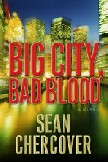 Big City, Bad Blood
Big City, Bad Blood
by Sean Chercover
(William Morrow, 2007; 294 p.)
Ray Dudgeon is a former journalist working as a private investigator in Chicago, hoping he can bring about more real change as a detective than he could as a reporter. Bob Loniski is a Hollywood locations manager, renting a warehouse on the South Side to film a new movie titled Final Revenge. But when Bob sees too much, he becomes un witting witness in a case against Frank DiMarco, a crook with significant ties to the Outfit. Now the Outfit wants Bob dead, and Ray is the only one standing in their way.
Ray takes the case to protect Bob, but he is beset by obstacles, and meanwhile, the other witnesses are turning up dead. Ray's investigation eventually leads him deep into Outfit politics, the Chicago sex trade, blackmail and corrupt public officials. Ray might be able to unravel the mystery, but will it be soon enough to save his client?
Big City, Bad Blood is a fast-paced crime novel filled with twists and turns, yet leading to a satisfying conclusion — but not too satisfying, because this book has all the makings of being the first in a series.
This is a story without clear cut good guys and bad guys. The characters have complex allegiances and motivations, which gives Big City, Bad Blood a ring of truth. Ray Dudgeon is far from faultless, and he may enjoy the more violent aspects of his work a little too much. Yet the story is told from his point of view, so readers also know he cares deeply for the people in his life, and he inspires great loyalty and friendship in others. It makes Ray just sympathetic enough to keep the reader firmly on his side.
Author Sean Chercover grew up in Toronto, but he earned his BA at Columbia College Chicago and currently splits his time between the two cities. Big City, Bad Blood is his first novel, although he has extensive experience writing for print, television and film. Chercover is also a former private investigator. He worked as a PI in both Chicago and New Orleans. This comes as little surprise given the level of realism he achieves in the book.
Big City, Bad Blood is a sharply written debut novel, with a tough protagonist and gritty crime drama that captures the essence of Chicago. It is highly recommended.
— Alice Maggio
Reviews Tue Jan 23 2007
The Christian Science Monitor reviews House of Meetings, the new novel by Martin Amis, and declares that "the story ends with a muted fizzle." Amis will be in town this Saturday at the Lookingglass Theatre to talk to Victoria Lautman of WFMT as part of the Writers on the Record series. See Slowdown for the details.
— Alice Maggio
Reviews Wed Nov 29 2006
Thomas Pynchon's new book, Against the Day, is set in 1893 right in the heart of the Chicago World's Fair. Both Newcity and PopMatters have reviews of the celebrated writer's newest work, with Newcity calling the effort rewarding, though "one can spend twenty, thirty hours of a weekend reading it and barely make a dent...like dropping a penny into an open manhole" and PopMatters summing it up by saying, "Thomas Pynchon requires commitment." If you've read it, what's your take?
— Veronica Bond
Reviews Wed Nov 08 2006
Usually you have to wait until an author puts out a collection of their short stories or some sort of anthology series collects what they deem the best of the brightest of whatever theme or time period on which they've chosen to focus. What happens if you don't have time to read the New Yorker, but still want a short story treat every now and then? Featherproof Books has your answer.
While the local small press publishes full-length novels, they also offer smaller bites of literature to "[whet] your drying palate with cool milky prose." Their Light Reading Series features short stories from both local and out of town authors, some of whose names may already be recognizable, and others whose names you'll surely enjoy getting to know. The mini-books are all downloadable PDF files that are formatted to be printed on regular 8 ½" x 11" paper. Featherproof's website includes directions on how to match the printed page numbers to produce the quarter-sheet sized books—"Crease it like you mean it," they instruct, and, "Don't forget: color is pretty." Color is pretty, but don't fret if you're stuck with a printer that works only in monochrome. The printing process is fairly low maintenance and, with a couple of staples, in just a few minutes you've got your own little book to tote around.
Featherproof has navigated such diverse topics as failed love, competitive familial golf games and vampires in graveyards. After the end of a serious relationship, a young woman questions whether it will ever be possible to fall in love again in Andrea Claire Johnson's "This Is." "The questions now is: This love, this intimacy, this longing—can it find a home, a place with someone else?" Johnson asks, only to leave the question as unanswered for us as it is for her narrator. Zach Stage's brief, one page "The Nightman" describes a scene that is familiar to anyone who's ever been on a bad date. The story is simple and amusing and it works because even if we haven't been in that specific circumstance, we will certainly sympathize with the wish to be pulled away by a mysterious call in the midst of a trying situation. Jeb Gleason-Allured and Todd Dills are notable for their editorial efforts on the literary broadsheet The2ndHand and here the two contribute their unique brand of eccentric and unpredictable prose. Gleason-Allured's "Shooting Music" recounts a romantic night with Annie Oakley, while Dills's "Grandpa's Brag Book" describes a highly competitive game of golf in which a Bugs Bunny head cover, "meant to go on a particular day's winner's driver," brings out bitterness and resentment in this group of brothers, fathers and grandfathers.
Two of the most intriguing stories are Pete Coco's "The Feast of Saint Eichatadt" and Elizabeth Crane's "Donovan's Closet." "The vampires were back," Coco's story begins. "It used to be they would only come into the cemetery at night. They'd smoke their dope and leave a mess of plastic snack bags and Styrofoam coffee cups for Gravey and me to clean up in the morning." The opening is completely unexpected and unlike any of the other stories in the Light Reading Series. Nineteen years old and married to the former cheerleader who is pregnant with his baby, Gabe is in danger of losing his job at St. Vitus's cemetery due to financial cutbacks. Although he's not completely enamored of his job, Gabe has grown used to seeing vampires lurking about the grounds and takes an interest in the little girl who has started showing up there. That the vampires turn out to be far more innocuous that you'd ever think makes for an amusing end to this suspenseful and wonderfully weird story.
"Donovan's Closet" inhabits a completely different realm—that of the woman, hesitant and scared to fully allow herself to be in a new relationship. Usually attracted to what she describes as the "Cute Bitter Hipster," Elizabeth Crane's narrator falls hard for the chemistry student/drummer who tells her that she reminds him of his favorite story. Unbeknownst to Donovan, she falls in love with his lemon-scented closet and uses the key to his apartment to spend time there while he's out. After an awakening in a Barney's dressing room she finds she needs the closet less and, perhaps, Donovan more. There's no explanation for this girl's closet-bound activities, but like the narrator's reliance on her Magic 8 Ball, behaviors in relationships often defy reason.
You've got to admit it: the mini-book is an ingenious idea. Small enough to stuff in a bag or back pocket, light so it doesn't weight you down, and short enough to finish on a bus or El ride, Featherproof has found an excellent way to bring the writing to the people. Completely free (although you can make a donation via PayPal if you're able), Featherproof's Light Reading Series is indeed the perfect little drink to quench a parched literary throat.
~*~
Visit Featherproof Books at www.featherproof.com to download the mini-books, check out their latest releases and find out where they'll make their next appearance.
— Veronica Bond
Reviews Wed Oct 25 2006
When I was a kid I loved ghost stories, even though they did give me nightmares. Although I read lots of scary stories, my favorite supernatural tales were about local Chicago hauntings. The legend of Resurrection Mary was a favorite, but it wasn't the scariest. Oh, no. I still vividly remember the first time I heard the terrifying story of what happened at St. Rita's Church at 63rd and Fairfield that one fateful All Soul's Day in 1961. I was in fifth grade, and one of my teachers told us the tale around this time of year. I didn't sleep for a week. And if you don't know the story of St. Rita's, then you need to check out these books.
Chicago Haunts: Ghostlore of the Windy City Rev. ed.
by Ursula Bielski
(Lake Claremont Press, 1998)
More Chicago Haunts: Scenes from Myth and Memory
by Ursula Bielski
(Lake Claremont Press, 2000)
These two collections by local historian and self-described ghosthunter Ursula Bielski are good places to start. The storytelling style is engaging without being sensationalist. Both books are well-researched and include source citations and bibliographies. Even if you are immune to the allure of scary stories, Chicago Haunts and More Chicago Haunts provide a unique perspective of the city's history. Chicago Haunts includes retellings of many of the most well-known Chicago ghost stories, such as the devil at Hull House, the St. Valentine's Day massacre, the tragic fire at Our Lady of the Angels and, yes, the incident at St. Rita's Church. More Chicago Haunts includes many lesser-known but no less compelling stories, from Maxwell Street apparitions to hauntings in Lincoln Square.
Chicago's Street Guide to the Supernatural: A Guide to Haunted and Legendary Places In and Near the Windy City
by Richard T. Crowe, with Carol Mercado
(Carolando Press, 2000)
As the founder of Chicago Supernatural Tours, Richard Crowe has been conducting ghost tours around the city for more than 30 years. This book is like holding a month's worth of tours in your hands. More than 70 sites are covered in this Street Guide to the Supernatural, which should keep even the most dedicated amateur ghosthunter busy for some time. The accounts of the apparitions and spooky occurrences that make each place notable are clearly written and sometimes include personal anecdotes from his tour experiences. Each site in the book is also accompanied by an address, photo and status of the haunting, such as "dormant," "ongoing," or "sporadic but active."
Graveyards of Chicago: The People, History, Art, and Lore of Cook County Cemeteries
by Matt Hucke and Ursula Bielski
(Lake Claremont Press, 1999)
Although not a ghost book exactly, any lover of ghost stories knows cemeteries are favorites sites for hauntings. Graveyards of Chicago introduces readers to more than 60 cemeteries and burial sites in and around Chicago. Each entry includes the address and phone number of the location, photos and brief descriptions with historical information about the cemetery. Celebrities, historical figures and other persons of interest buried at the cemetery are also noted.
Windy City Ghosts Rev. ed.
by Dale Kaczmarek
(Ghost Research Society, 2006)
Windy City Ghosts II Rev. ed.
by Dale Kaczmarek
(Ghost Research Society, 2006)
Author Dale Kazmarek, founder of the locally-based Ghost Research Society, is also well-known in Chicago's ghostlore community. These two collections are the result of Kazmarek's own research and experience exploring the area's haunted sites. The stories include supernatural occurrences at Lake Forest College, the George Stickney mansion and the LaGrange Public Library. There are also accounts of the I-57 murders, the crash of Flight 191 and the "ghostly boy of St. Charles Road," among many others.
Weird Illinois: Your Travel Guide to Illinois' Local Legends and Best Kept Secrets
by Troy Taylor, Mark Moran and Mark Sceurman
(Barnes & Noble, 2005)
Weird Illinois is not exclusively a ghost book, but it does include several chapters dedicated to "unexplained phenomena," ghost stories and cemeteries. It is also one of the best-looking books of the bunch, with appealing graphics and generously illustrated with full-color photos. Entries are brief and the tone is light-hearted, but Weird Illinois is undeniably fun to read. Plus, because the book covers the entire state, there are many anecdotes and sites in Weird Illinois that are not found in the other books listed here.
— Alice Maggio
Reviews Wed Oct 18 2006
Throughout the country and the world there are people gathered together in secret. What they do is unknown to many and what they celebrate is never so cherished as by these few. These are the members Sherlockian societies, bound by their inimitable love of the great detective Sherlock Holmes. For their annual colloquium, the Newberry Library recently delved into the world of Sherlock Holmes and his creator, Sir Arthur Conan Doyle, for "Re-Collections," a look at some of Doyle's original writings and published works.
 "For some of you, this may be a once in a lifetime chance to see these books," Daniel Posnansky intoned excitedly, referring to the Conan Doyle pieces from his personal collection, lent to the library for special display. "You may have heard of the well-known bookish writer, one Nicholas Basbanes's recent tome Among the Gently Mad. Should you take a moment to peruse it, you will find that Dan Posnansky, that's me, is just such one of these gently mad book collectors," he began, standing amidst the propped up posters of the honored Victorian author. A member of the Baker Street Irregulars, a group founded in 1934 by Christopher Morley with members including such famous names as Presidents Roosevelt and Truman and Sir Isaac Asimov as well as all the Newberry's colloquium speakers, Posnansky's talk focused on Doyle's views of the United States. Indeed, many of Holmes's adventures featured visitors from the United States – from the vengeful Jefferson Hope fleeing Utah in A Study in Scarlet to the New Jersey born Irene Adler in Adventures of Sherlock Holmes to the North Carolina murders in The Hound of the Baskervilles – and one can conclude that Doyle himself had a certain affection for the land. Posnansky confirmed this by reading from an original letter, penned by Doyle himself, expressing his belief in a powerful partnership between America and his English home.
"For some of you, this may be a once in a lifetime chance to see these books," Daniel Posnansky intoned excitedly, referring to the Conan Doyle pieces from his personal collection, lent to the library for special display. "You may have heard of the well-known bookish writer, one Nicholas Basbanes's recent tome Among the Gently Mad. Should you take a moment to peruse it, you will find that Dan Posnansky, that's me, is just such one of these gently mad book collectors," he began, standing amidst the propped up posters of the honored Victorian author. A member of the Baker Street Irregulars, a group founded in 1934 by Christopher Morley with members including such famous names as Presidents Roosevelt and Truman and Sir Isaac Asimov as well as all the Newberry's colloquium speakers, Posnansky's talk focused on Doyle's views of the United States. Indeed, many of Holmes's adventures featured visitors from the United States – from the vengeful Jefferson Hope fleeing Utah in A Study in Scarlet to the New Jersey born Irene Adler in Adventures of Sherlock Holmes to the North Carolina murders in The Hound of the Baskervilles – and one can conclude that Doyle himself had a certain affection for the land. Posnansky confirmed this by reading from an original letter, penned by Doyle himself, expressing his belief in a powerful partnership between America and his English home.
Dr. C. Paul Martin explored another side of Arthur Conan Doyle – that of his life as a doctor. One of Martin's first slides was the contents page of the University of Minnesota Medical Bulletin where the first listed article was "Arthur Conan Doyle: Detective and Doctor." Martin went on to show an issue of the New England Journal of Medicine with an article on medical detectives that featured Doyle's work and the Medical Casebook of Dr. Arthur Conan Doyle, a special find from Martin's own collection. He described Doyle as something of a Renaissance man who could claim titles as diverse as military correspondent, law reformer and spiritualist in addition to doctor and writer. In fact, Sherlock Holmes's namesake remains as famous as his creator: a physician at Harvard, Oliver Wendell Holmes is best known for his poetry, but is also believed to have conducted the first forensic investigation in the United States.
 Picking up where Posnansky left off, the colloquium's final speaker, Glen Miranker, may also be considered among the "gently mad." "What is it that makes a book a Book?" he asks, positing that, "Many books have a tale to tell beyond what is printed." Miranker followed three of the Holmes books as they made their way into the public. Doyle is quoted as saying that he "only meant to write one little book, A Study in Scarlet." That little book was first published in Beeton's Christmas Annual in 1897, and it was Doyle's response to detective fiction, in which its protagonists arrive magically at their conclusions with little logical or analytical thought. However, it was Doyle's second Holmes adventure, The Sign of Four, that fully immersed the character in the public consciousness. Although the pirated reprints of the book meant Doyle earned little profit, they did help turn Doyle into a public figure in the United States. These cheap reprints brought literature to the lower classes, and Miranker showed thirty-nine different pirated versions of the book he has incorporated into his own collection. It's easy to wonder if the world would be a different place without these pirated books and whether such items as an as yet unobtainable jacketed 1892 British first edition of Adventures of Sherlock Holmes would hold such wonder for Miranker or whether these tales would have created such inspiration in each of the day's speakers.
Picking up where Posnansky left off, the colloquium's final speaker, Glen Miranker, may also be considered among the "gently mad." "What is it that makes a book a Book?" he asks, positing that, "Many books have a tale to tell beyond what is printed." Miranker followed three of the Holmes books as they made their way into the public. Doyle is quoted as saying that he "only meant to write one little book, A Study in Scarlet." That little book was first published in Beeton's Christmas Annual in 1897, and it was Doyle's response to detective fiction, in which its protagonists arrive magically at their conclusions with little logical or analytical thought. However, it was Doyle's second Holmes adventure, The Sign of Four, that fully immersed the character in the public consciousness. Although the pirated reprints of the book meant Doyle earned little profit, they did help turn Doyle into a public figure in the United States. These cheap reprints brought literature to the lower classes, and Miranker showed thirty-nine different pirated versions of the book he has incorporated into his own collection. It's easy to wonder if the world would be a different place without these pirated books and whether such items as an as yet unobtainable jacketed 1892 British first edition of Adventures of Sherlock Holmes would hold such wonder for Miranker or whether these tales would have created such inspiration in each of the day's speakers.
The Newberry Library currently has several items of Doyleana on public display, including that first edition of Beeton's Christmas Annual and pages inscribed with Doyle's own handwriting, items that indeed may be seen only once in a lifetime for even the most ardent Holmes fanatics. From medical articles citing Holmes's logical approach to clothing ads employing the image of the impeccable detective to long sought after rare editions of Doyle's work selling for thousands of dollars, no one would be able to deny the impact this character has had on general society, but perhaps the impact is greatest for those who devote their time to these secret Holmes societies. Moderator Donald J. Terras of Chicago's own Hounds of the Baskerville ended the colloquium with "Sonnet 221B," a poem that is accepted as a ritual goodbye for many Sherlockian societies. "Here, though the world explode, these two survive, and it is always eighteen ninety-five," the sonnet ends, a nearly perfect statement of Doyle's continuing influence. Even more perfect, though, is the answer to Dr. Martin's opening question: "Does everyone believe that Sherlock Holmes and Dr. Watson existed?" The resounding "Yes!" that filled the room says everything.
~*~
Check out the Newberry Library’s website for more information about their collections, upcoming events and programs.
— Veronica Bond
Reviews Wed Oct 04 2006
Living in the city, one misses out on autumn. Trees can be scarce, so it is difficult to watch the leaves turn. Or, if they are like the trees on my street, they always look a bit pale and have a number of dead, bare branches year-round. So, how does one tell when it's autumn? To experience the full glory of the fall season, one must venture beyond the brick and concrete grid of Chicago.
Trees in Illinois will be reaching their peak colors through the next few weeks, so this is a great time to head outdoors. And, whether you want to plan an afternoon adventure or a weekend getaway, the following books may help you get started.
 60 Hikes within 60 Miles, Chicago: Including Aurora, Elgin and Joliet
60 Hikes within 60 Miles, Chicago: Including Aurora, Elgin and Joliet
by Ted Villaire
(Menasha Ridge Press, 2005)
If your boots were made for walking, this may be the book for you. 60 Hikes within 60 Miles, Chicago profiles 60 trails around Chicago area, examining each trail from the point-of-view of the hiker. Busse Woods, the Fox River Trail, the Little Red Schoolhouse, a hike near Fermilab and an Oak Park history walk are just some of the places featured in the book. The guide provides detailed trail descriptions, including degree of difficulty, length of the trail, estimated hiking time, elevation profiles and GPS-based trail maps. Routes are also noted for other qualities, so you can find the best hikes for bird watching, for walking with kids or hiking with your dog.
Biking Illinois: 60 Great Road Trips and Trail Rides
by David Johnsen
(Trails Books, 2006)
If you would rather hit the trails on a bicycle, check out Biking Illinois. Sixty is the magic number again, but Biking Illinois covers trails and routes throughout the state, providing useful information just for cyclists. Plan a ride through the Shawnee National Forest in far southern Illinois, or take a trip closer to home along the Illinois & Michigan Canal. Each site includes a trail description, detailed map, and tips about local history, attractions, finding food or where to get bicycle repairs should you have a mishap along the way. Visit the companion website for Biking Illinois to read about Johnsen's personal experiences on some of the trails, and to find corrections and updates to information in the book.
 Quick Escapes Chicago: 26 Weekend Getaways In and Around the Windy City, 5th ed.
Quick Escapes Chicago: 26 Weekend Getaways In and Around the Windy City, 5th ed.
by Bonnie Miller Rubin, Marcy Mason
(Globe Pequot Press, 2003)
Want to get away for a few days? Pick up this book to start planning a Columbus Day weekend holiday. Quick Escapes Chicago features 26 easy weekend trips around the Midwest, all within a few hours' drive of the city. Go hiking in Starved Rock State Park in Utica, Ill., or see the fall colors in beautiful Brown County, Indiana. Drive up to Traverse City, Mich., or do the bed and breakfast thing in historic Galena, Ill. Quick Escapes Chicago includes tips on lodging, restaurants, attractions and more for each of the sites featured.
Off the Beaten Path, Illinois, 8th ed.
by Bob Puhala
(Globe Pequot Press, 2005)
The most recent edition of Illinois Off the Beaten Path may offer the best of both worlds. It contains suggestions for trips that can be accomplished in a day, plus places to visit for longer stays. Visit the Garden of the Gods near Harrisburg, or travel to Illinois Amish country near Arcola. Or, if you want a trip closer to home, plan a day at Chain O'Lakes State Park in north suburban Lake County. Destinations are divided by areas of the state, so finding a place nearby — or farther away — is easy. Illinois Off the Beaten Path claims to help travelers "go beyond the usual tourist attractions," but Illinois natives will have at least a passing familiarity with most of the places in the book. That doesn't mean natives have been there or done that, however, so Illinois Off the Beaten Path may remind you of some of those places you've always meant to visit but haven't gotten around to yet. Maybe this autumn is the time to get there at last.
— Alice Maggio
Wed Sep 27 2006
The eleventh selection for the Chicago Public Library's One Book, One Chicago program is Jhumpa Lahiri's Pulitzer Prize-winning collection of short stories, Interpreter of Maladies. Although the stories' characters are of Indian nationality and their names and the lands from which they hail may be unrecognizable in the American consciousness, Lahiri focuses on themes that are universal to the human experience. As a result, her writing has a richly colored feeling and her musings on family, love and the feeling of foreignness never seem distant from the heart and the mind.
"Mr. Kapasi had never thought of his job in such complimentary terms. To him it was a thankless occupation. He found nothing noble in interpreting people's maladies, assiduously translating the symptoms of so many swollen bones, countless cramps of bellies and bowels, spots on people's palms that changed color, shape, or size." So writes Lahiri in the titular story, describing Mr. Kapasi, a man giving a tour to the Das family and whose occupation is, literally, to interpret patients' ailments in a hospital where little Gujarati is spoken. Although the family on the tour is Indian, they came from New Jersey and "dressed as foreigners did," rendering them tourists in their own land. It's obvious that the marriage is failing and Mrs. Das's interest in Mr. Kapasi's work conjures up his own romantic fantasies, at least until she confides that one of their sons is not her husband's child and asks Mr. Kapasi for his help with this malady, her secret. He concedes that he is, however, only an interpreter of languages, not guilt or transgressions.
The first story in the book, "A Temporary Matter," follows another failing marriage and the husband's attempts to rebuild what he once had with his wife before they became parents of a stillborn child. When the couple's electricity is temporarily cut off each evening, Shukumar uses this opportunity to get closer to his wife –- with no lights they must eat dinner together, by candlelight, instead of taking their plates to their separate places in the house. "He remembered their first meals there, when they were so thrilled to be married, to be living together in the same house at last, that they would just reach for each other foolishly, more eager to make love than to eat." The perils of pregnancy also makes an appearance in "The Treatment of Bibi Haldar," a story about a girl whose illness remains unexplainable to doctors, therapists, priests and anyone else who might try to diagnose her. She envies the girls who get married and questions if it is so wrong for her to want a husband and a child. When Bibi's outrages confine her to a storage room, she's found months later to be pregnant, refusing to reveal who the father might be. And it seems that once the child is born, all of Bibi's ailments have disappeared.
Each story in Interpreter of Maladies feels complete. There's a beginning, middle and end for each one and, in a short space, Lahiri manages to give her characters enough definition to carry the stories she creates for them. There's a real sense of history, emotion and motivation behind these names, which is something that can be rightfully expected from a novel, but which is often left by the wayside in stories of only fifteen or twenty pages. There isn't one of the book's nine stories that doesn't feel whole or, alternately, feels longer than necessary. Short stories are, by definition, not an opportunity to churn out what is really a wayward attempt at a half-novel, and Lahiri minds the limitations she puts on herself by writing in this form. These stories may be inspired by the author's Indian background, but they're never so specific as to alienate any of her readers. They're about the difficulties of marriage, the listlessness of unfulfilled lives and the idiosyncrasies of individual personalities. While these may be frequently visited topics, Lahiri's perfectly chosen words and phrases keep them from being mundane. More importantly, she doesn't employ odd tenses or a halting exposition or graphic sex scenes to generate interest in her writing; she simply writes well. That, more than anything, makes for a worthwhile read.
~*~
For more information on the One Book, One Chicago program, please visit the Chicago Public Library's website. You can also find a schedule of special events and a CPL book club near you where you can join in the citywide discussion. Ms. Lahiri will be at the Harold Washington Library on October 9 to talk about her acclaimed book with Mary A. Dempsey, Commissioner of the CPL.
— Veronica Bond
Reviews Wed Sep 20 2006
Although the summer of 2006 is drawing to a close, it is not too late to travel back in time to a rural Indiana resort and relive the summer of 1926. Hudson Lake is the most recent novel by local author Laura Mazzuca Toops and it captures all the frenzy of the era of speakeasies, jazz music and bootleg gin.
The story centers around the musicians and visitors at the Blue Lantern dance hall on Hudson Lake in LaPorte County, Indiana. There we meet Joy, a free-spirit running from a troubled past. We are told that Joy is "an assumed name and an assumed attitude, because joy wasn't something she always felt, or at least something she hadn't felt in years." But as her past catches up with her, Joy finds it harder and harder to keep up the facade.
Opposite Joy and her "brassy bobbed red hair" and "wide rouged mouth" is Harriet Braun, a straight-laced pre-med student at Indiana University who is spending her summer working at the Hudson Hotel. Harriet is dating Rudy, a fellow Indiana U. student studying architecture and a man Harriet describes as a "typical alpha male." Although Rudy is a steady guy, Harriet's heart will be sorely tested when she meets a certain jazz musician playing at the Blue Lantern.
Bix Beiderbecke is the talented cornet player who unwittingly comes between Joy and Harriet. At the beginning of the story Joy is sleeping with Bix, but she can't admit to herself that she loves him until it's too late. Bix becomes attracted to the intelligent Harriet, but she is torn between her feelings for the charming musician and her loyalty to Rudy. But Bix may not be able to love anyone or anything more than his insatiable need for alcohol.
Add a Chicago gangster working for Al Capone who wants a piece of the bootlegging business in LaPorte County, plus a group of Ku Klux Klan members who want to rid their town of the fast-living denizens of the Blue Lantern, and Hudson Lake will never be the same again.
In Hudson Lake Laura Mazzuca Toops weaves a fictional story from many real historical people and places. Bix Beiderbecke is the primary example. Although the love-triangle between Bix and Joy and Harriet may never have happened, Bix Beiderbecke was a celebrated jazz musician in the 1920s, and the facts revealed about his life in the novel are based on Toops's research.
The end of Hudson Lake feels a bit rushed as Toops ties up the loose ends of her narrative. The story rapidly jumps forward from 1926 to 1929, 1931 and finally up to 1939 as we learn the often tragic fates of the characters. But, by carrying the story to its ultimate conclusion, Toops strengthens the feeling of the whole book — that the seemingly carefree Jazz Age also had a terrible dark side.
Toops has an obvious affection for her subject, which is hard to resist, and a deep knowledge of the time period. She skillfully brings the 1920s to life with the right historical touches without overburdening the reader with too many extraneous facts. That's a difficult balancing act for many historical fiction writers, but Toops pulls it off.
Hudson Lake is a fun, sexy Jazz Age story about a summer that changes the lives of everyone at Hudson Lake, and it just might be a great book to help keep you warm on these increasingly chilly days.
~*~
Visit the official website of author Laura Mazzuca Toops at www.lauratoops.com to find out more about Hudson Lake, including information about the real-life locations featured in the novel. Hudson Lake is available from the publisher, Twilight Times Books, and local bookstores. Plus, see Twilight Times Books to read an excerpt from Hudson Lake.
— Alice Maggio
Reviews Wed Sep 06 2006
This is a story about fathers and sons. This is a story about the past and the present, about wrongs done and rights attempted. This is a story about having no regrets and waiting for the end. This is Billy Jones's story.
Billy Jones, a young man living in Chicago, is at the center of this story focusing on his South Carolina family. Told in three parts and in several voices, Todd Dills's Sons of the Rapture offers a bevy of characters that are as loud and brash as they are desperate and downtrodden. In the first chapter alone we're introduced to five different points of view. Billy starts us out on the journey, but soon we meet Artichoke Heart (A.H.), a sometime hit man, and sometime frontman who performs at neighborhood festivals. Billy and A.H. meet at the Taste of Kedzie where he also meets Elsa, a French girl who enters and departs from Billy's life, eventually reentering as a sort of personal savior. Although we're told the tiara-wearing musician was born William Harmony Jones – no relation to Billy – A.H. never reveals why he's adopted his stage moniker for everyday life, but we never really have reason to question the choice. A character that daily sports pageantry headwear and claims to have carried out the will of a Brazilian gangster needs little explanation for his choice in names. Albert Ledbetter is the longtime friend of Johnny Jones, Billy's father, and acts as caretaker to Bobby Jones, Billy's younger brother, who is spending his days in prison for the murder of their mother years ago. Rounding out this first section is Clarence Hickman, a man in a yellow pickup truck, driving towards the Rapture.
All of these characters are ones you're never quite sure are telling the absolute truth. Billy and his father, Johnny, have a special flair for dressing up a story to suit their needs, and so great are their powers of persuasion that they have no trouble convincing others of these false truths. While Billy tells Elsa a disturbing, invented story about a friend who lost his genitalia in the war, he sneaks in the truth about his mentally handicapped brother who killed their mother, making it impossible to know when his stories are real and when they're elaborate fiction. Johnny, too, skews the truth in favor of his needs. When he learns of his mother's affair with Thorpe Storm, a bigoted senator who continues to use racially charged epithets well into Billy's day, he construes the facts to date the affair as occurring before his birth, thus furthering the hatred of the man he's taken upon himself to label as his father. Says Albert of Johnny's stubbornness in spite of all the traits he shares with Jeremiah Jones, his true father: "Two blues won't make a brown, but logic be damned: the young man Johnny determined he'd prove the falsity to the world in ways counter to pointing out the laws of trait inheritance, or so he'd said, and I was pulled along by the force of his adamant nature, a persuasion inherent in his insanity quite impossible for my naïve mind to resist."
The second section of the novel belongs entirely to the persuasive, present-day Johnny. Rich from his father's inheritance and having started monthly payments to Albert for checking in on his jailed son, this is Johnny's life with his cowboy-like friends, drinking, doing drugs, and hooking up with a feisty woman who bears a disturbing resemblance to his dead wife. It seems as though Johnny's only wish is to while away the rest of his life, but it's not until we reach the third chapter that we learn where he's going. Back in Billy's point of view, the third section finds our narrator drunk and out of a job when Albert visits him to deliver the message that his father is coming to see him, a proclamation that Billy doesn't quite believe and deems a "prophetic event." The event does occur and with it comes all the chaos and the glory that follows the Jones' lives, with Johnny leading a herd of cattle down the Dan Ryan Expressway, a literal interpretation of the city's "Cows on Parade." The question, then, is whether this is the Rapture Billy and Johnny have been waiting for.
Although the structure of the novel may leave some a bit confused – there's no apparent reason why the first part is told in so many points of view while the second and third parts are singular in thought – the story is, thankfully, interesting enough and Dills's writing is engaging enough to keep us wanting to know more. The transfer of viewpoints in the first chapter works because Dills gives us enough time to get to know each character before switching to another. He doesn't just give us snapshots, but portraits of his characters, including the city of Chicago among them. As much as the reader can picture Billy in his confederate gray topcoat, walking with his hands shoved in the pockets, shoulders hunched up around his ears, worn down jeans and shoes, portraying himself as someone who either has little money or wants to appear that way, the city is given as much personalization. "The sterile angles of the Chicago grid," Dills writes, "the little blocks of neighborhoods, the right angles, the 45-degree angles of diagonal flow streets that connected them all, the fine curve of the expressway gray and desolate and jammed on its way downtown." This is a story about that desolation, that connection, those little blocks that bring all of these vivid characters together, all awaiting the Rapture and what it will bring to them.
Todd Dills is the editor and publisher of The2ndHand, a quarterly broadsheet offering the latest in local writing. Featherproof Books will celebrate the publication of Sons of the Rapture with a release party on September 14 at the Hideout.
— Veronica Bond
Reviews Sat Jun 24 2006
Time Out Chicago reviews Black Writing from Chicago, a recently published anthology of local African-American authors from the past and present, and calls it a "heady mix of old-school agitprop and literary wonderment, a testimony not only to the multitude of great black writers who were born or passed through here, but to the myriad forms literature may take." Read the full review online. You can also find out more about the book from the Southern Illinois University Press.
— Alice Maggio
Reviews Thu Jun 15 2006
The Boston Globe gives the thumbs up to the new history of the Haymarket riot by James Green titled Death in the Haymarket: A Story of Chicago, the First Labor Movement and the Bombing That Divided Gilded Age America. The reviewer writes, "Fast-growing, self-confident to the point of brashness, already the city of big shoulders, Chicago was rapidly becoming a world-class city, the capital, in a sense, of the American heartland. But it was a city of conflict and division. Green does a wonderful job of delineating the cross currents of labor, capital, politics, and terrorism."
— Alice Maggio







 There is a long list of amazing local authors writing about Chicago and its nearby neighborhoods, but few of them do it with such poise as
There is a long list of amazing local authors writing about Chicago and its nearby neighborhoods, but few of them do it with such poise as  This month, University of Chicago Press published
This month, University of Chicago Press published 
 Jessa Crispin, the founder of the literary blog
Jessa Crispin, the founder of the literary blog 


 In the year 2511, Chicago isn't somewhere you'd want to live anymore. "Everywhere they looked, rust dominated the landscape...Occasionally, a dim pale ray of light would sneak past the thick gray clouds, laying down an orange glaze across a surface...In the far distance over Lake Michigan, an electric storm sparked..."
In the year 2511, Chicago isn't somewhere you'd want to live anymore. "Everywhere they looked, rust dominated the landscape...Occasionally, a dim pale ray of light would sneak past the thick gray clouds, laying down an orange glaze across a surface...In the far distance over Lake Michigan, an electric storm sparked..."

 It's the 50th anniversary of Shel Silverstein's
It's the 50th anniversary of Shel Silverstein's 













 On Sept. 30, the University of Chicago Press published
On Sept. 30, the University of Chicago Press published  I have to be honest--it's been awhile since I've read an entire collection of poetry, but
I have to be honest--it's been awhile since I've read an entire collection of poetry, but 
 Body Geographic by
Body Geographic by  I can't help it, I love books about Jews! Maybe I'm always looking to make sense of my own Jewishness, or maybe I just love the idea of inside jokes that the rest of the goyische world won't get. Give me more Purim jokes! And oh man, that Tu B'Shevat, amirite?
I can't help it, I love books about Jews! Maybe I'm always looking to make sense of my own Jewishness, or maybe I just love the idea of inside jokes that the rest of the goyische world won't get. Give me more Purim jokes! And oh man, that Tu B'Shevat, amirite? Samantha Irby's much anticipated collection of essays, Meaty, is out today. If you're not sure whether or not to purchase it, read contributor Alba Machado's and my discussion below! (Hint:
Samantha Irby's much anticipated collection of essays, Meaty, is out today. If you're not sure whether or not to purchase it, read contributor Alba Machado's and my discussion below! (Hint: 

 At first glance there's something sepia-toned about
At first glance there's something sepia-toned about  When I was a kid, the world was kind of a disappointment. Back then, playing pretend was serious. It was boot camp. It was the training I knew I'd need to one day inhabit the glorious, magical, hidden worlds that would inevitably reveal themselves. Any day, I thought. Any day.
When I was a kid, the world was kind of a disappointment. Back then, playing pretend was serious. It was boot camp. It was the training I knew I'd need to one day inhabit the glorious, magical, hidden worlds that would inevitably reveal themselves. Any day, I thought. Any day. Oh, the kids. They have trouble finding and then committing to a career. The ones who do graduate college often move back in with their parents. And instead of diligently pursuing the next milestone, they're likely to spend their time hanging out with friends and chasing after the latest expensive fashion trends.
Oh, the kids. They have trouble finding and then committing to a career. The ones who do graduate college often move back in with their parents. And instead of diligently pursuing the next milestone, they're likely to spend their time hanging out with friends and chasing after the latest expensive fashion trends. Look up a list of "Best Chicago Books" and you'll find the usual suspects trotted out over and over again: your Nelson Algrens, your Saul Bellows. If you're lucky, you'll get a Richard Wright or even a Sandra Cisneros. And don't get me wrong, these authors are on this list for good reason. But we all know there is much more to Chicago literature. There is great science fiction and fantasy, thrillers and mystery, young adult fiction... and writers who have written worthy books, yes, in the past two decades.
Look up a list of "Best Chicago Books" and you'll find the usual suspects trotted out over and over again: your Nelson Algrens, your Saul Bellows. If you're lucky, you'll get a Richard Wright or even a Sandra Cisneros. And don't get me wrong, these authors are on this list for good reason. But we all know there is much more to Chicago literature. There is great science fiction and fantasy, thrillers and mystery, young adult fiction... and writers who have written worthy books, yes, in the past two decades. 
 Last Wednesday night at
Last Wednesday night at  Heavyweight Champion of Nothing is a novel by local author
Heavyweight Champion of Nothing is a novel by local author  Title onward, the theme of H. Melt's
Title onward, the theme of H. Melt's  You might expect a book with the title
You might expect a book with the title 
 By Jenny Gavacs
By Jenny Gavacs For any long-time Chicagoan who would care to read a biography about the man, Richard M. Daley needs no introduction. But with the vast, undeniable influence the former Chicago mayor had on this city (not to mention the entire trajectory of state and national politics), his dense, multi-faceted legacy deserves assessment.
For any long-time Chicagoan who would care to read a biography about the man, Richard M. Daley needs no introduction. But with the vast, undeniable influence the former Chicago mayor had on this city (not to mention the entire trajectory of state and national politics), his dense, multi-faceted legacy deserves assessment.

 Kathryn Born's
Kathryn Born's  Rooney is co-founder of
Rooney is co-founder of 
 These days, the words "Rod Blagojevich" are bound to get a smirk or a groan from nearly anyone in Illinois. After all, the jailed ex-Governor's fall from grace was both a national spectacle and another embarrassment for a state with a history of corruption and imprisoned chief executives. Even back in December 2008, when FBI transcripts emerged of the former Governor's alleged attempts to sell President-Elect Barack Obama's Senate seat to the highest bidder, all the details were overshadowed by Blagojevich's infamous line, "I mean, I, I've got this thing and it's fucking - golden...and I, I'm just not giving it up for fucking nothing."
These days, the words "Rod Blagojevich" are bound to get a smirk or a groan from nearly anyone in Illinois. After all, the jailed ex-Governor's fall from grace was both a national spectacle and another embarrassment for a state with a history of corruption and imprisoned chief executives. Even back in December 2008, when FBI transcripts emerged of the former Governor's alleged attempts to sell President-Elect Barack Obama's Senate seat to the highest bidder, all the details were overshadowed by Blagojevich's infamous line, "I mean, I, I've got this thing and it's fucking - golden...and I, I'm just not giving it up for fucking nothing." There were two brothers who grew up in a trailer park, and one of them who used to run around in his Underoos snipped off his best friend's nipple with a nail clipper.
There were two brothers who grew up in a trailer park, and one of them who used to run around in his Underoos snipped off his best friend's nipple with a nail clipper. 







































 Big City, Bad Blood
Big City, Bad Blood "For some of you, this may be a once in a lifetime chance to see these books," Daniel Posnansky intoned excitedly, referring to the Conan Doyle pieces from his personal collection, lent to the library for special display. "You may have heard of the well-known bookish writer, one Nicholas Basbanes's recent tome Among the Gently Mad. Should you take a moment to peruse it, you will find that Dan Posnansky, that's me, is just such one of these gently mad book collectors," he began, standing amidst the propped up posters of the honored Victorian author. A member of the Baker Street Irregulars, a group founded in 1934 by Christopher Morley with members including such famous names as Presidents Roosevelt and Truman and Sir Isaac Asimov as well as all the Newberry's colloquium speakers, Posnansky's talk focused on Doyle's views of the United States. Indeed, many of Holmes's adventures featured visitors from the United States – from the vengeful Jefferson Hope fleeing Utah in A Study in Scarlet to the New Jersey born Irene Adler in Adventures of Sherlock Holmes to the North Carolina murders in The Hound of the Baskervilles – and one can conclude that Doyle himself had a certain affection for the land. Posnansky confirmed this by reading from an original letter, penned by Doyle himself, expressing his belief in a powerful partnership between America and his English home.
"For some of you, this may be a once in a lifetime chance to see these books," Daniel Posnansky intoned excitedly, referring to the Conan Doyle pieces from his personal collection, lent to the library for special display. "You may have heard of the well-known bookish writer, one Nicholas Basbanes's recent tome Among the Gently Mad. Should you take a moment to peruse it, you will find that Dan Posnansky, that's me, is just such one of these gently mad book collectors," he began, standing amidst the propped up posters of the honored Victorian author. A member of the Baker Street Irregulars, a group founded in 1934 by Christopher Morley with members including such famous names as Presidents Roosevelt and Truman and Sir Isaac Asimov as well as all the Newberry's colloquium speakers, Posnansky's talk focused on Doyle's views of the United States. Indeed, many of Holmes's adventures featured visitors from the United States – from the vengeful Jefferson Hope fleeing Utah in A Study in Scarlet to the New Jersey born Irene Adler in Adventures of Sherlock Holmes to the North Carolina murders in The Hound of the Baskervilles – and one can conclude that Doyle himself had a certain affection for the land. Posnansky confirmed this by reading from an original letter, penned by Doyle himself, expressing his belief in a powerful partnership between America and his English home. Picking up where Posnansky left off, the colloquium's final speaker, Glen Miranker, may also be considered among the "gently mad." "What is it that makes a book a Book?" he asks, positing that, "Many books have a tale to tell beyond what is printed." Miranker followed three of the Holmes books as they made their way into the public. Doyle is quoted as saying that he "only meant to write one little book, A Study in Scarlet." That little book was first published in Beeton's Christmas Annual in 1897, and it was Doyle's response to detective fiction, in which its protagonists arrive magically at their conclusions with little logical or analytical thought. However, it was Doyle's second Holmes adventure, The Sign of Four, that fully immersed the character in the public consciousness. Although the pirated reprints of the book meant Doyle earned little profit, they did help turn Doyle into a public figure in the United States. These cheap reprints brought literature to the lower classes, and Miranker showed thirty-nine different pirated versions of the book he has incorporated into his own collection. It's easy to wonder if the world would be a different place without these pirated books and whether such items as an as yet unobtainable jacketed 1892 British first edition of Adventures of Sherlock Holmes would hold such wonder for Miranker or whether these tales would have created such inspiration in each of the day's speakers.
Picking up where Posnansky left off, the colloquium's final speaker, Glen Miranker, may also be considered among the "gently mad." "What is it that makes a book a Book?" he asks, positing that, "Many books have a tale to tell beyond what is printed." Miranker followed three of the Holmes books as they made their way into the public. Doyle is quoted as saying that he "only meant to write one little book, A Study in Scarlet." That little book was first published in Beeton's Christmas Annual in 1897, and it was Doyle's response to detective fiction, in which its protagonists arrive magically at their conclusions with little logical or analytical thought. However, it was Doyle's second Holmes adventure, The Sign of Four, that fully immersed the character in the public consciousness. Although the pirated reprints of the book meant Doyle earned little profit, they did help turn Doyle into a public figure in the United States. These cheap reprints brought literature to the lower classes, and Miranker showed thirty-nine different pirated versions of the book he has incorporated into his own collection. It's easy to wonder if the world would be a different place without these pirated books and whether such items as an as yet unobtainable jacketed 1892 British first edition of Adventures of Sherlock Holmes would hold such wonder for Miranker or whether these tales would have created such inspiration in each of the day's speakers. 60 Hikes within 60 Miles, Chicago: Including Aurora, Elgin and Joliet
60 Hikes within 60 Miles, Chicago: Including Aurora, Elgin and Joliet Quick Escapes Chicago: 26 Weekend Getaways In and Around the Windy City, 5th ed.
Quick Escapes Chicago: 26 Weekend Getaways In and Around the Windy City, 5th ed.
